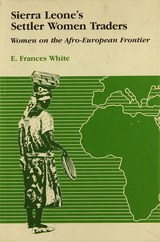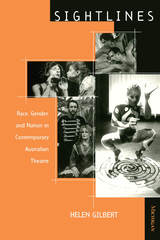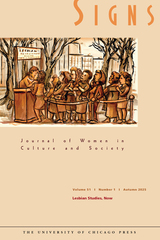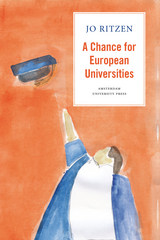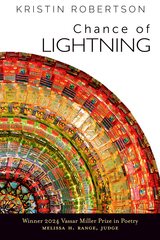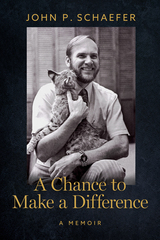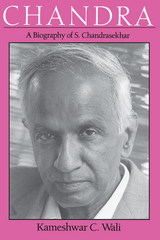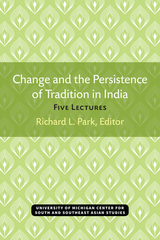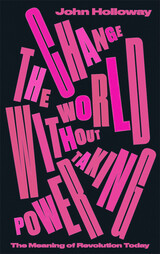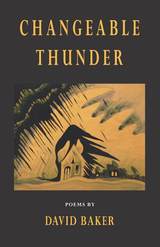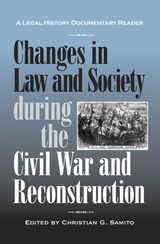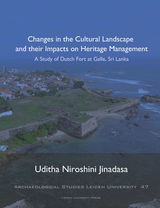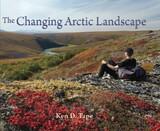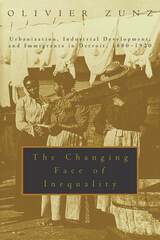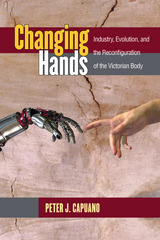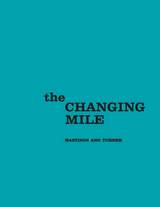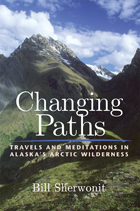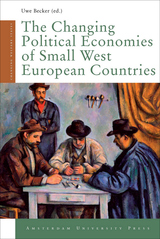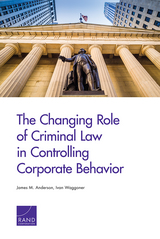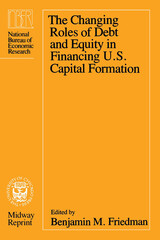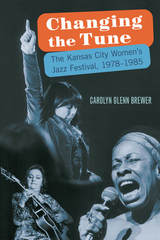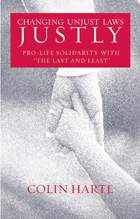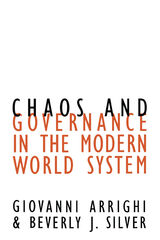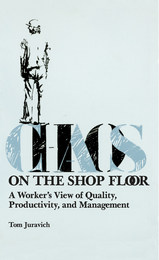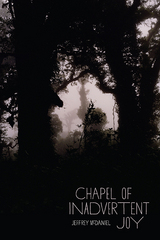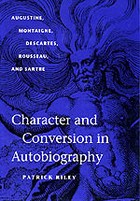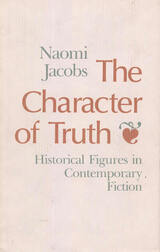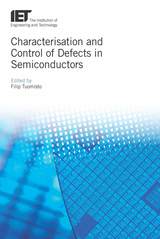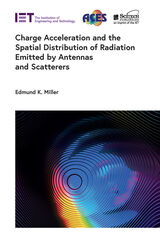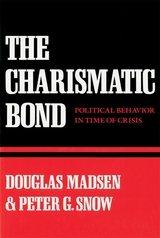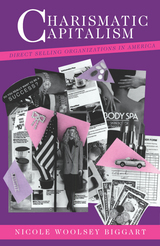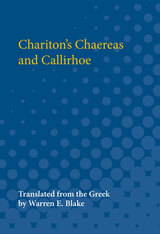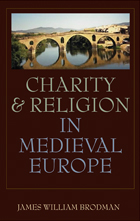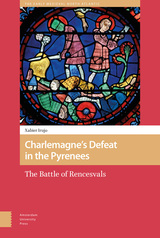A Chance for European Universities: Or: Avoiding the Looming University Crisis in Europe
Jo Ritzen
Amsterdam University Press, 2010 Though Europe’s universities are very well represented among the world’s top 200 universities, they are almost entirely absent from the top fifty. In this impassioned book, Jo Ritzen argues that European universities are economically, culturally, and socially underexploited, and he outlines a series of changes necessary to make these institutions more successful. He advocates reorganizing universities to favor innovation over bureaucracy, securing financing from private sources to meet the gaps left by public budget cuts, and matching and selecting students with an eye toward effectively educating for an international labor market. With such reinvention, universities would become instrumental to strengthening the European competitive position through economic innovation, increased social cohesion, and a more vibrant cultural dynamism.
 A Chance for Love: The World War II Letters of Marian Elizabeth Smith and Lt. Eugene T. Petersen, USMCR
Eugene Peterson
Michigan State University Press, 1998 In mid-February 1944 Marian Elizabeth Smith, a young Wisconsin woman, met Marine Corps Lieutenant Eugene T. Petersen on the passenger train, El Capitan, as it made its 42-hour run from Los Angeles to Chicago. After a brief acquaintance, he left the United States to join the Third Marine Division on Guam and eventually to take part in the battle for Iwo Jima in February and March of 1945. The collected letters of their subsequent 18-month correspondence reveal much about wartime life at home and abroad. This correspondence represents a time capsule of current events as Smith and Petersen discuss Franklin Roosevelt, the United Nations, internationalism, popular movies, the French aviator and poet Antoine de St. Exupery, the comic strip Barnaby, and the frustrations of dealing with sometimes less-than- enlightened parents. The loss of Marian's brother during the bombing of Ploesti, Rumania, in June 1944, brought Petersen and Smith closer together, and after hundreds of letters the "chance for love" Marian had suggested early in their correspondence evolved into a marriage that has endured for more than half a century.
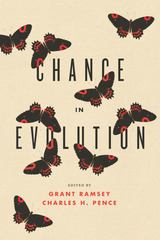 Chance in Evolution
Edited by Grant Ramsey and Charles H. Pence
University of Chicago Press, 2016 Humans, however much we would care to think otherwise, do not represent the fated pinnacle of ape evolution. The diversity of life, from single-celled organisms to multicellular animals and plants, is the result of a long, complex, and highly chancy history. But how profoundly has chance shaped life on earth? And what, precisely, do we mean by chance? Bringing together biologists, philosophers of science, and historians of science, Chance in Evolution is the first book to untangle the far-reaching effects of chance, contingency, and randomness on the evolution of life.
The book begins by placing chance in historical context, starting with the ancients and moving through Darwin and his contemporaries, documenting how the understanding of chance changed as Darwin’s theory of evolution by natural selection developed into the modern synthesis, and how the acceptance of chance in Darwinian theory affected theological resistance to it. Subsequent chapters detail the role of chance in contemporary evolutionary theory—in particular, in connection with the concepts of genetic drift, mutation, and parallel evolution—as well as recent empirical work in the experimental evolution of microbes and in paleobiology. By engaging in collaboration across biology, history, philosophy, and theology, this book offers a comprehensive and synthetic overview both of the history of chance in evolution and of our current best understanding of the impact of chance on life on earth.
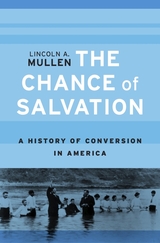 The Chance of Salvation: A History of Conversion in America
Lincoln A. Mullen
Harvard University Press, 2017 The United States has a long history of religious pluralism, and yet Americans have often thought that people’s faith determines their eternal destinies. The result is that Americans switch religions more often than any other nation. The Chance of Salvation traces the history of the distinctively American idea that religion is a matter of individual choice.
Lincoln Mullen shows how the willingness of Americans to change faiths, recorded in narratives that describe a wide variety of conversion experiences, created a shared assumption that religious identity is a decision. In the nineteenth century, as Americans confronted a growing array of religious options, pressures to convert altered the basis of American religion. Evangelical Protestants emphasized conversion as a personal choice, while Protestant missionaries brought Christianity to Native American nations such as the Cherokee, who adopted Christianity on their own terms. Enslaved and freed African Americans similarly created a distinctive form of Christian conversion based on ideas of divine justice and redemption. Mormons proselytized for a new tradition that stressed individual free will. American Jews largely resisted evangelism while at the same time winning converts to Judaism. Converts to Catholicism chose to opt out of the system of religious choice by turning to the authority of the Church.
By the early twentieth century, religion in the United States was a system of competing options that created an obligation for more and more Americans to choose their own faith. Religion had changed from a family inheritance to a consciously adopted identity.
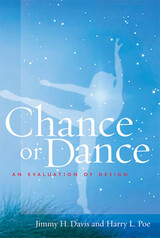 Chance or Dance: An Evaluation of Design
Jimmy H. Davis
Templeton Press, 2008 Chance or Dance provides an overview of design and clarification of the controversial Intelligent Design (ID) movement and ultimately concludes there is no scientific proof behind Intelligent Design. As the controversy over Intelligent Design has grown over the past few years, there is a tendency to confuse all statements about design with the Intelligent Design movement and to confuse any affirmation of creation with Scientific Creationism. Davis and Poe begin with a brief historical perspective of the design argument and then examine the significant breakthroughs in cosmology, math, physics, chemistry, and biology that have provided renewed speculation in design. The authors discuss that the idea of design is far more expansive than the ID movement’s version of it, evaluate Dawkins’ interpretation of genetic determinism, include a chapter that explores the tendency since Darwin to assume that the presence of an observable cause excludes the possibility of divine involvement; and introduce further reflections on wonder and awe that take into account the recent surge of interest in this area. The book concludes with an argument for the correlation between faith and sensory experience and suggests that science has successfully described processes but failed to explain origins. Chance or Dance is ideal for students and general readers interested in understanding how modern science gives evidence for nature’s creation by the Bible’s God.
A Chance to Make a Difference: A Memoir
John P. Schaefer
University of Arizona Press, 2025 John P. Schaefer was only thirty-six years old when he assumed the role of fifteenth president of the University of Arizona in 1971. The son of hardworking German immigrants, Schaefer grew up in Queens, New York, where childhood centered on sports, academics, and the great outdoors.
Earning a PhD in chemistry in 1958, Dr. Schaefer’s career skyrocketed through the ranks of academia, moving him from junior faculty to university president in a mere decade. As president, he led the University of Arizona through a transformational period of growth and is credited with securing the university’s status as a top-tier research institution.
A Chance to Make a Difference recounts poignant, eye-opening, and often humorous stories from childhood to presidency, revealing the characteristics of an inspiring university leader.
 A Chance to Solve Their Own Problems: Inside the New Methods Seeking to Remake Public Schools
Jal Mehta, Maxwell Yurkovsky, Kim Frumin, Amelia Peterson, Rebecca Horwitz-Willis, and James Jack
Harvard University Press An inside look at the promise and pitfalls of continuous improvement and design in education—showing why reform sometimes succeeds, sometimes fails, and what leaders can do about it.
While the headlines have been consumed by No Child Left Behind, Common Core, charter schools, and battles over DEI, a group of practitioners have been trying to develop a new set of approaches to taking on the perennial problems of schooling. And rather than betting on a new program or a new policy, these reformers have bet instead on a different way of working that they hope will yield much better results. By teaching educators across the nation and the world how to examine data, build systems, and organize for improvement, they are aiming to make existing systems more problem-focused, disciplined, and imaginative. Thousands of schools and districts have taken up these methods, including many of the largest school districts in the country.
In A Chance to Solve Their Own Problems, a team of Harvard researchers investigates how these methods work in action. Drawing on hundreds of interviews as well as in-depth case studies, they offer a definitive account of why these methods succeed in some contexts and falter in others, illuminating the crucial roles of relationships, equity commitments, organizational context, and politics. The book reveals that the most successful applications are less about rigid adherence to a process and more about a human-centered approach that prioritizes trust, relationships, and a culture of learning.
By blending clear-eyed critique with a constructive vision, A Chance to Solve Their Own Problems invites scholars, leaders, and practitioners to rethink how improvement work is organized, supported, and sustained. It is both a cautionary tale and a guide for those committed to making lasting progress in the complex human systems we call schools.
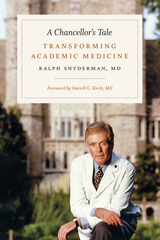 A Chancellor's Tale: Transforming Academic Medicine
Ralph Snyderman, MD
Duke University Press, 2016 During his fifteen years as chancellor, Dr. Ralph Snyderman helped create new paradigms for academic medicine while guiding the Duke University Medical Center through periods of great challenge and transformation. Under his leadership, the medical center became internationally known for its innovations in medicine, including the creation of the Duke University Health System—which became a model for integrated health care delivery—and the development of personalized health care based on a rational and compassionate model of care. In A Chancellor's Tale Snyderman reflects on his role in developing and instituting these changes.
Beginning his faculty career at Duke in 1972, Snyderman made major contributions to inflammation research while leading the Division of Rheumatology and Immunology. When he became chancellor in 1989, he learned that Duke’s medical center required bold new capabilities to survive the advent of managed care and HMOs. The need to change spurred creativity, but it also generated strong resistance.
Among his many achievements, Snyderman led ambitious institutional growth in research and clinical care, broadened clinical research and collaborations between academics and industry, and spurred the fields of integrative and personalized medicine. Snyderman describes how he immersed himself in all aspects of Duke’s medical enterprise as evidenced by his exercise in "following the sheet" from the patient's room to the laundry facilities and back, which allowed him to meet staff throughout the hospital. Upon discovering that temperatures in the laundry facilities were over 110 degrees he had air conditioning installed. He also implemented programs to help employees gain needed skills to advance. Snyderman discusses the necessity for strategic planning, fund-raising, and media relations and the relationship between the medical center and Duke University. He concludes with advice for current and future academic medical center administrators.
The fascinating story of Snyderman's career shines a bright light on the importance of leadership, organization, planning, and innovation in a medical and academic environment while highlighting the systemic changes in academic medicine and American health care over the last half century. A Chancellor's Tale will be required reading for those interested in academic medicine, health care, administrative and leadership positions, and the history of Duke University.
 Chances for Peace: Missed Opportunities in the Arab-Israeli Conflict
By Elie Podeh
University of Texas Press, 2015 Drawing on a newly developed theoretical definition of “missed opportunity,” Chances for Peace uses extensive sources in English, Hebrew, and Arabic to systematically measure the potentiality levels of opportunity across some ninety years of attempted negotiations in the Arab-Israeli conflict. With enlightening revelations that defy conventional wisdom, this study provides a balanced account of the most significant attempts to forge peace, initiated by the world’s superpowers, the Arabs (including the Palestinians), and Israel. From Arab-Zionist negotiations at the end of World War I to the subsequent partition, the aftermath of the 1967 War and the Sadat Initiative, and numerous agreements throughout the 1980s and 1990s, concluding with the Annapolis Conference in 2007 and the Abu Mazen-Olmert talks in 2008, pioneering scholar Elie Podeh uses empirical criteria and diverse secondary sources to assess the protagonists’ roles at more than two dozen key junctures. A resource that brings together historiography, political science, and the practice of peace negotiation, Podeh’s insightful exploration also showcases opportunities that were not missed. Three agreements in particular (Israeli-Egyptian, 1979; Israeli-Lebanese, 1983; and Israeli-Jordanian, 1994) illuminate important variables for forging new paths to successful negotiation. By applying his framework to a broad range of power brokers and time periods, Podeh also sheds light on numerous incidents that contradict official narratives. This unique approach is poised to reshape the realm of conflict resolution.
The Chances of Surviving Death
William Pepperell Montague
Harvard University Press In the longest and most closely argued of recent Ingersoll lectures, William Montague reaches this conclusion: “The third and highest prospect for eternity is that personal life, at least, not only goes on growing but wins to some strange mystic union with that greater Life in which it has its little being. Precious and indispensable for value as personality appears, there is about it something tragically wanting; and as in every finite thing, but more acutely, a sort of wound that cries for healing. If that vaguely longed-for supplement to our being could come, and come without the annihilation of such being as we already have, then would eternity hold out to us the prospect of something unimaginably more than mere survival.” Readers who follow him to these final words will experience unusual intellectual stimulation.
Chandra: A Biography of S. Chandrasekhar
Kameshwar C. Wali
University of Chicago Press, 1992 Chandra is an intimate portrait of a highly private and brilliant man, Subrahmanyan Chandrasekhar, a Nobel laureate in physics who has been a major contributor to the theories of white dwarfs and black holes.
"Wali has given us a magnificent portrait of Chandra, full of life and color, with a deep understanding of the three cultures—Indian, British, and American—in which Chandra was successively immersed. . . . I wish I had the job of reviewing this book for the New York Times rather than for Physics Today. If the book is only read by physicists, then Wali's devoted labors were in vain."—Freeman Dyson, Physics Today
"An enthralling human document."—William McCrea, Times Higher Education Supplement
"A dramatic, exuberant biography of one of the century's great scientists."—Publishers Weekly
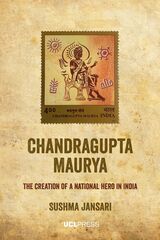 Chandragupta Maurya: The Creation of a National Hero in India
Sushma Jansari
University College London, 2023 An account of the rise from obscurity to icon of Mauryan emperor Chandragupta Maurya.
The writing and reception of history fundamentally influence how we engage with the past, and nowhere is that more clear than in the rise from obscurity of Chandragupta Maurya (350–295 BCE), the first emperor of the Mauryan Empire. The key moment in the transformation of Chandragupta into a contemporary national icon was a peace-making meeting between Chandragupta and Seleucus, founder of the Seleucid empire and one of Alexander the Great’s generals. But no reliable account exists in early sources, and it is not even clear which ruler was victorious in battle. That uncertainty enabled British and Indian historians of the nineteenth and twentieth centuries to interpret the sources in radically different ways. With Chandragupta representing India and Seleucus standing in for Britain, British scholars argued that Seleucus defeated Chandragupta, while Indian academics contended the opposite. In India, the image of Chandragupta as an idealized hero who vanquished the foreign invader has prevailed and found expression in contemporary popular culture. In plays, films, television series, comic books, and historical novels, Chandragupta is the powerful and virtuous Hindu ruler par excellence. Sushma Jansari shows how that transformation came about and points out the lessons we can learn from it for understanding other historical figures.
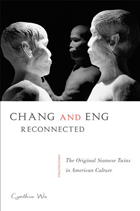 Chang and Eng Reconnected: The Original Siamese Twins in American Culture
Cynthia Wu
Temple University Press, 2012 Conjoined twins Chang and Eng Bunker have fascinated the world since the nineteenth century. In her captivating book, Chang and Eng Reconnected, Cynthia Wu traces the “Original Siamese Twins” through the terrain of American culture, showing how their inseparability underscored tensions between individuality and collectivity in the American popular imagination. Using letters, medical documents and exhibits, literature, art, film, and family lore, Wu provides a trans-historical analysis that presents the Bunkers as both a material presence and as metaphor. She also shows how the twins figure in representations of race, disability, and science in fictional narratives about nation building. As astute entrepreneurs, the twins managed their own lives; nonetheless, as Chang and Eng Reconnected shows, American culture has always viewed them through the multiple lenses of difference.
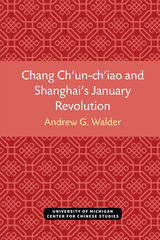 Chang Ch’un-ch’iao and Shanghai’s January Revolution
Andrew G. Walder
University of Michigan Press, 1977 Shanghai’s January Revolution was a highly visible and, by all accounts, crucially important event in China’s Cultural Revolution. Its occurrence, along with the subsequent attempt to establish a “commune” form of municipal government, has greatly shaped our understanding both of the goals originally envisaged for the Cultural Revolution by its leaders and of the political positions held by the new corps of Party leaders thrust upward during its course—most notably Chang Ch’un ch’iao. At this interpretive level, the events in Shanghai seem to embody in microcosm the issues and conflicts in Chinese politics during the Cultural Revolution as a whole, while at the same time shaping our conception of what these larger issues and conflicts were. At the more general, theoretical level, however, the events in Shanghai provide us with an unusual opportunity (thanks to Red Guard raids on Party offices) to view the internal workings of the Party organization under a period of stress and to observe unrestrained interest group formation and mass political conflict through the press accounts provided by these unofficial groups themselves. The January Revolution thus provides us with an opportunity to develop better our more abstract, theoretical understanding of the functioning of the Chinese political system and the dynamics of the social system in which it operates. [1]
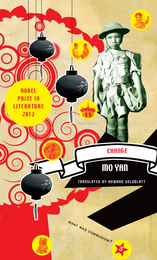 Change
Mo Yan
Seagull Books, 2010 In Change, Mo Yan, the 2012 Nobel Laureate in Literature, personalizes the political and social changes in his country over the past few decades in this novella disguised as autobiography—or vice-versa. Unlike most historical narratives from China, which are pegged to political events, Change is a representative of “people’s history,” a bottom-up rather than top-down view of a country in flux. By moving back and forth in time and focusing on small events and everyday people, Mo Yan breathes life into history by describing the effects of larger-than-life events on the average citizen. “Through a mixture of fantasy and reality, historical and social perspectives, Mo Yan has created a world reminiscent in its complexity of those in the writings of William Faulkner and Gabriel García Márquez, at the same time finding a departure point in old Chinese literature and in oral tradition.”— Nobel Committee for Literature “If China has a Kafka, it may be Mo Yan. Like Kafka, Yan has the ability to examine his society through a variety of lenses, creating fanciful, Metamorphosis-like transformations or evoking the numbing bureaucracy and casual cruelty of modern governments.” —Publishers Weekly, on Shifu: You'll Do Anything for a Laugh
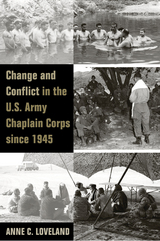 Change and Conflict in the U.S. Army Chaplain Corps since 1945
Anne C. Loveland
University of Tennessee Press, 2014 Army chaplains have long played an integral part in America’s armed forces. In addition
to conducting chapel activities on military installations and providing moral and spiritual
support on the battlefield, they conduct memorial services for fallen soldiers, minister
to survivors, offer counsel on everything from troubled marriages to military bureaucracy,
and serve as families’ points of contact for wounded or deceased soldiers—all while
risking the dangers of combat alongside their troops. In this thoughtful study, Anne C.
Loveland examines the role of the army chaplain since World War II, revealing how the
corps has evolved in the wake of cultural and religious upheaval in American society and
momentous changes in U.S. strategic relations, warfare, and weaponry.
From 1945 to the present, Loveland shows, army chaplains faced several crises that
reshaped their roles over time. She chronicles the chaplains’ initiation of the Character
Guidance program as a remedy for the soaring rate of venereal disease among soldiers in
occupied Europe and Japan after World War II, as well as chaplains’ response to the challenge
of increasing secularism and religious pluralism during the “culture wars” of the
Vietnam Era. “Religious accommodation,” evangelism and proselytizing, public prayer,
and “spiritual fitness”provoked heated controversy among chaplains as well as civilians in
the ensuing decades. Then, early in the twenty-first century, chaplains themselves experienced
two crisis situations: one the result of the Vietnam-era antichaplain critique, the
other a consequence of increasing religious pluralism, secularization, and sectarianism
within the Chaplain Corps, as well as in the army and the civilian religious community.
By focusing on army chaplains’ evolving, sometimes conflict-ridden relations with
military leaders and soldiers on the one hand and the civilian religious community on the
other, Loveland reveals how religious trends over the past six decades have impacted the
corps and, in turn, helped shape American military culture.
 Change and Continuity in Minangkabau: Local, Regional, and Historical Perspectives on West Sumatra
Lynn L. Thomas
Ohio University Press, 1985 Social scientists have long recognized many apparent contradictions in the Minangkabau. The world’s largest matrilineal people, they are also strongly Islamic and, as a society, remarkably modern and outward looking.
Focusing on Minangkabau proper, and treating several adjacent areas as well, this collection examines the resilience and adaptability of the Minangkabau in the face of outside political and economic pressures and of distortions in social science and legal theory. Individual studies address issues of kinship and other forms of social organization, ideology, and political and economic life. Together, they emphasize the integrity of Minangkabau social forms while revealing fascinating patterns of continuity and change in Minangkabau culture.
This collection will be of particular interest to anthropologists specializing in Southeast Asia, but it will also be important reading for those concerned with the issue of change and continuity in the third world generally.
 Change and Harmonization in European Education
Robert Beck
University of Minnesota Press, 1971
Change and Harmonization in European Education was first published in 1971. Minnesota Archive Editions uses digital technology to make long-unavailable books once again accessible, and are published unaltered from the original University of Minnesota Press editions.Changes are taking place in European education, changes which, in many respects, point to a trend toward harmonization or integration of educational policies among various countries of Europe. Professor Beck surveys these developments in secondary and higher education in both Western and Eastern Europe and shows how common challenges and goals are being identified and met. The study is based on extensive travel and research.As the author explains, Europeans, whether they live in England or in the Soviet Union, are committed to such goals as equality of educational opportunity, whatever one’s sex, place of residence, or family background. At the same time, Europeans are aware of such common problems as the difficulty of providing places in colleges or universities for all who would like to attend them. There is a common awareness among the different nationals of the desirability of making vocational-technical education more prestigious than it has been in the past, and of the need to temper the chauvinism that has characteristically run through much of the teaching until recently.Changes in the educational systems of West Germany and Sweden receive especially close scrutiny in this study, and there is emphasis on the influence which several international agencies and organizations have exerted on the process of educational harmonization, among them, the Organization for Economic Cooperation and Development, the Council for Cultural Cooperation (of the Council of Europe), the European Institute for University Studies, and the Comparative Education Society in Europe.
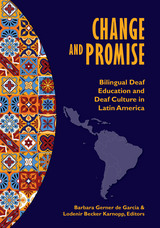 Change and Promise: Bilingual Deaf Education and Deaf Culture in Latin America
Barbara Gerner Gerner de Garcia
Gallaudet University Press, 2016 Within the past few decades, there has been great progress in deaf education in Latin America and growth in the empowerment of their Deaf communities. However, there is little awareness outside that region of these successes. For the first time, this book provides access, in English, to scholarly research in these areas. Written by Latin American Deaf and hearing contributors, Change and Promise provides a counter argument to external, deficit views of the Latin American Deaf community by sharing research and accounts of success in establishing and expanding bilingual deaf education, Deaf activism, Deaf culture, and wider access for deaf children and adults.
Change and Promise describes the historical, cultural, and political contexts for providing bilingual deaf education in Latin America. Bilingual deaf education uses students’ sign language, while simultaneously giving them access to and teaching them the majority spoken/written language. This book describes current bilingual deaf education programs in the region that have increased society’s understandings of Deaf culture and sign languages. This cause, as well as others, have been championed by successful social movements including the push for official recognition of Libras, the sign language of Brazil. Change and Promise covers this expanding empowerment of Deaf communities as they fight for bilingual deaf education, sign language rights, and deaf civil rights.
Despite the vast political and cultural differences throughout Latin America, an epistemological shift has occurred regarding how Deaf people are treated and their stories narrated, from labeling “deaf as handicapped” to being recognized as a linguistic minority. This panoramic study of these challenges and triumphs will provide an invaluable resource for improving outcomes in deaf education and help to secure the rights of deaf children and adults in all societies.
Change and the Persistence of Tradition in India: Five Lectures
Richard L. Park, Editor
University of Michigan Press, 1971 The lectures presented in this volume were given during the summer of 1970 under the sponsorship of the CIC Summer Program on South Asia and the Center for South and Southeast Asian Studies of the University of Michigan. It should be recognized that these essays appear in revised lecture form, and not as fully polished scholarly papers. They carry nevertheless the authority—and no little verve—of experienced scholars concerned with both the traditions and the changes so characteristic of modern India. [v]
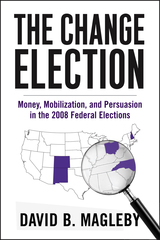 The Change Election: Money, Mobilization, and Persuasion in the 2008 Federal Elections
Edited by David Magleby
Temple University Press, 2010 The 2008 election was an extraordinary event that represented change at many levels. The candidates’ innovative campaigns changed how funds were raised, how voters were mobilized, and how messages were communicated through advertising and the internet. Parties and interest groups played their own important role in this historic election. In The Change Election, David Magleby assembles a team of accomplished political scientists to provide an in-depth analysis of this groundbreaking presidential election. These scholars through a set of compelling case studies examine the competition for votes in a dozen competitive House and Senate contests and for the White House in five states: Ohio, North Carolina, New Hampshire, Colorado, and New Mexico. Backed by a wealth of data, and extensive interviews, the contributors offer an up-close look at the interactions of candidates' individual skills and personalities with the larger political forces at work in the election year. The book offers insights into the rapidly evolving organizational and technical aspects of campaigning. The dramatic success Obama and other candidates had in raising money—especially from small donors—is addressed along with how money was raised and spent by the candidates, party committees, and interest groups competing for votes. Building on a tested methodology, The Change Election explores the interplay of money and electioneering. Magleby builds on more than a decade of prior studies to show the ways participants in our electoral process have adapted to statutory and judicial decisions and how the 2008 election has the potential to transform American electoral politics.
Change in Agriculture: The Northern United States, 1820–1870
Clarence H. Danhof
Harvard University Press, 1969 American agriculture changed radically between 1820 and 1870. In turning slowly from subsistence to commercial farming, farmers on the average doubled the portion of their production places on the market, and thereby laid the foundations for today’s highly productive agricultural industry. But the modern system was by no means inevitable. It evolved slowly through an intricate process in which innovative and imitative entrepreneurs were the key instruments.
Change in Putin's Russia: Power, Money and People
Simon Pirani
Pluto Press, 2010 Simon Pirani investigates the interaction of power, money and people in Russia during the presidencies of Vladimir Putin and his successor Dmitry Medvedev.
Profiling the Putin team, including contingents from the security services and pro-market economic "reformers", Pirani argues that the economic growth it presided over during the oil boom was one-sided. The gap between rich and poor widened. Now the boom is over, inequalities will multiply further. As well as explaining Russia's economic trajectory, the book provides a unique account of the social movements that are working against an increasingly authoritarian government to change Russia for the better.
This is the perfect introduction for undergraduates approaching Russia for the first time and those who wish to know how Russia will change during the economic crisis.
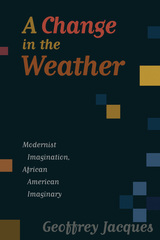 A Change in the Weather: Modernist Imagination, African American Imaginary
Geoffrey Jacques
University of Massachusetts Press, 2009
This book explores the impact of African American culture on modernist poetic language by placing black literature and culture at the center of an inquiry into the genealogy of avant-garde poetics. Geoffrey Jacques looks at how blackface minstrelsy, ragtime, vernacular languages, advertising copy, Freud's idea of the Uncanny, vaudeville, the cliché, and Tin Pan Alley–style song all influenced modernist poetry. In a key insight, Jacques points out that the black urban community in the United States did not live in ghettos during the years before World War I, but in smaller enclaves spread out among the general population. This circumstance helped catalyze African American culture's dramatic and surprising impact on the emergent avant-garde. By using a wide range of theoretical tools, Jacques poses new questions about literary, cultural, and social history, the history and structure of modernist poetic language, canon formation, and the history of criticism.This contribution to the ongoing debate over early twentieth-century culture presents modernism as an interracial, cross-cultural project, arguing for a new appreciation of the central role black culture played within it. Writers and artists whose works are discussed include Marianne Moore, Charles Chesnutt, Jean Toomer, Wallace Stevens, James A. Bland, Paul Laurence Dunbar, Gertrude Stein, Bert Williams, Zora Neale Hurston, Samuel Beckett, W. C. Handy, Hart Crane, and Clement Greenberg.
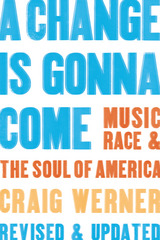 A Change Is Gonna Come: Music, Race & the Soul of America
Craig Werner
University of Michigan Press, 2006 ". . . extraordinarily far-reaching. . . . highly accessible."
—Notes
"No one has written this way about music in a long, long time. Lucid, insightful, with real spiritual, political, intellectual, and emotional grasp of the whole picture. A book about why music matters, and how, and to whom."
—Dave Marsh, author of Louie, Louie and Born to Run: The Bruce Springsteen Story
"This book is urgently needed: a comprehensive look at the various forms of black popular music, both as music and as seen in a larger social context. No one can do this better than Craig Werner."
—Henry Louis Gates, Jr., W.E.B. Du Bois Professor of the Humanities, Harvard University
"[Werner has] mastered the extremely difficult art of writing about music as both an aesthetic and social force that conveys, implies, symbolizes, and represents ideas as well as emotion, but without reducing its complexities and ambiguities to merely didactic categories."
—African American Review
A Change Is Gonna Come is the story of more than four decades of enormously influential black music, from the hopeful, angry refrains of the Freedom movement, to the slick pop of Motown; from the disco inferno to the Million Man March; from Woodstock's "Summer of Love" to the war in Vietnam and the race riots that inspired Marvin Gaye to write "What's Going On."
Originally published in 1998, A Change Is Gonna Come drew the attention of scholars and general readers alike. This new edition, featuring four new and updated chapters, will reintroduce Werner's seminal study of black music to a new generation of readers.
Craig Werner is Professor of Afro-American Studies at the University of Wisconsin, and author of many books, including Playing the Changes: From Afro-Modernism to the Jazz Impulse and Up Around the Bend: An Oral History of Creedence Clearwater Revival. His most recent book is Higher Ground: Stevie Wonder, Aretha Franklin, Curtis Mayfield, and the Rise and Fall of American Soul.
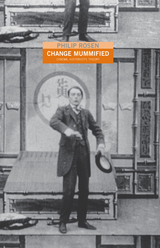 Change Mummified: Cinema, Historicity, Theory
Philip Rosen
University of Minnesota Press, 2001 An innovative study of the intersections between history and film. Exploring the modern category of history in relation to film theory, film textuality, and film history, Change Mummified makes a persuasive argument for the centrality of historicity to film as well as the special importance of film in historical culture. What do we make of the concern for recovering the past that is consistently manifested in so many influential modes of cinema, from Hollywood to documentary and postcolonial film? How is film related to the many modern practices that define themselves as configuring pastness in the present, such as architectural preservation, theme parks, and, above all, professional historical research? What is the relation of history in film to other media such as television and digital imaging? How does emphasizing the connection between film and modern historicity affect the theorization and historicization of film and modern media culture? Pursuing the full implications of film as cultural production, Philip Rosen reconceptualizes modern historicity as a combination of characteristic epistemological structures on the one hand, and the social imperative to regulate or manage time on the other. Emphasizing a fundamental constellation of pursuit of the real, indexical signification and the need to control time, he interrogates a spectrum of film theory and film texts. His argument refocuses the category of temporality for film and cultural theory while rethinking the importance of historicity. An original and sustained meditation on the historiographic status of cinematic signs, Change Mummified is both an intervention in film and media studies and an argument for the continuing necessity of modern historical thinking in its contradictions.
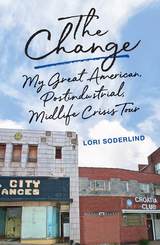 The Change: My Great American, Postindustrial, Midlife Crisis Tour
Lori Soderlind
University of Wisconsin Press, 2020 In the throes of a classic midlife crisis, Lori Soderlind takes a sabbatical from her community college job as a journalism professor. She sets out to travel across America's rusting heart with her fourteen-year-old dog, Colby, and a used camping trailer. Making pit stops in places like Buffalo and Rockford, she explores a deeply conflicted country going through its own crises and transformations. Even as she struggles with her own impulses, she finds life and resilience among the seemingly forlorn, abandoned artifacts of former industrial glory.
With humanity and humor, Soderlind's journey introduces quirky folks along the way, including Swannie Jim of Silo City and his fawn pit bull, Champ. She attempts to channel muckraking journalist Ida M. Tarbell and celebrates complicated characters, including Robert De Niro's heartbroken veteran in The Deer Hunter. Ultimately a romance—of Soderlind's love for America, her dog, the long-term partner she left behind, and the childhood crush she remembers with a big, aching pang—The Change offers daring and often hilarious insights into loss and acceptance, especially when it takes a while to get there.
Change the World Without Taking Power: The Meaning of Revolution Today
John Holloway
Pluto Press, 2019 This book is a profound search for a theory of social change. Through clearing away the cobwebs of revolutionary socialism, it renews the fight for the ending of capitalism and the construction of a new, fairer world.
After a century of failed attempts by radical projects, the concept of revolution itself is in crisis. By asking the deepest questions about the nature of humanity, work, capitalism, organisation and resistance, John Holloway looks sharply at modern protest movements and provides tools for creating new strategies.
First published in 2002, this book marked a shift in the understanding of Autonomism, Anarchism and Marxism, addressing the doubts activists had in their own political history and work, and helped form the perspectives of a new generation who are today changing the world.
Changeable Thunder: Poems
David Baker
University of Arkansas Press, 2001 Changeable Thunder marks David Baker's emergence as a major contemporary poet. To his abiding sense of the Midwest—its politics, people, and landscapes—Baker adds a powerful historical dimension, with poems ranging from Puritan New England to the modern subway. Of particular note are poems on the works of other writers, as he reanimates Shelley's letters, Samuel Sewall's diaries, and Walt Whitman's novel. With brilliant technique, dazzling formal variety, and moving intimacy, Baker's poems explore personal illness, erotic and familial passion, artistic creation, and the constant work and changing weather of one man's life.
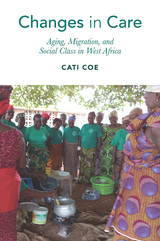 Changes in Care: Aging, Migration, and Social Class in West Africa
Cati Coe
Rutgers University Press, 2022 Africa is known both for having a primarily youthful population and for its elders being held in high esteem. However, this situation is changing: people in Africa are living longer, some for many years with chronic, disabling illnesses. In Ghana, many older people, rather than experiencing a sense of security that they will be respected and cared for by the younger generations, feel anxious that they will be abandoned and neglected by their kin. In response to their concerns about care, they and their kin are exploring new kinds of support for aging adults, from paid caregivers to social groups and senior day centers. These innovations in care are happening in fits and starts, in episodic and scattered ways, visible in certain circles more than others. By examining emergent discourses and practices of aging in Ghana, Changes in Care makes an innovative argument about the uneven and fragile processes by which some social change occurs.
There is a short film that accompanies the book, “Making Happiness: Older People Organize Themselves” (2020), an 11-minute film by Cati Coe. Available at: https://doi.org/doi:10.7282/t3-thke-hp15
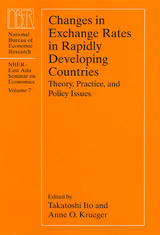 Changes in Exchange Rates in Rapidly Developing Countries: Theory, Practice, and Policy Issues
Edited by Takatoshi Ito and Anne O. Krueger
University of Chicago Press, 1999 The exchange rate is a crucial variable linking a nation's domestic economy to the international market. Thus choice of an exchange rate regime is a central component in the economic policy of developing countries and a key factor affecting economic growth.
Historically, most developing nations have employed strict exchange rate controls and heavy protection of domestic industry-policies now thought to be at odds with sustainable and desirable rates of economic growth. By contrast, many East Asian nations maintained exchange rate regimes designed to achieve an attractive climate for exports and an "outer-oriented" development strategy. The result has been rapid and consistent economic growth over the past few decades.
Changes in Exchange Rates in Rapidly Developing Countries explores the impact of such diverse exchange control regimes in both historical and regional contexts, focusing particular attention on East Asia. This comprehensive, carefully researched volume will surely become a standard reference for scholars and policymakers.
Changes in Law and Society during the Civil War and Reconstruction: A Legal History Documentary Reader
Edited by Christian G. Samito
Southern Illinois University Press, 2009 The first comprehensive collection of legal history documents from the Civil War and Reconstruction, this volume shows the profound legal changes that occurred during the Civil War era and highlights how law, society, and politics inextricably mixed and set American legal development on particular paths that were not predetermined. Editor Christian G. Samito has carefully selected excerpts from legislation, public and legislative debates, court cases, investigations of white supremacist violence in the South, and rare court-martial records, added his expert analysis, and illustrated the selections with telling period artwork to create an outstanding resource that demonstrates the rich and important legal history of the era.
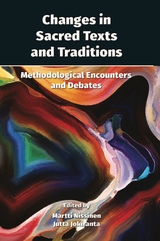 Changes in Sacred Texts and Traditions: Methodological Encounters and Debates
Martti Nissinen
SBL Press, 2024 This volume presents the work of the international, interdisciplinary research project Changes in Sacred Texts and Traditions (CSTT), whose members focused on cultural, ideological, and material changes in the period when the sacred traditions of the Hebrew Bible were created, transmitted, and transformed. Specialists in the textual study of the Hebrew and Greek Bibles, archaeology, Assyriology, and history, working across their fields of expertise, trace how changes occurred in biblical and ancient Near Eastern texts and traditions. Contributors Tero Alstola, Anneli Aejmelaeus , Rick Bonnie, Francis Borchardt, George J. Brooke, Cynthia Edenburg, Sebastian Fink, Izaak J. deHulster , Patrik Jansson, Jutta Jokiranta, Tuukka Kauhanen, Gina Konstantopoulos, Lauri Laine, Michael C. Legaspi, Christoph Levin, Ville Mäkipelto, Reinhard Müller, Martti Nissinen, Jessi Orpana, Juha Pakkala, Dalit Rom-Shiloni, Christian Seppänen, Jason M. Silverman, Saana Svärd, Timo Tekoniemi, Hanna Tervanotko, Joanna Töyräänvuori, and Miika Tucker demonstrate that rigorous yet respectful debate results in a nuanced and complex understanding of how ancient texts developed.
Changes in the Cultural Landscape and their Impacts on Heritage Management: A Study of Dutch Fort at Galle, Sri Lanka
Uditha Jinadasa
Leiden University Press, 2020 This book focuses on the practical challenges of managing a World Heritage listed historic city in a South Asian context. The focal point of the author’s research is Sri Lanka’s Galle Fort, a walled town, identified as the best-preserved colonial fort in South Asia. The costs and benefits of the fort’s World Heritage recognition to its local urban community, and to the colonial fort itself, are analyzed. Shown is how thirty years of the World Heritage project at Galle Fort changed a once small seaside walled town with dilapidated colonial buildings into a tourist hot-spot and prime real estate, thereby changing the lives of its inhabitants. It argues that the best practices of participatory and people-centered approaches of managing urban heritage at the global level are slow to progress at a local level.
 Changes in the Landscape: Humans and Nature in Nineteenth-Century Latin America
Edited by Jennifer L. French
Vanderbilt University Press, 2024 Changes in the Landscape is a collection of timely essays that bring the methodologies and commitments of ecocriticism to bear on the study of Latin American literature and cultural production. The book’s eleven chapters, written by some of the leading voices in the field, invite readers to consider how the relationship between humans and nonhuman nature was fundamentally transformed during a period when new modes of capitalist production were emerging in the region and around the world. Jennifer L. French’s introductory essay provides a historical and theoretical framework for the collection.
Ranging from the immediate aftermath of the Spanish‑American Wars of Independence (1810–1826) to the early twentieth century (1925), the volume’s essays cover a wide variety of genres and forms of cultural production, from José Hernández’s epic poem Martín Fierro to prose fiction, painting and photography, and the personal albums compiled by Spanish-American women. Individually and collectively, the essays engage with scientific writing as both a discourse of power and a source of potentially significant, even revelatory information about human and nonhuman nature. Changes in the Landscape enables readers to more fully understand the transition from colonial regimes to the ecocidal extractivism of the export boom (1870–1930) by drawing out and analyzing some of the cognitive resources and rhetorical strategies that were available to imagine, protest, or enact new norms and expectations regarding the relations between human and nonhuman life, be it the life of wildflowers, waterfalls, or Cuba’s Ciénaga de Zapata.
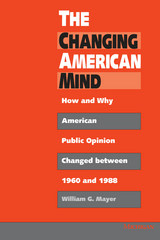 The Changing American Mind: How and Why American Public Opinion Changed Between 1960 and 1988
William G. Mayer
University of Michigan Press, 1992 Have Americans become more or less tolerant of racial discrimination? More or less supportive of abortion? Is a new tax revolt underway? Did a "new conservative mood" dominate elections and policy discussions in the early 1980s? Popular and academic discussions about the past and future of American politics often turn on the question of whether and how public opinion has changed. Yet for all the talk about such matters, observes political scientist William G. Mayer, there is surprisingly little hard evidence on many of these questions. The Changing American Mind is designed to fill that gap, by presenting a comprehensive history of American public opinion over the last three decades: how it changed, why it changed, and what difference that makes for American politics. The Changing American Mind is important reading for all who are interested in American politics and public opinion. Its appendixes, which include the results of more than 250 survey questions that have been asked regularly of national samples over the last three decades, make it an indispensable reference source for everyone who studies or participates in American politics.
The Changing Arctic Landscape
Ken Tape
University of Alaska Press, 2010 With this book, photographer Ken Tape sets changes in the landscape in stark relief, pairing decades-old photos of the arctic landscape of Alaska with photos of the same scenes taken in the present.
The resulting volume is a stunning reminder of inexorable change; divided into sections on vegetation, permafrost, and glaciers, the images show the startling effects of climate change. In addition, each section presents a short biography of a pioneering scientist who was instrumental in both obtaining the antique photographs and advancing the study of arctic ecosystems, as well as interviews with scientists who have spent decades working in Alaska for the United States Geological Survey. The Changing Arctic Landscape is a profile of transformation—complex and not yet fully understood.
 Changing Birth in the Andes: Culture, Policy, and Safe Motherhood in Peru
Lucia Guerra-Reyes
Vanderbilt University Press, 2019 In 1997, when Lucia Guerra-Reyes began research in Peru, she observed a profound disconnect between the birth care desires of health personnel and those of indigenous women. Midwives and doctors would plead with her as the anthropologist to "educate women about the dangerous inadequacy of their traditions." They failed to see how their aim of achieving low rates of maternal mortality clashed with the experiences of local women, who often feared public health centers, where they could experience discrimination and verbal or physical abuse. Mainly, the women and their families sought a "good" birth, which was normally a home birth that corresponded with Andean perceptions of health as a balance of bodily humors.
Peru's Intercultural Birthing Policy of 2005 was intended to solve these longstanding issues by recognizing indigenous cultural values and making biomedical care more accessible and desirable for indigenous women. Yet many difficulties remain.
Guerra-Reyes also gives ethnographic attention to health care workers. She explains the class and educational backgrounds of traditional birth attendants and midwives, interviews doctors and health care administrators, and describes their interactions with local families. Interviews with national policy makers put the program in context.
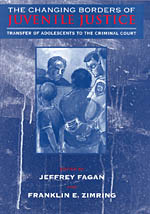 The Changing Borders of Juvenile Justice: Transfer of Adolescents to the Criminal Court
Edited by Jeffrey Fagan and Franklin E. Zimring
University of Chicago Press, 2000 Since the 1960s, recurring cycles of political activism over youth crime have motivated efforts to remove adolescents from the juvenile court. Periodic surges of crime—youth violence in the 1970s, the spread of gangs in the 1980s, and more recently, epidemic gun violence and drug-related crime—have spurred laws and policies aimed at narrowing the reach of the juvenile court. Despite declining juvenile crime rates, every state in the country has increased the number of youths tried and punished as adults.
Research in this area has not kept pace with these legislative developments. There has never been a detailed, sociolegal analytic book devoted to this topic. In this important collection, researchers discuss policy, substantive procedural and empirical dimensions of waivers, and where the boundaries of the courts lie. Part 1 provides an overview of the origins and development of law and contemporary policy on the jurisdiction of adolescents. Part 2 examines the effects of jurisdictional shifts. Part 3 offers valuable insight into the developmental and psychological aspects of current and future reforms.
Contributors: Donna Bishop, Richard Bonnie, M. A. Bortner, Elizabeth Cauffman, Linda Frost Clausel, Robert O. Dawson, Jeffrey Fagan, Barry Feld, Charles Frazier, Thomas Grisso, Darnell Hawkins, James C. Howell, Akiva Liberman, Richard Redding, Simon Singer, Laurence Steinberg, David Tanenhaus, Marjorie Zatz, and Franklin E. Zimring
 Changing Channels: Television and the Struggle for Power in Russia
Ellen Mickiewicz
Duke University Press, 1999 New in paperback
Revised and expanded
During the tumultuous 1990s, as Russia struggled to shed the trappings of the Soviet empire, television viewing emerged as an enormous influence on Russian life. The number of viewers who routinely watch the nightly news in Russia matches the number of Americans who tune in to the Super Bowl, thus making TV coverage the prized asset for which political leaders intensely—and sometimes violently—compete. In this revised and expanded edition of Changing Channels, Ellen Mickiewicz provides many fascinating insights, describing the knowing ways in which ordinary Russians watch the news, skeptically analyze information, and develop strategies for dealing with news bias. Covering the period from the state-controlled television broadcasts at the end of the Soviet Union through the attempted coup against Gorbachev, the war in Chechnya, the presidential election of 1996, and the economic collapse of 1998, Mickiewicz draws on firsthand research, public opinion surveys, and many interviews with key players, including Gorbachev himself. By examining the role that television has played in the struggle to create political pluralism in Russia, she reveals how this struggle is both helped and hindered by the barrage of information, advertisements, and media-created personalities that populate the airwaves. Perhaps most significantly, she shows how television has emerged as the sole emblem of legitimate authority and has provided a rare and much-needed connection from one area of this huge, crisis-laden country to the next.
This new edition of Changing Channels will be valued by those interested in Russian studies, politics, media and communications, and cultural studies, as well as general readers who desire an up-to-date view of crucial developments in Russia at the end of the twentieth century.
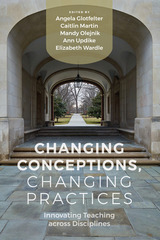 Changing Conceptions, Changing Practices: Innovating Teaching across Disciplines
edited by Angela Glotfelter, Caitlin Martin, Mandy Olejnik, Ann Updike & Elizabeth Wardle
Utah State University Press, 2022 Changing Conceptions, Changing Practices demonstrates that it is possible for groups of faculty members to change teaching and learning in radical ways across their programs, despite the current emphasis on efficiency and accountability. Relating the experiences of faculty from disciplines as diverse as art history, economics, psychology, and philosophy, this book offers a theory- and research-based heuristic for helping faculty transform their courses and programs, as well as practical examples of the heuristic in action.
The authors draw on the threshold concepts framework, research in writing studies, and theories of learning, leadership, and change to deftly explore why faculty are often stymied in their efforts to design meaningful curricula for deep learning and how carefully scaffolded professional development for faculty teams can help make such change possible. This book is a powerful demonstration of how faculty members can be empowered when professional development leaders draw on a range of scholarship that is not typically connected.
In today’s climate, courses, programs, and institutions are often assessed by and rewarded for proxy metrics that have little to do with learning, with grave consequences for students. The stakes have never been higher, particularly for public higher education. Faculty members need opportunities to work together using their own expertise and to enact meaningful learning opportunities for students. Professional developers have an important role to play in such change efforts.
WAC scholars and practitioners, leaders of professional development and centers for teaching excellence, program administrators and curriculum committees from all disciplines, and faculty innovators from many fields will find not only hope but also a blueprint for action in Changing Conceptions, Changing Practices.
Contributors: Juan Carlos Albarrán, José Amador, Annie Dell'Aria, Kate de Medeiros, Keith Fennen, Jordan A. Fenton, Carrie E. Hall, Elena Jackson Albarrán, Erik N. Jensen, Vrinda Kalia, Janice Kinghorn, Jennifer Kinney, Sheri Leafgren, Elaine Maimon, Elaine Miller, Gaile Pohlhaus Jr., Jennifer J. Quinn, Barbara J. Rose, Scott Sander, Brian D. Schultz, Ling Shao, L. James Smart, Pepper Stetler
 Changing Corporate America from Inside Out: Lesbian and Gay Workplace Rights
Nicole C. Raeburn
University of Minnesota Press, 2004 Investigates how gays, lesbians, and bisexuals have succeeded in securing equitable benefits Despite the backlash against lesbian and gay rights occurring in cities and states across the country, a growing number of corporations are actually expanding protections and benefits for their gay and lesbian employees. Why this should be, and why some corporations are increasingly open to inclusive policies while others are determinedly not, is what Nicole C. Raeburn seeks to explain in Changing Corporate America from Inside Out. A long-overdue study of the workplace movement, Raeburn’s analysis focuses on the mobilization of lesbian, gay, and bisexual employee networks over the past fifteen years to win domestic partner benefits in Fortune 1000 companies. Drawing on surveys of nearly one hundred corporations with and without gay networks, intensive interviews with human resources executives and gay employee activists, as well as a number of case studies, Raeburn reveals the impact of the larger social and political environment on corporations’s openness to gay-inclusive policies, the effects of industry and corporate characteristics on companies’s willingness to adopt such policies, and what strategies have been most effective in transforming corporate policies and practices to support equitable benefits for all workers.
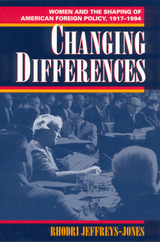 Changing Differences: Women and the Shaping of American Foreign Policy, 1917-1994
Jeffreys-Jones, Rhodri
Rutgers University Press, 1995 There are more than fifty women in the United States Congress and nearly one-fourth of foreign service posts are held by women. Nevertheless, the United States has yet to entrust a senior foreign policy job, outside of the United Nations, to a woman. Beneath these statistics lurk central myths that Jeffreys-Jones cogently identifies and describes: the "Iron Lady"--too masculine; the "lover of peace"--too "pink"; the weak or the promiscuous. These are to name only a few. With an eye to the feminist foreign policy leaders of the future, the author traces the successes and failures of collectivities such as Women Strike for Peace and individuals who were influential in international politics since World War I, including Alice Paul, Jane Addams, Jeannette Rankin, Dorothy Detzer, Eleanor Roosevelt, Margaret Chase Smith, Helen Gahagan Douglas, Bella Abzug, Margaret Thatcher, and many others. These women often found ways to employ the myths to their own and to their country's benefit, and more recently have had the freedom to defy the stereotypes altogether.
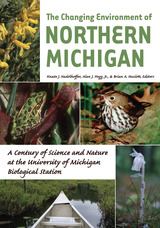 The Changing Environment of Northern Michigan: A Century of Science and Nature at the University of Michigan Biological Station
Knute J. Nadelhoffer, Alan J. Hogg, Jr., Brian A. Hazlett, editors
University of Michigan Press, 2009 Northern Michigan is undergoing unprecedented changes in land use, climate, resource extraction, and species distributions. For the last hundred years, the University of Michigan Biological Station has monitored these environmental transformations. Stretching 10,000 acres along Burt and Douglas Lakes in the northern Lower Peninsula and 3,200 acres on Sugar Island near Sault Ste. Marie, Michigan, the station has played host to nearly 10,000 students and a steady stream of top scientists in the fields of biology, ecology, geology, archeology, and climatology. The Changing Environment of Northern Michigan collects essays by some of these scientists, who lead readers on virtual field trips exploring the history of people and science at the station itself, the relations of indigenous people to the land, the geophysical history of the region, characteristics of terrestrial and aquatic ecosystems, key groups of organisms and their relations to local habitats, and perspectives on critical environmental challenges of today and their effects on the region. Accompanying the chapters are color illustrations and photographs that bring the station's pristine setting to life. Like the station itself, the book provides a solid background for better appreciating the relationships among living and nonliving parts of northern Michigan, for anyone interested in exploring the region's forests, fields, and wetlands; wading or paddling down its rivers; or swimming or floating across its lakes. Knute J. Nadelhoffer is Director of the University of Michigan Biological Station and Professor of Ecology and Evolutionary Biology at the University of Michigan. Alan J. Hogg, Jr., teaches science writing at the University of Michigan as a faculty member of the Sweetland Writing Center. His Ph.D. research explored the effects of ozone and nitrogen oxides on University of Michigan Biological Station forests. Brian A. Hazlett is Professor Emeritus of Zoology at the University of Michigan.
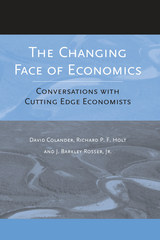 The Changing Face of Economics: Conversations with Cutting Edge Economists
David Colander, Richard P. F. Holt, and J. Barkley Rosser, Jr.
University of Michigan Press, 2004 The Changing Face of Economics gives the reader a sense of the modern economics profession and how it is changing. The volume does so with a set of nine interviews with cutting edge economists, followed by interviews with two Nobel Prize winners, Paul Samuelson and Kenneth Arrow, reflecting on the changes that are occurring. What results is a clear picture of today's economics--and it is no longer standard neoclassical economics. The interviews and commentary together demonstrate that economics is currently undergoing a fundamental shift in method and is moving away from traditional neoclassical economics into a dynamic set of new methods and approaches. These new approaches include work in behavioral economics, experimental economics, evolutionary game theory and ecological approaches, complexity and nonlinear dynamics, methodological analysis, and agent-based modeling. David E. Colander is Professor of Economics, Middlebury College. J. Barkley Rosser, Jr., is Professor of Economics and Kirby L. Kramer Jr. Professor of Business Administration, James Madison University. Richard P. F. Holt is Professor of Churchill Honors and Economics, Southern Oregon University.
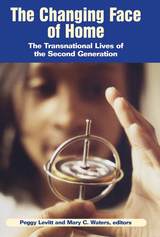 The Changing Face of Home: The Transnational Lives of the Second Generation
Peggy Levitt
Russell Sage Foundation, 2002 The children of immigrants account for the fastest growing segment of the U.S. population under eighteen years old—one out of every five children in the United States. Will this generation of immigrant children follow the path of earlier waves of immigrants and gradually assimilate into mainstream American life, or does the global nature of the contemporary world mean that the trajectory of today's immigrants will be fundamentally different? Rather than severing their ties to their home countries, many immigrants today sustain economic, political, and religious ties to their homelands, even as they work, vote, and pray in the countries that receive them. The Changing Face of Home is the first book to examine the extent to which the children of immigrants engage in such transnational practices. Because most second generation immigrants are still young, there is much debate among immigration scholars about the extent to which these children will engage in transnational practices in the future. While the contributors to this volume find some evidence of transnationalism among the children of immigrants, they disagree over whether these activities will have any long-term effects. Part I of the volume explores how the practice and consequences of transnationalism vary among different groups. Contributors Philip Kasinitz, Mary Waters, and John Mollenkopf use findings from their large study of immigrant communities in New York City to show how both distance and politics play important roles in determining levels of transnational activity. For example, many Latin American and Caribbean immigrants are "circular migrants" spending much time in both their home countries and the United States, while Russian Jews and Chinese immigrants have far less contact of any kind with their homelands. In Part II, the contributors comment on these findings, offering suggestions for reconceptualizing the issue and bridging analytical differences. In her chapter, Nancy Foner makes valuable comparisons with past waves of immigrants as a way of understanding the conditions that may foster or mitigate transnationalism among today's immigrants. The final set of chapters examines how home and host country value systems shape how second generation immigrants construct their identities, and the economic, social, and political communities to which they ultimately express allegiance. The Changing Face of Home presents an important first round of research and dialogue on the activities and identities of the second generation vis-a-vis their ancestral homelands, and raises important questions for future research.
The Changing Face of Inequality: Urbanization, Industrial Development, and Immigrants in Detroit, 1880-1920
Olivier Zunz
University of Chicago Press, 1983 Originally published in 1983, The Changing Face of Inequality is the first systematic social history of a major American city undergoing industrialization. Zunz examines Detroit's evolution between 1880 and 1920 and discovers the ways in which ethnic and class relations profoundly altered its urban scene. Stunning in scope, this work makes a major contribution to our understanding of twentieth-century cities.
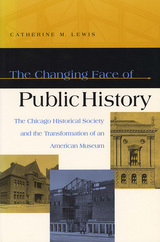 The Changing Face of Public History: The Chicago Historical Society and the Transformation of an American Museum
Catherine M. Lewis
Northern Illinois University Press, 2005
Spurred first by the civil rights debates of the 1960s and 1970s, then by the culture wars of the following decades, the Chicago Historical Society (CHS) increasingly sought to give visitors and patrons a voice in retelling the city's history. In response to debates over the authority to interpret the past, CHS engaged in community outreach and sponsored multicultural exhibits and programs. Yet, in this analysis of the society's evolving relationship with its diverse constituencies, Catherine M. Lewis finds that prevailing assumptions about the museum as a commemorative site dedicated to civic pride undermined CHS's bold attempts to create a public forum.
Based on more than 250 interviews with staff at CHS and museums around the country, as well as research into formerly inaccessible public and private papers, The Changing Face of Public History offers a behind-the-scenes look at the ways in which one of the most innovative museums in the United States has continually grappled with issues confronting not only museum professionals but all those concerned about the role history plays in the lives of American citizens.
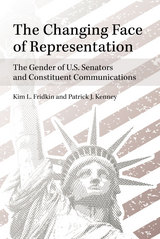 The Changing Face of Representation: The Gender of U.S. Senators and Constituent Communications
Kim L. Fridkin and Patrick J. Kenney
University of Michigan Press, 2015 As the number of women in the U.S. Senate grows, so does the number of citizens represented by women senators. At the same time, gender remains a key factor in senators’ communications to constituents as well as in news media portrayals of senators. Focusing on 32 male and female senators during the 2006 congressional election year, Kim L. Fridkin and Patrick J. Kenney examine in detail senators’ official websites, several thousand press releases and local news stories, and surveys of 18,000 citizens to discern constituents’ attitudes about their senators. The authors conclude that gender role expectations and stereotypes do indeed constrain representational and campaign messages and influence news coverage of both candidates and elected senators. Further, while citizens appear to be less influenced by entrenched stereotypes, they pay more attention to female senators’ messages and become more knowledgeable about them, in comparison to male senators.
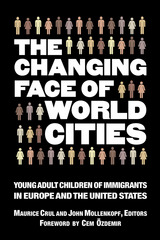 The Changing Face of World Cities: Young Adult Children of Immigrants in Europe and the United States
Maurice Crul
Russell Sage Foundation, 2013 A seismic population shift is taking place as many formerly racially homogeneous cities in the West attract a diverse influx of newcomers seeking economic and social advancement. In The Changing Face of World Cities, a distinguished group of immigration experts presents the first systematic, data-based comparison of the lives of young adult children of immigrants growing up in seventeen big cities of Western Europe and the United States. Drawing on a comprehensive set of surveys, this important book brings together new evidence about the international immigrant experience and provides far-reaching lessons for devising more effective public policies. The Changing Face of World Cities pairs European and American researchers to explore how youths of immigrant origin negotiate educational systems, labor markets, gender, neighborhoods, citizenship, and identity on both sides of the Atlantic. Maurice Crul and his co-authors compare the educational trajectories of second-generation Mexicans in Los Angeles with second-generation Turks in Western European cities. In the United States, uneven school quality in disadvantaged immigrant neighborhoods and the high cost of college are the main barriers to educational advancement, while in some European countries, rigid early selection sorts many students off the college track and into dead-end jobs. Liza Reisel, Laurence Lessard-Phillips, and Phil Kasinitz find that while more young members of the second generation are employed in the United States than in Europe, they are also likely to hold low-paying jobs that barely life them out of poverty. In Europe, where immigrant youth suffer from higher unemployment, the embattled European welfare system still yields them a higher standard of living than many of their American counterparts. Turning to issues of identity and belonging, Jens Schneider, Leo Chávez, Louis DeSipio, and Mary Waters find that it is far easier for the children of Dominican or Mexican immigrants to identify as American, in part because the United States takes hyphenated identities for granted. In Europe, religious bias against Islam makes it hard for young people of Turkish origin to identify strongly as German, French, or Swedish. Editors Maurice Crul and John Mollenkopf conclude that despite the barriers these youngsters encounter on both continents, they are making real progress relative to their parents and are beginning to close the gap with the native-born. The Changing Face of World Cities goes well beyong existing immigration literature focused on the United States experience to show that national policies on each side of the Atlantic can be enriched by lessons from the other. The Changing Face of World Cities will be vital reading for anyone interested in the young people who will shape the future of our increasingly interconnected global economy.
The Changing Fictions of Masculinity
David Rosen
University of Illinois Press, 1993 In a sensitive and provocative
study of six great works of British literature, David Rosen traces the evolution
of masculinity, inviting readers to contemplate the shifting joys and sorrows
men have experienced throughout the last millennium, and the changing but constant
tensions between their lives and ideals. Focusing on Beowulf, Sir Gawain
and the Green Knight, Hamlet, Paradise Lost, Hard Times, and Sons and
Lovers, Rosen shows how the actions of heroes fail to resolve tensions between
masculine ideals and male experiences.
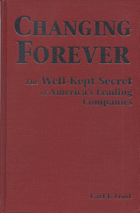 Changing Forever: The Well-Kept Secrets of America's Leading Companies
Carl F. Frost
Michigan State University Press, 1996 Do Motorola, Herman Miller, and the Donelly corporations all share a secret of business? Without a doubt, it is the ability to continually change—their "only hope for survival and success"—change based on a participatory management style, often referred to as the Scanlon Plan—identity, participation, equity, and managerial competence—these corporations have succeeded where others have failed.
Changing Forever builds on the forty years of research, experience, and development that have gone into the Scanlon Plan. Documenting fully the principles and processes of the Scanlon Plan, Carl Frost gives the reader a clear view of how the plan works and how it can be adapted to suit the needs of businesses large and small. The conclusions of his research are not surprising: with implementation of the four basic principles of the Scanlon Plan comes an optimal synergistic relationship between all employees and management.
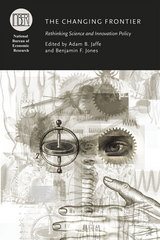 The Changing Frontier: Rethinking Science and Innovation Policy
Edited by Adam B. Jaffe and Benjamin F. Jones
University of Chicago Press, 2015 In 1945, Vannevar Bush, founder of Raytheon and one-time engineering dean at MIT, delivered a report to the president of the United States that argued for the importance of public support for science, and the importance of science for the future of the nation. The report, Science: The Endless Frontier, set America on a path toward strong and well-funded institutions of science, creating an intellectual architecture that still defines scientific endeavor today.
In The Changing Frontier, Adam B. Jaffe and Benjamin Jones bring together a group of prominent scholars to consider the changes in science and innovation in the ensuing decades. The contributors take on such topics as changes in the organization of scientific research, the geography of innovation, modes of entrepreneurship, and the structure of research institutions and linkages between science and innovation. An important analysis of where science stands today, The Changing Frontier will be invaluable to practitioners and policy makers alike.
Changing Hands: Industry, Evolution, and the Reconfiguration of the Victorian Body
Peter J. Capuano
University of Michigan Press, 2015 In Changing Hands, Peter J. Capuano sifts through Victorian literature and culture for changes in the way the human body is imagined in the face of urgent questions about creation, labor, gender, class, and racial categorization, using “hands” (the “distinguishing mark of . . . humanity”) as the primary point of reference. Capuano complicates his study by situating the historical argument in the context of questions about the disappearance of hands during the twentieth century into the haze of figurative meaning. Out of this curious aporia, Capuano exposes a powerful, “embodied handedness” as the historical basis for many of the uncritically metaphoric, metonymic, and/or ideogrammatic approaches to the study of the human body in recent critical discourse.
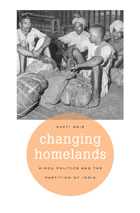 Changing Homelands: Hindu Politics and the Partition of India
Neeti Nair
Harvard University Press, 2011 Changing Homelands offers a startling new perspective on what was and was not politically possible in late colonial India. In this highly readable account of the partition in the Punjab, Neeti Nair rejects the idea that essential differences between the Hindu and Muslim communities made political settlement impossible. Far from being an inevitable solution, the idea of partition was a very late, stunning surprise to the majority of Hindus in the region.
In tracing the political and social history of the Punjab from the early years of the twentieth century, Nair overturns the entrenched view that Muslims were responsible for the partition of India. Some powerful Punjabi Hindus also preferred partition and contributed to its adoption. Almost no one, however, foresaw the deaths and devastation that would follow in its wake.
Though much has been written on the politics of the Muslim and Sikh communities in the Punjab, Nair is the first historian to focus on the Hindu minority, both before and long after the divide of 1947. She engages with politics in post-Partition India by drawing from oral histories that reveal the complex relationship between memory and history—a relationship that continues to inform politics between India and Pakistan.
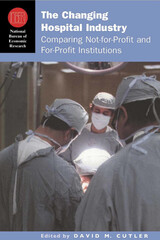 The Changing Hospital Industry: Comparing Not-for-Profit and For-Profit Institutions
Edited by David M. Cutler
University of Chicago Press, 1999 In recent years, the hospital industry has been undergoing massive change and reorganization with technological innovations and the spread of managed care. As a result, the total number of hospitals countrywide has been declining, and a growing number of not-for-profit hospitals have converted to for-profit status. These changes raise two fundamental questions: What determines a hospital's choice of for-profit or not-for-profit organizational form? And how does that form affect patients and society?
This timely volume provides a factual basis for discussing for-profit versus not-for-profit ownership of hospitals and gives a first look at the evidence about new and important issues in the hospital industry. The Changing Hospital Industry: Comparing Not-for-Profit and For-Profit Institutions will have significant implications for public-policy reforms in this vital industry and will be of great interest to scholars in the fields of health economics, public finance, hospital organization, and management; and to health services researchers.
 Changing Identities in Early Modern France
Michael Wolfe, ed.
Duke University Press, 1997 Changing Identities in Early Modern France offers new interpretations of what it meant to be French during a period of profound transition, from the outbreak of the Hundred Years War to the consolidation of the Bourbon monarchy in the seventeenth century. As medieval notions were gradually replaced by new definitions of the state, society, and family, dynastic struggles and religious wars raised questions about loyalty and identity and destabilized the meaning of "Frenchness." After examining the interplay between competing ideologies and public institutions, from the monarchy to the Parlement of Paris to the aristocratic household, the volume explores the dynamics of deviance and dissent, particularly in regard to women’s roles in religious reform movements and such sensationalized phenomena as the witch hunts and infanticide trials. Concluding essays examine how regional and confessional identities reshaped French identity in response to the discovery of the New World and the spectacular spread of Calvinism. Contributors. Charmarie Blaisdell, William Bouwsma, Lawrence M. Bryant, Denis Crouzet, Robert Descimon, Barbara B. Diefendorf, Richard M. Golden, Sarah Hanley, Mack P. Holt, Donald R. Kelley, Kristen B. Neuschel, J. H. M. Salmon, Zachary Sayre Schiffman, Silvia Shannon, Alfred Soman, Michael Wolfe
Changing Ireland: Literary Backgrounds Of The Irish Free State, 1889-1922
Norreys Jephson O'Conor
Harvard University Press Although it is generally known that many of the leaders in the Irish Rebellion of 1916 were men of letters, comparatively few people realize how intimate has been the connection between Irish political thought and the literary revival of the past thirty years. Consciously or unconsciously, the Irish writers in Gaelic and in English who have built up the ideal of nationality expressed politically in the Free State have been influenced by their Gaelic literary heritage. Fully to understand the development of Ireland from 1889 to 1922 requires a knowledge of Anglo-Irish literature of the period and its relation to the older Gaelic. Such, then, is Mr. O’Conor’s purpose in this delightful volume: to give a true interpretation of the newly awakened and established Irish nationality in its continuity from the past and with its promise for the future.
 The Changing Landscape of Spanish Language Curricula: Designing Higher Education Programs for Diverse Students
Alan V. Brown and Gregory L. Thompson. Foreword by Manel Lacorte
Georgetown University Press Spanish remains a large and constant fixture in the foreign language learning landscape in the United States. As Spanish language study has grown, so too has the diversity of students and contexts of use, placing the field in the midst of a curricular identity crisis. Spanish has become a second, rather than a foreign, language in the US, which leads to unique opportunities and challenges for curriculum and syllabus design, materials development, individual and program assessment, and classroom pedagogy. In their book, Brown and Thompson address these challenges and provide a vision of Spanish language education for the twenty-first century. Using data from the College Board, ETS, and the authors’ own institutions, as well as responses to their national survey of almost seven hundred Spanish language educators, the authors argue that the field needs to evolve to reflect changes in the sociocultural, socioeducational, and sociopolitical landscape of the US. The authors provide coherent and compelling discussion of the most pressing issues facing Spanish post-secondary education and strategies for converting these challenges into opportunities. Topics that are addressed in the book include: Heritage learners, service learning in Spanish-speaking communities, Spanish for specific purposes, assessment, unique needs for Spanish teacher training, online and hybrid teaching, and the relevance of ACTFL’s national standards for Spanish post-secondary education. An essential read for Spanish language scholars, especially those interested in curriculum design and pedagogy, that includes supporting reflection questions and pedagogical activities for use in upper-level undergraduate and graduate-level courses.
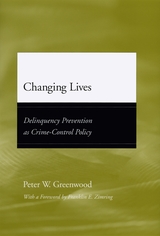 Changing Lives: Delinquency Prevention as Crime-Control Policy
Peter W. Greenwood
University of Chicago Press, 2005 One of the most astonishing aspects of juvenile crime is how little is known about the impact of the policies and programs put in place to fight it. The most commonly used strategies and programs for combating juvenile delinquency problems primarily rely on intuition and fads. Fortunately, as a result of the promising new research documented in Changing Lives, these deficiencies in our juvenile justice system might quickly be remedied.
Peter W. Greenwood here demonstrates here that as crimes rates have fallen, researchers have identified more connections between specific risk factors and criminal behavior, while program developers have discovered a wide array of innovative interventions. The result of all this activity, he reveals, has been the revelation of a few prevention models that reduce crime much more cost-effectively than popular approaches such as tougher sentencing, D.A.R.E., boot camps, and "scared straight" programs. Changing Lives expertly presents the most promising of these prevention programs, their histories, the quality of evidence to support their effectiveness, the public policy programs involved in bringing them into wider use, and the potential for investments and developmental research to increase the range and quality of programs.
Changing Lives in Laos: Society, Politics, and Culture in a Post-Socialist State
Edited by Vanina Bouté and Vatthana Pholsena
National University of Singapore Press, 2017 During the last two decades, Laos has undergone major transformations due to a massive influx of foreign investment. Improved communications and new forms of mobility have dramatically altered rural life. Changing Lives in Laos brings together contributions from young scholars that look closely at these transitions and the resulting rise of a new social, cultural, and economic order. The essays in this volume draw on original fieldwork and provide fresh analyses of topics such as the structures of power, the politics of territoriality, and new forms of sociability in emerging urban spaces.
 Changing Lives Through Literature
Robert P. Waxler
University of Notre Dame Press, 1999 Robert P. Waxler believes that stories can save us from the chaos of our lives. He began the "Changing Lives Through Literature" program to demonstrate that literature has the power to change the lives of criminal offenders. By examining the works of contemporary authors such as James Baldwin and Alice Walker, these reading groups, made up of eight convicted criminals, a probation officer, and a judge, became an exploration into the meaning of democracy. When the members of the group who had been pushed to the margins and refused a voice began to rediscover their identity, the idea for this anthology was born.
Changing Lives Through Literature depends on the belief that modern literature is the best tool our society has to explore human identity, and to keep it alive. Through their tireless work in the Massachusetts prison system, co-editors Waxler and Jean R. Trounstine discovered that a study of modern literature enhances readers' verbal skills through an engagement with language, opens experience to a multitude of perspectives, enriches our sense of human diversity, and makes us self-reflective and thoughtful.
The stories included in this valuable anthology are written by notable contemporary raconteurs such as T. Coraghessan Boyle, Joyce Carol Oates, Toni Morrison, and Raymond Carver, and have been successful in exciting conversation among the "Changing Lives Through Literature" groups.
This book will arouse interest in anyone involved in, or moved by, the "Changing Lives Through Literature" program. It is truly a valuable gift for alternative learners: criminal offenders in or out of prison, displaced workers, and any reader failed by the traditional educational system.
Robert P. Waxler is Professor of English at the University of Massachusetts, Dartmouth, and the co-founder of the nationally-recognized "Changing Lives Through Literature" program for criminal offenders. Jean R. Trounstine is Professor of Humanities at Middlesex Community College and the creator of a humanities-based theater arts program at Framingham Women's Prison in Massachusetts.
 Changing Masters: Spirit Possession and Identity Construction among the Descendants of Slaves in the Sudan
G.P. Makris
Northwestern University Press, 2000 The spirit possession cult of zar tumbura has a devoted following among Muslim descendents of slaves and other subalterns in the Sudan. In Changing Masters, G. P. Makris studies zar tumbura as part of a wider zar complex for what it reveals about shifting ethnic identities in the modern Sudan. More generally, his work exposes the processes subordinate groups use to assert a positive identity that counters the identity conferred upon them by the dominant culture. Makris engages the tumbura devotees of the area of Greater Khartoum in an animated discussion of their understanding of themselves and their world. Using oral histories, songs associated with the various spirits, and accounts of ceremonies he witnessed, he shows tumbura to be a response to victimization first in slavery and later by subordination. It functions as a counterdiscourse challenging the dominant discourse of the ex-slaveholding classes and enables its practitioners to assert a separate, alternative identity. This assertion, embodied in the idiom of possession, is achieved through a continuous reworking of meaning as it is imparted by religion, descent, and historical consciousness.
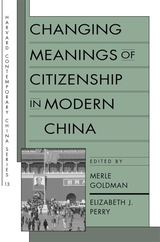 Changing Meanings of Citizenship in Modern China
Merle Goldman
Harvard University Press, 2002 This collection of essays addresses the meaning and practice of political citizenship in China over the past century, raising the question of whether reform initiatives in citizenship imply movement toward increased democratization.
After slow but steady moves toward a new conception of citizenship before 1949, there was a nearly complete reversal during the Mao regime, with a gradual reemergence beginning in the Deng era of concerns with the political rights as well as the duties of citizens. The distinguished contributors to this volume address how citizenship has been understood in China from the late imperial era to the present day, the processes by which citizenship has been fostered or undermined, the influence of the government, the different development of citizenship in mainland China and Taiwan, and the prospects of strengthening citizens' rights in contemporary China.
Valuable for its century-long perspective and for placing the historical patterns of Chinese citizenship within the context of European and American experiences, Changing Meanings of Citizenship in Modern China investigates a critical issue for contemporary Chinese society.
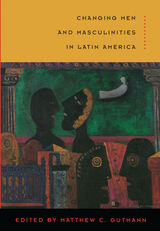 Changing Men and Masculinities in Latin America
Matthew C. Gutmann ed.
Duke University Press, 2003 Ranging from fatherhood to machismo and from public health to housework, Changing Men and Masculinities in Latin America is a collection of pioneering studies of what it means to be a man in Latin America. Matthew C. Gutmann brings together essays by well-known U.S. Latin Americanists and newly translated essays by noted Latin American scholars. Historically grounded and attuned to global political and economic changes, this collection investigates what, if anything, is distinctive about and common to masculinity across Latin America at the same time that it considers the relative benefits and drawbacks of studies focusing on men there. Demonstrating that attention to masculinities does not thwart feminism, the contributors illuminate the changing relationships between men and women and among men of different ethnic groups, sexual orientations, and classes. The contributors look at Mexico, Argentina, Ecuador, Brazil, Colombia, Peru, Venezuela, Chile, and the United States. They bring to bear a number of disciplines—anthropology, history, literature, public health, and sociology—and a variety of methodologies including ethnography, literary criticism, and statistical analysis. Whether analyzing rape legislation in Argentina, the unique space for candid discussions of masculinity created in an Alcoholics Anonymous group in Mexico, the role of shame in shaping Chicana and Chicano identities and gender relations, or homosexuality in Brazil, Changing Men and Masculinities highlights the complex distinctions between normative conceptions of masculinity in Latin America and the actual experiences and thoughts of particular men and women.
Contributors. Xavier Andrade, Daniel Balderston, Peter Beattie, Stanley Brandes, Héctor Carrillo, Miguel Díaz Barriga, Agustín Escobar, Francisco Ferrándiz, Claudia Fonseca, Norma Fuller, Matthew C. Gutmann, Donna Guy, Florencia Mallon, José Olavarría, Richard Parker, Mara Viveros
The Changing Mile
James Rodney Hastings, Raymond M. Turner
University of Arizona Press, 1965 Dramatically presents the changes man, climate, cattle, fire, and other factors have wrought upon the natural landscape within a vertical mile over a large region—the northern Sonoran Desert and the highlands within it and to the east.
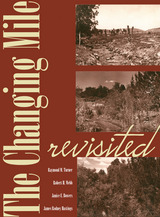 The Changing Mile Revisited: An Ecological Study of Vegetation Change with Time in the Lower Mile of an Arid and Semiarid Region
Raymond M. Turner, Robert H. Webb, Janice E. Bowers, and James Rodney Hastings
University of Arizona Press, 2003 The Changing Mile, originally published in 1965, was a benchmark in ecological studies, demonstrating the prevalence of change in a seemingly changeless place. Photographs made throughout the Sonoran Desert region in the late 1800s and early 1900s were juxtaposed with photographs of the same locations taken many decades later. The nearly one hundred pairs of images revealed that climate has played a strong role in initiating many changes in the region. This new book updates the classic by adding recent photographs to the original pairs, providing another three decades of data and showing even more clearly the extent of change across the landscape. During these same three decades, abundant information about climatic variability, land use, and plant ecology has accumulated, making it possible to determine causes of change with more confidence.
Using nearly two hundred additional triplicate sets of unpublished photographs, The Changing Mile Revisited utilizes repeat photographs selected from almost three hundred stations located in southern Arizona, in the Pinacate region of Mexico, and along the coast of the Gulf of California. Coarse photogrammetric analysis of this enlarged photographic set shows the varied response of the region's major plant species to the forces of change. The images show vegetation across the entire region at sites ranging in elevation from sea level to a mile above sea level. Some sites are truly arid, while others are located above the desert in grassland and woodland. Common names are used for most plants and animals (with Latin equivalents in endnotes) to make the book more accessible to non-technical readers.
The original Changing Mile was based upon a unique set of data that allowed the authors to evaluate the extent and magnitude of vegetation change in a large geographic region. By extending the original landmark study, The Changing Mile Revisited will remain an indispensable reference for all concerned with the fragile desert environment.
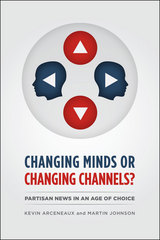 Changing Minds or Changing Channels?: Partisan News in an Age of Choice
Kevin Arceneaux and Martin Johnson
University of Chicago Press, 2013 We live in an age of media saturation, where with a few clicks of the remote—or mouse—we can tune in to programming where the facts fit our ideological predispositions. But what are the political consequences of this vast landscape of media choice? Partisan news has been roundly castigated for reinforcing prior beliefs and contributing to the highly polarized political environment we have today, but there is little evidence to support this claim, and much of what we know about the impact of news media come from studies that were conducted at a time when viewers chose from among six channels rather than scores.
Through a series of innovative experiments, Kevin Arceneaux and Martin Johnson show that such criticism is unfounded. Americans who watch cable news are already polarized, and their exposure to partisan programming of their choice has little influence on their political positions. In fact, the opposite is true: viewers become more polarized when forced to watch programming that opposes their beliefs. A much more troubling consequence of the ever-expanding media environment, the authors show, is that it has allowed people to tune out the news: the four top-rated partisan news programs draw a mere three percent of the total number of people watching television.
Overturning much of the conventional wisdom, Changing Minds or Changing Channels? demonstrate that the strong effects of media exposure found in past research are simply not applicable in today’s more saturated media landscape.
 Changing Minds: Social Movements’ Cultural Impacts
Francesca Polletta
Russell Sage Foundation, 2025 Social movements—organized efforts by relatively powerless people to change society—can result in legal and policy changes, such as laws protecting same-sex marriage and tax rebates for solar energy. However, movements also change people’s beliefs, values, and everyday behavior. Such changes may help bring about new policies or take place in the absence of new policy, yet we still know little about when and why they occur. In Changing Minds, sociologists Francesca Polletta and Edwin Amenta ask why movements have sometimes had fast and far-reaching cultural influence.
Polletta and Amenta examine the trajectories of U.S. social movements, including the old-age pension movements of the 1930s and 1940s, the Black rights movement of the 1950s and 1960s, the women’s movement of the 1970s, right-wing movements in the 1980s and 1990s, and the environmental movement up to the present, to determine when, why, and how social movements change culture. They find that influential movements are featured in the news, but not only in the news. Movement perspectives may appear also in opinion and commentary outlets, on television talk shows and dramas, in movies, stand-up comedy, and viral memes. Popular culture producers remake movement messages as they transmit them, sometimes in ways that make those messages compelling. For example, while the news largely ignored feminists’ challenge to inequality in the home, popular cultural outlets turned “liberation” into a resonant demand for women’s right to self-fulfillment outside the home and within it. Widespread attention to the movement may lead people to change their minds individually. But more substantial change is likely when companies, schools, and other organizations outside government strive to get out in front of a newly legitimate issue, whether environmental sustainability or racial equity, by adopting movement-supportive norms and practices. Eventually, ideas associated with a movement may become a new common sense—though not always the ideas that the movement intended.
Throughout Changing Minds, Polletta and Amenta provide activists with strategies for getting their message heard and acted on. They suggest how movement actors can get into the news as political players or experts rather than lawbreakers or zealots. They show when it makes sense for activists to work with popular cultural producers and when they should create their own cultural outlets. They explain why the routes to cultural influence have changed and why urging people to take one easy step to save the planet can do more harm than good.
Changing Minds is a fascinating exploration of why and how some social movements have caused profound shifts in society.
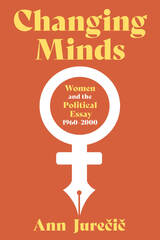 Changing Minds: Women and the Political Essay, 1960-2001
Ann Jurecic
University of Pittsburgh Press, 2023 How Five Prominent Women Writers Reshaped the Essay in the Late Twentieth Century
In Changing Minds: Women and the Political Essay, 1960–2000, Ann Jurečič documents the work of five paradigm-shifting essayists who transformed American thought about urgent political issues. Rachel Carson linked science and art to explain how pesticides threatened the Earth’s ecosystems. Hannah Arendt redefined “evil” for a secular age after Eichmann was tried in Jerusalem. Susan Sontag’s interest in the intersection of politics and aesthetics led her to examine the ethics of looking at photographs of suffering. Joan Didion became a political essayist when she questioned how rhetoric and sentimental narratives corrupted democratic ideals. Patricia J. Williams continues to write about living under a justice system that has attempted to neutralize race, gender, and the meaning of history. These writers reacted to the stressors of the late twentieth century and in response reshaped the essay for their own purposes in profound ways. With this volume, Jurečič begins to correct the longstanding dearth of scholarly studies on the importance of women and their political essays—works that continue to be relevant more than two decades into the twenty-first century.
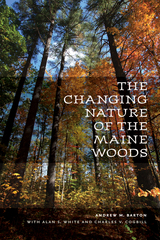 The Changing Nature of the Maine Woods
Andrew M. Barton
University of New Hampshire Press, 2012 The Changing Nature of the Maine Woods is both a fascinating introduction to the forests of Maine and a detailed but accessible narrative of the dynamism of these ecosystems. This is natural history with a long view, starting with an overview of the state’s geological history, the reemergence of the forest after glacial retreat, and the surprising changes right up to European arrival. The authors create a vivid picture of Maine forests just before the impact of Euro-Americans and trace the profound transformations since settlement.
Ambitious in its geographic range, this book explores how and why Maine forests differ across the state, from the top of Mount Katahdin to the coast. Through groundbreaking research and engaging narratives, the authors assess key ecological forces such as climate change, insects and disease, nonnative organisms, natural disturbance, and changing land use to create a dramatic portrait of Maine forests—past, present, and future.
This book both synthesizes the latest scientific discoveries regarding the changing forest and relates the findings to an educated lay and academic audience.
 The Changing Nature of Work
Edited by Frank Ackerman, Neva R. Goodwin, Laurie Dougherty, and Kevin Gallagher; Foreword by Robert Reich
Island Press, 1998 Human impacts on the environment are largely driven by economic forces. If a more ecologically sustainable world is to be achieved, significant changes must be made to the current growth- and consumption-dependent economic system. The Frontier Issues in Economic Thought series was designed to assist the growing number of economists and others who are responding to the need for new thinking about economics in the face of environmental and social forces that are reshaping the world.The Changing Nature of Work examines the causes and effects of the rapid transformation of the world of work. It provides concise summaries of the key writings on work and workplace issues, extending the frontiers of labor economics to include the often overlooked social and psychological dimensions of work.The book begins with a foreword by former Secretary of Labor Robert Reich that presents labor in contemporary perspective. An introductory overview provides a brief history of the changing nature of work and situates current problems in the context of longer-term developments. Following that are eight topical sections that feature three- to five-page summaries for each of the ten to twelve most important articles or book chapters on a subject.Sections cover.new directions in labor economics social and psychological dimensions of work and unemployment globalization and labor new technologies and organizational change flexibility and internal labor markets new patterns of industrial relations family, gender, paid and unpaid work difference and diversity in the workplaceThe book provides a roadmap for scholars on the vast and diverse literature concerning labor issues, and affords students a quick overview of that rapidly changing field. It is an important contribution to the series and is a valuable book for anyone interested in labor, as well as for students and scholars of labor economics, industrial sociology, industrial relations, social psychology, and their respective disciplines.
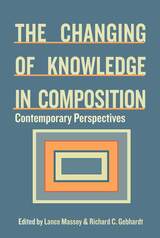 Changing of Knowledge in Composition: Contemporary Perspectives
Lance Massey and Richard C Gephardt
Utah State University Press, 2011 Lance Massey and Richard Gebhardt offer in this collection many signs that composition again faces a moment of precariousness, even as it did in the 1980s—the years of the great divorce from literary studies. The contours of writing in the university again are rapidly changing, making the objects of scholarship in composition again unstable. Composition is poised to move not from modern to postmodern but from process to postprocess, from a service-oriented "field" to a research-driven "discipline." Some would say we are already there. Momentum is building to replace "composition" and the pedagogical imperative long implied in that term with a "writing studies" model devoted to the study of composition as a fundamental tool of, and force within, all areas of human activity. Appropriately, contributors here use Stephen M. North's 1987 book The Making of Knowledge in Composition to frame and background their discussion, as they look at both the present state of the field and its potential futures. As in North's volume, The Changing of Knowledge in Composition describes a body of research and pedagogy brimming with conflicting claims, methodologies, and politics, and with little consensus regarding the proper subjects and modes of inquiry. The deep ambivalence within the field itself is evident in this collection. Contributors here envision composition both as retaining its commitment to broad-based, generalized writing instruction and as heading toward content-based vertical writing programs in departments and programs of writing studies. They both challenge and affirm composition's pedagogical heritage. And they sound both sanguine and pessimistic notes about composition's future.
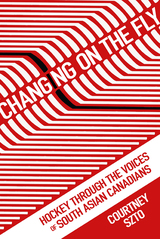 Changing on the Fly: Hockey through the Voices of South Asian Canadians
Courtney Szto
Rutgers University Press, 2021 Winner of the NASSS Outstanding Book Award
Hockey and multiculturalism are often noted as defining features of Canadian culture; yet, rarely are we forced to question the relationship and tensions between these two social constructs. This book examines the growing significance of hockey in Canada’s South Asian communities. The Hockey Night in Canada Punjabi broadcast serves as an entry point for a broader consideration of South Asian experiences in hockey culture based on field work and interviews conducted with hockey players, parents, and coaches in the Lower Mainland of British Columbia. This book seeks to inject more “color” into hockey’s historically white dominated narratives and representations by returning hockey culture to its multicultural roots. It encourages alternative and multiple narratives about hockey and cultural citizenship by asking which citizens are able to contribute to the webs of meaning that form the nation’s cultural fabric.
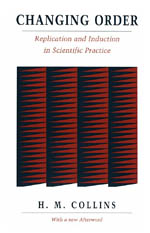 Changing Order: Replication and Induction in Scientific Practice
Harry Collins
University of Chicago Press, 1992 This fascinating study in the sociology of science explores the way scientists conduct, and draw conclusions from, their experiments. The book is organized around three case studies: replication of the TEA-laser, detecting gravitational rotation, and some experiments in the paranormal.
"In his superb book, Collins shows why the quest for certainty is disappointed. He shows that standards of replication are, of course, social, and that there is consequently no outside standard, no Archimedean point beyond society from which we can lever the intellects of our fellows."—Donald M. McCloskey, Journal of Economic Psychology
"Collins is one of the genuine innovators of the sociology of scientific knowledge. . . . Changing Order is a rich and entertaining book."—Isis
"The book gives a vivid sense of the contingent nature of research and is generally a good read."—Augustine Brannigan, Nature
"This provocative book is a review of [Collins's] work, and an attempt to explain how scientists fit experimental results into pictures of the world. . . . A promising start for new explorations of our image of science, too often presented as infallibly authoritative."—Jon Turney, New Scientist
Changing Our Own Words
Cheryl A. Wall
Rutgers University Press, 1991 ssays on criticism, theory, and writing by Black women
 Changing Pacific Forests: Historical Perspectives on the Pacific Basin Forest Economy
John Dargavel and Richard P. Tucker, eds.
Duke University Press, 1992 Changing Pacific Forests examines the forest-related economy of the Pacific Basin—including Japan, Malaysia, New Zealand, China, and the Philippines—from a historical perspective. Drawing on a 1991 conference sponsored by the Forest History Society and the International Union of Forestry Research Organizations held in Honolulu, these papers address a range of topics related to the changing Pacific forests, including the remnants of colonialism, the emergence of the Third World, people and resources caught in the middle of policy decisions, land management, national forests, and subsistence use of the forest by indigenous peoples. Essays also explore macroeconomic theories of international trade and the interests of the United States and the former Soviet Union in the economic health of the region. Changing Pacific Forests will be of interest to scholars of the economy and environment of the Pacific Basin as well as of land management and the history of land use in general. Contributors. Charles S. Backman, Thomas R. Cox, John Dargavel, Elizabeth Flint, Lim Hin Fui, G. R. Henning, Kenneth E. Jackson, Hiroaki Kakizawa, Nicholas K. Menzies, Andrew Price, John F. Richards, Jr., M. M. Roche, I. Gustin M. Tantra, Conrad Totman, Richard P. Tucker, Thomas R. Waggener
 The Changing Past: Trends in South African Historical Writing
Ken Smith
Ohio University Press, 1989 E.H. Carr said: “Before you study the history, study the historian.” Written history often tells us more about the historian’s own times than it does of the times about which he is writing. The historians and the way in which each generation has rewritten history in the light of its own preoccupations is the subject of The Changing Past. This is the first book-length survey in English that covers all the main trends in South African historiography. Starting with the first documents and histories, it goes on to trace the 19th century. British and settler “schools,” Afrikaans historiography from its pre-academic 19th century phase to the present, and the liberal historians who struck out in a new direction from the 1920s. The book highlights the break with the past that historians of the “new radical school” have made in the last 15 years, and surveys the position of historical writing to the present. The canvas is delineated in bold strokes that sketch in the main outlines rather than seek an exhaustive treatment of all existing literature. This, together with a conscious effort to minimize theoretical discussion, makes it a highly readable text.
 The Changing Past: Trends in South African Historical Writing
Ken Smith
Ohio University Press, 1989
E.H. Carr said: “Before you study the history, study the historian.” Written history often tells us more about the historian’s own times than it does of the times about which he is writing. The historians and the way in which each generation has rewritten history in the light of its own preoccupations is the subject of The Changing Past. This is the first book-length survey in English that covers all the main trends in South African historiography. Starting with the first documents and histories, it goes on to trace the 19th century. British and settler “schools,” Afrikaans historiography from its pre-academic 19th century phase to the present, and the liberal historians who struck out in a new direction from the 1920s. The book highlights the break with the past that historians of the “new radical school” have made in the last 15 years, and surveys the position of historical writing to the present.
The canvas is delineated in bold strokes that sketch in the main outlines rather than seek an exhaustive treatment of all existing literature. This, together with a conscious effort to minimize theoretical discussion, makes it a highly readable text.
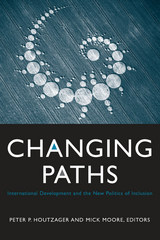 Changing Paths: International Development and the New Politics of Inclusion
Peter P. Houtzager and Mick Moore, Editors
University of Michigan Press, 2005 After two decades of marketizing, an array of national and international actors have become concerned with growing global inequality, the failure to reduce the numbers of very poor people in the world, and a perceived global backlash against international economic institutions. This new concern with poverty reduction and the political participation of excluded groups has set the stage for a new politics of inclusion within nations and in the international arena. The essays in this volume explore what forms the new politics of inclusion can take in low- and middle-income countries. The contributors favor a polity-centered approach that focuses on the political capacities of social and state actors to negotiate large-scale collective solutions and that highlights various possible strategies to lift large numbers of people out of poverty and political subordination.
The contributors suggest there is little basis for the radical polycentrism that colors so much contemporary development thought. They focus on how the political capabilities of different societal and state actors develop over time and how their development is influenced by state action and a variety of institutional and other factors. The final chapter draws insightful conclusions about the political limitations and opportunities presented by current international discourse on poverty.
Peter P. Houtzager is a Fellow at the Institute of Development Studies, University of Sussex. He has been a visiting scholar at the Center for Latin American Studies, University of California, Berkeley, visiting lecturer at Stanford University, and lecturer at St. Mary's College. A political scientist with broad training in comparative politics and historical-institutional analysis, he has written extensively on the institutional roots of collective action.
Mick Moore is a Fellow at the Institute of Development Studies, University of Sussex, as well as Director of the Centre for the Future State. He has been a visiting professor at the Massachusetts Institute of Technology. His professional interests include political and institutional aspects of poverty reduction and of economic policy and performance, the politics and administration of development, and good government.
Changing Paths: Travels and Meditations in Alaska's Arctic Wilderness
Bill Sherwonit
University of Alaska Press, 2009 Changing Paths: Travels and Meditations in Alaska’s Arctic Wilderness is an autobiographical exploration of author Bill Sherwonit’s relationship with the Alaska wilderness. Written in three parts, it first describes Sherwonit’s introduction to the Brooks Range and his years as an exploration geologist. Taking a step back, the author then takes us into the past to explore his childhood roots in rural Connecticut and his recognition of wild nature as a refuge. He concludes with his emergence as a nature writer and wilderness advocate. An engrossing, fascinating, and eye-opening tale of one man’s life and of wilderness conceptions, this vivid description of an area of Alaska that few people get to experience is authentic and enlightening. It is an extraordinary contribution to the literature of place from one of Alaska’s most accomplished nature writers.
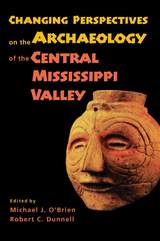 Changing Perspectives on the Archaeology of the Central Mississippi Valley
Michael J. O'Brien
University of Alabama Press, 1998 Fourteen experts examine the current state of Central Valley prehistoric research and provide an important touchstone for future archaeological study of the region The Mississippi Valley region has long played a critical role in the development of American archaeology and continues to be widely known for the major research of the early 1950s. To bring the archaeological record up to date, fourteen Central Valley experts address diverse topics including the distribution of artifacts across the landscape, internal configurations of large fortified settlements, human-bone chemistry, and ceramic technology. The authors demonstrate that much is to be learned from the rich and varied archaeological record of the region and that the methods and techniques used to study the record have changed dramatically over the past half century. Operating at the cutting edge of current research strategies, these archaeologists provide a fresh look at old problems in central Mississippi Valley research.
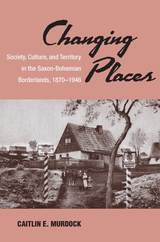 Changing Places: Society, Culture, and Territory in the Saxon-Bohemian Borderlands, 1870-1946
Caitlin E. Murdock
University of Michigan Press, 2010 "Changing Places is an interesting meditation on the varying identities and rights claimed by residents of borderlands, the limits placed on the capacities of nation-states to police their borders and enforce national identities, and the persistence of such contact zones in the past and present. It is an extremely well-written and engaging study, and an absolute pleasure to read."
---Dennis Sweeney, University of Alberta "Changing Places offers a brilliantly transnational approach to its subject, the kind that historians perennially demand of themselves but almost never accomplish in practice."
---Pieter M. Judson, Swarthmore College Changing Places is a transnational history of the birth, life, and death of a modern borderland and of frontier peoples' changing relationships to nations, states, and territorial belonging. The cross-border region between Germany and Habsburg Austria---and after 1918 between Germany and Czechoslovakia---became an international showcase for modern state building, nationalist agitation, and local pragmatism after World War I, in the 1930s, and again after 1945. Caitlin Murdock uses wide-ranging archival and published sources from Germany and the Czech Republic to tell a truly transnational story of how state, regional, and local historical actors created, and eventually destroyed, a cross-border region. Changing Places demonstrates the persistence of national fluidity, ambiguity, and ambivalence in Germany long after unification and even under fascism. It shows how the 1938 Nazi annexation of the Czechoslovak "Sudetenland" became imaginable to local actors and political leaders alike. At the same time, it illustrates that the Czech-German nationalist conflict and Hitler's Anschluss are only a small part of the larger, more complex borderland story that continues to shape local identities and international politics today. Caitlin E. Murdock is Associate Professor of History at California State University, Long Beach. Jacket Credit: Cover art courtesy of the author
The Changing Political Economies of Small West European Countries
Edited by Uwe Becker
Amsterdam University Press, 2012
This important volume sheds light on a group of smaller European countries, often overlooked in economic discussions, that share a high degree of corporatism—Austria, Belgium, Denmark, Finland, the Netherlands, Norway, Sweden, and Switzerland. The contributors to this book investigate the various trajectories of these countries’ economies, with particular consideration devoted to their welfare systems, corporate governance, and labor markets from the early 1990s to the economic crisis of 2008. Importantly, The Changing Political Economies of Small West European Countries also investigates various nations as possible socio-economic models for pan-European capitalism.
 Changing Populations/Changing Schools
Edited by Erwin Flaxman and A. Harry Passow
University of Chicago Press, 1995 Changing Populations/Changing Schools features twelve studies of the failure of public schools in the United States to meet the educational needs of minority, economically disadvantaged, and non-native English speaking students.
The studies trace defects in schooling to specific methods of instruction, the practice of separating students according to ability, poorly executed government education policies, and a lack of research on the benefits of programs aimed at expanding the role of families in education or providing social services in low income neighborhoods. Topics include vocational training, programs for gifted students, "skills and drills" teaching techniques, the organization of schools and districts, the interrelationship of educational development, family, and community, and the progress of government programs designed to compensate for deficiencies, accommodate differences, and overcome imbalances.
The researchers also address arguments that attribute the low performance of some students to their lack of character, motivation, or self-esteem and outline new approaches to instruction, curricula, and intervention to improve the education of students with special needs.
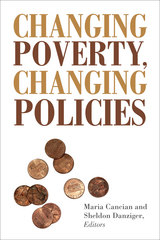 Changing Poverty, Changing Policies
Maria Cancian
Russell Sage Foundation, 2009 Poverty declined significantly in the decade after Lyndon Johnson's 1964 declaration of "War on Poverty." Dramatically increased federal funding for education and training programs, social security benefits, other income support programs, and a growing economy reduced poverty and raised expectations that income poverty could be eliminated within a generation. Yet the official poverty rate has never fallen below its 1973 level and remains higher than the rates in many other advanced economies. In this book, editors Maria Cancian and Sheldon Danziger and leading poverty researchers assess why the War on Poverty was not won and analyze the most promising strategies to reduce poverty in the twenty-first century economy. Changing Poverty, Changing Policies documents how economic, social, demographic, and public policy changes since the early 1970s have altered who is poor and where antipoverty initiatives have kept pace or fallen behind. Part I shows that little progress has been made in reducing poverty, except among the elderly, in the last three decades. The chapters examine how changing labor market opportunities for less-educated workers have increased their risk of poverty (Rebecca Blank), and how family structure changes (Maria Cancian and Deborah Reed) and immigration have affected poverty (Steven Raphael and Eugene Smolensky). Part II assesses the ways childhood poverty influences adult outcomes. Markus Jäntti finds that poor American children are more likely to be poor adults than are children in many other industrialized countries. Part III focuses on current antipoverty policies and possible alternatives. Jane Waldfogel demonstrates that policies in other countries—such as sick leave, subsidized child care, and schedule flexibility—help low-wage parents better balance work and family responsibilities. Part IV considers how rethinking and redefining poverty might take antipoverty policies in new directions. Mary Jo Bane assesses the politics of poverty since the 1996 welfare reform act. Robert Haveman argues that income-based poverty measures should be expanded, as they have been in Europe, to include social exclusion and multiple dimensions of material hardships. Changing Poverty, Changing Policies shows that thoughtful policy reforms can reduce poverty and promote opportunities for poor workers and their families. The authors' focus on pragmatic measures that have real possibilities of being implemented in the United States not only provides vital knowledge about what works but real hope for change.
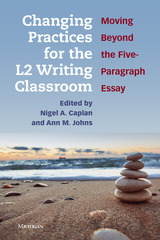 Changing Practices for the L2 Writing Classroom: Moving Beyond the Five-Paragraph Essay
Nigel A. Caplan and Ann M. Johns
University of Michigan Press, 2019 This volume was written to make the case for changes in second language writing practices away from the five-paragraph essay and toward purposeful, meaningful writing instruction. As the volume editors say, “If you have already rejected the five-paragraph essay, we offer validation and classroom-tested alternatives. If you are new to teaching L2 writing, we introduce critical issues you will need to consider as you plan your lessons and as you consider/review the textbooks and handbooks that continue to promote the teaching of the five-paragraph essay. If you need ammunition to present to colleagues and administrators, we present theory, research, and pedagogy that will benefit students from elementary to graduate school. If you are skeptical about our claims, we invite you to review the research presented here and consider what your students could do beyond writing a five-paragraph essay if you enacted these changes in practice.”
Part 1 discusses what the five-paragraph essay is not: it is not a very old, established form of writing; it is not a genre; and it is not universal.
Part 2 looks at writing practices to show the essay’s ineffectiveness in elementary schools, secondary schools, first-year writing classes, university writing courses, undergraduate discipline courses, and graduate school.
Part 3 looks beyond the classroom at testing. At the end of each chapter, the authors--all well-known in the field of second language writing--suggest changes to teaching practices based on their theoretical approach and classroom experience.
The book closes by reviewing some of the major questions raised in the book, by exploring which questions have been left unanswered, and by offering suggestions for teachers who want to move away from the five-paragraph essay. An assignment sequence for genre-aware writing instruction is included.
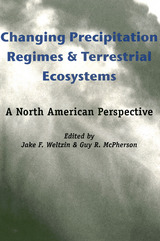 Changing Precipitation Regimes and Terrestrial Ecosystems: A North American Perspective
Jake F. Weltzin
University of Arizona Press, 2003 By the beginning of the twenty-first century, few people could deny the reality of global change. But while most alarm has been over increasing temperatures, other changes are occurring in precipitation patterns—variations that may be due in part to global warming but also to factors such as changes in atmospheric circulation and land surfaces. This volume provides a central source of information about this newly emerging area of global change research. It presents ongoing investigations into the responses of plant communities and ecosystems to the experimental manipulation of precipitation in a variety of field settings—particularly in the western and central United States, where precipitation is already scarce or variable. By exploring methods that can be used to predict responses of ecosystems to changes in precipitation regimes, it demonstrates new approaches to global change research and highlights the importance of precipitation regimes in structuring ecosystems. The contributors first document the importance of precipitation, soil characteristics, and soil moisture to plant life. They then focus on the roles of precipitation amount, seasonality, and frequency in shaping varied terrestrial ecosystems: desert, sagebrush steppe, oak savanna, tall- and mixed-grass prairie, and eastern deciduous forest. These case studies illustrate many complex, tightly woven, interactive relationships among precipitation, soils, and plants—relationships that will dictate the responses of ecosystems to changes in precipitation regimes. The approaches utilized in these chapters include spatial comparisons of vegetation structure and function across different ecosytems; analyses of changes in plant architecture and physiology in response to temporal variation in precipitation; experiments to manipulate water availability; and modeling approaches that characterize the relationships between climate variables and vegetation types. All seek to assess vegetation responses to major shifts in climate that appear to be occurring at present and may become the norm in the future. As the first volume to discuss and document current and cutting-edge concepts and approaches to research into changing precipitation regimes and terrestrial ecosystems, this book shows the importance of developing reliable predictions of the precipitation changes that may occur with global warming. These studies clearly demonstrate that patterns of environmental variation and the nature of vegetation responses are complex phenomena that are only beginning to be understood, and that these experimental approaches are critical for our understanding of future change.
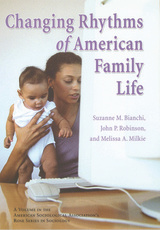 The Changing Rhythms of American Family Life
Suzanne M. Bianchi
Russell Sage Foundation, 2006 Over the last forty years, the number of American households with a stay-at-home parent has dwindled as women have increasingly joined the paid workforce and more women raise children alone. Many policy makers feared these changes would come at the expense of time mothers spend with their children. In Changing Rhythms of American Family Life, sociologists Suzanne M. Bianchi, John P. Robinson, and Melissa Milkie analyze the way families spend their time and uncover surprising new findings about how Americans are balancing the demands of work and family. Using time diary data from surveys of American parents over the last four decades, Changing Rhythms of American Family Life finds that—despite increased workloads outside of the home—mothers today spend at least as much time interacting with their children as mothers did decades ago—and perhaps even more. Unexpectedly, the authors find mothers' time at work has not resulted in an overall decline in sleep or leisure time. Rather, mothers have made time for both work and family by sacrificing time spent doing housework and by increased "multitasking." Changing Rhythms of American Family Life finds that the total workload (in and out of the home) for employed parents is high for both sexes, with employed mothers averaging five hours more per week than employed fathers and almost nineteen hours more per week than homemaker mothers. Comparing average workloads of fathers with all mothers—both those in the paid workforce and homemakers—the authors find that there is gender equality in total workloads, as there has been since 1965. Overall, it appears that Americans have adapted to changing circumstances to ensure that they preserve their family time and provide adequately for their children. Changing Rhythms of American Family Life explodes many of the popular misconceptions about how Americans balance work and family. Though the iconic image of the American mother has changed from a docile homemaker to a frenzied, sleepless working mom, this important new volume demonstrates that the time mothers spend with their families has remained steady throughout the decades.
The Changing Role of Criminal Law in Controlling Corporate Behavior
James M. Anderson
RAND Corporation, 2014 This report addresses the use of criminal sanctions to control corporate behavior—prosecutions both of corporations and of employees for actions taken on corporations’ behalf. The authors describe the current state of the use of criminal sanctions in controlling corporate behavior, describe how the current regime developed, and offer suggestions about how the use of criminal sanctions to control corporate behavior might be improved.
The Changing Roles of Debt and Equity in Financing U.S. Capital Formation
Edited by Benjamin M. Friedman
University of Chicago Press, 1982 This volume, consisting of papers presented at a conference held at Williamsburg, Va., 2-3 April 1981, is a progress report on the National Bureau of Economic Research project, The Changing Roles of Debt and Equity in Financing U.S. Capital Formation. The National Bureau has undertaken this project—including the conference, the research described in this volume, and the publication of the volume itself—with the support of the American Council of Life Insurance.
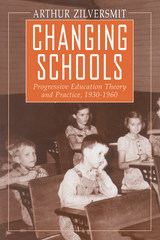 Changing Schools: Progressive Education Theory and Practice, 1930-1960
Arthur Zilversmit
University of Chicago Press, 1993 Nearly one hundred years ago America's foremost philosopher of education, John Dewey, set in motion the progressive education movement—an effort to enhance both child and community by establishing schools that would focus on the needs and interests of children, thereby turning out more productive citizens. To what degree did these ideas actually change the day-to-day lives of school children? What can the progressive education movement teach us about the conditions that facilitate and impede the implementation of new ideas about schools?
Through a focus on actual classroom practices in several school systems in the Chicago area, Zilversmit examines the impact of Dewey's ideas at a national and local level. He looks at the course of progressivism from the 1930s, when its influence was at its height but reform was difficult because of the Depression, through the post-World War II period when the baby boom led to rapid school expansion. The new affluence made reform possible, but the Cold War put progressivism on the defensive.
Zilversmit's goal is to illuminate the role of the ideas of the progressives in determining school practices so we can develop a better understanding of the relationship between education ideas and educational practices. This understanding, argues Zilversmit, will better enable us to determine new directions for educational reform, and to determine how reforms can be successfully implemented.
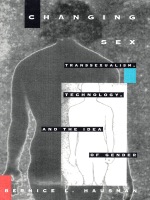 Changing Sex: Transsexualism, Technology, and the Idea of Gender
Bernice L. Hausman
Duke University Press, 1994 Changing Sex takes a bold new approach to the study of transsexualism in the twentieth century. By addressing the significance of medical technology to the phenomenon of transsexualism, Bernice L. Hausman transforms current conceptions of transsexuality as a disorder of gender identity by showing how developments in medical knowledge and technology make possible the emergence of new subjectivities.
Hausman’s inquiry into the development of endocrinology and plastic surgery shows how advances in medical knowledge were central to the establishment of the material and discursive conditions necessary to produce the demand for sex change—that is, to both "make" and "think" the transsexual. She also retraces the hidden history of the concept of gender, demonstrating that the semantic distinction between "natural" sex and "social" gender has its roots in the development of medical treatment practices for intersexuality—the condition of having physical characteristics of both sexes— in the 1950s. Her research reveals the medical institution’s desire to make heterosexual subjects out of intersexuals and indicates how gender operates semiotically to maintain heterosexuality as the norm of the human body. In critically examining medical discourses, popularizations of medical theories, and transsexual autobiographies, Hausman details the elaboration of "gender narratives" that not only support the emergence of transsexualism, but also regulate the lives of all contemporary Western subjects. Changing Sex will change the ways we think about the relation between sex and gender, the body and sexual identity, and medical technology and the idea of the human.
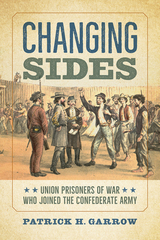 Changing Sides: Union Prisoners of War Who Joined the Confederate Army
Patrick H. Garrow
University of Tennessee Press, 2020 Toward the end of the American Civil War, the Confederacy faced manpower shortages, and the Confederate Army, following practices the Union had already adopted, began to recruit soldiers from their prison ranks. They targeted foreign-born soldiers whom they thought might not have strong allegiances to the North. Key battalions included the Brooks Battalion, a unit composed entirely of Union soldiers who wished to join the Confederacy and were not formally recruited; Tucker’s Regiment and the 8th Battalion Confederate Infantry recruited mainly among Irish, German, and French immigrants.
Though the scholarship on the Civil War is vast, Changing Sides represents the first entry to investigate Union POWs who fought for the Confederacy, filling a significant gap in the historiography of Civil War incarceration. To provide context, Patrick Garrow traces the history of the practice of recruiting troops from enemy POWs, noting the influence of the mostly immigrant San Patricios in the Mexican-American War. The author goes on to describe Confederate prisons, where conditions often provided ample incentive to change sides. Garrow’s original archival research in an array of archival records, along with his archaeological excavation of the Confederate guard camp at Florence, South Carolina, in 2006, provide a wealth of data on the lives of these POWs, not only as they experienced imprisonment and being “galvanized” to the other side, but also what happened to them after the war was over.
 The Changing Structure of Europe: Economic, Social, and Political Trends
Robert Beck
University of Minnesota Press, 1970
The Changing Structure of Europe was first published in 1970.A group of University of Minnesota scholars representing various disciplines presents the result of a careful study of Europe in the mid-sixties and a look into the seventies. They examine the major economic, educational, political, and social issues both from an interdisciplinary standpoint and from the viewpoints of their respective specialties. The study is based on extensive travel and research.The book focuses on the question of integration among the nations of Europe -- its extent, the major factors in its success or failure, and the prospects for future developments which will favor or discourage such integration. Major attention is given to the operations of cross-national political, military, and economic organizations, including the European Coal and Steel Community, the North Atlantic Treaty Organization, the European Economic Community, and the European Free Trade Association, as well as some of the lesser cross-national entities. Harold Deutsch, a historian, treats political and military relations and institutions; John Turnbull, an economist, discusses economic structures and policies; Philip Raup, an agricultural economist, analyzes agricultural and related developments and institutions; Robert Beck, a professor of educational philosophy, examines educational establishments; and Arnold Rose, a sociologist, discusses social funds and the free movement of labor.Summarizing as it does the significant developments in the important concept of European integration, the book will be illuminating to the general reader and useful, as well, to specialists for its analysis of developments in areas other than their own.
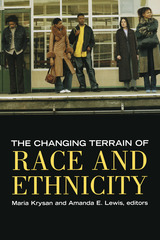 The Changing Terrain of Race and Ethnicity
Maria Krysan
Russell Sage Foundation, 2004 The legal institutions of overt racism in the United States have been eliminated, but social surveys and investigations of social institutions confirm the continuing significance of race and the enduring presence of negative racial attitudes. This shift from codified and explicit racism to more subtle forms comes at a time when the very boundaries of race and ethnicity are being reshaped by immigration and a rising recognition that old systems of racial classification inadequately capture a diverse America. In The Changing Terrain of Race and Ethnicity, editors Maria Krysan and Amanda Lewis bring together leading scholars of racial dynamics to study the evolution of America's racial problem and its consequences for race relations in the future. The Changing Terrain of Race and Ethnicity opens by attempting to answer a puzzling question: how is it that so many whites think racism is no longer a problem but so many nonwhites disagree? Sociologist Lawrence Bobo contends that whites exhibit what he calls "laissez faire racism," which ignores historical and structural contributions to racial inequality and does nothing to remedy the injustices of the status quo. Tyrone Forman makes a similar case in his chapter, contending that an emphasis on "color blindness" allows whites to be comforted by the idea that all races are on a level playing field, while not recognizing the advantages they themselves have reaped from years of inequality. The book then moves to a discussion of the new ways that Americans view race. Eduardo Bonilla-Silva and Karen Glover argue that the United States is moving from a black-white divide to a tripartite system, where certain light-skinned, non-threatening minority groups are considered "honorary whites." The book's final section reexamines the theoretical underpinnings of scholarship on race and ethnicity. Joe Feagin argues that research on racism focuses too heavily on how racial boundaries are formed and needs to concentrate more on how those boundaries are used to maintain privileges for certain groups at the expense of others. Manning Marable contends that racism should be addressed at an institutional level to see the prevalence of "structural racism"—deeply entrenched patterns of inequality that are coded by race and justified by stereotypes. The Changing Terrain of Race and Ethnicity provides an in-depth view of racism in modern America, which may be less conspicuous but not necessarily less destructive than its predecessor, Jim Crow. The book's rich analysis and theoretical insight shed light on how, despite many efforts to end America's historic racial problem, it has evolved and persisted into the 21st century.
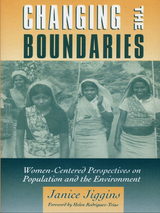 Changing the Boundaries: Women-Centered Perspectives On Population And The Environment
Janice Jiggins
Island Press, 1994 Changing the Boundaries explores gender relations with respect to education, reproductive health services, and agricultural resources -- three factors that are widely recognized as being central to the struggle for gender equity, population control, and environmental sustainability. As well as defining the role of women in the population-environment quandary, author Janice Jiggins explains how that role is the key to understanding issues of population and environment. Throughout the volume, she makes extensive use of research, experience, and documentation that draws on the views and publications of women in the global South, much of which is available to development practitioners but is rarely found in academic libraries. Data, arguments, concepts, and analysis from a wide and varied range of sources are woven together to link the experience of women's daily lives with population policies and global environmental politics.
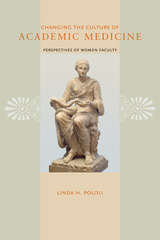 Changing the Culture of Academic Medicine: Perspectives of Women Faculty
Linda H. Pololi
Dartmouth College Press, 2010 Over the past twenty-five years, steadily increasing numbers of women have graduated as physicians, in sufficient numbers to be well represented in senior and leadership positions in the nation’s academic medical centers. Yet women’s expected advancement has stalled. Women rarely hold decision-making positions, and female department chairs or deans continue to be exceedingly rare. Why is this the case? Pololi’s study, based on extensive interviews, illuminates medical school culture and shows a sharp disconnect between the values of individual faculty members and the values of academic institutions of medicine. Pololi looks closely at women medical faculty’s experiences as outsiders in medicine, opening a window into medical culture. She argues that placing more women and people of color in leadership positions would provide transformative and more effective leadership to improve health care and would help address current inequities in the health care provided to different racial and cultural groups.
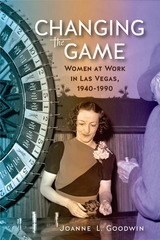 Changing the Game: Women at Work in Las Vegas, 1940-1990
Joanne L. Goodwin
University of Nevada Press, 2014 The growth of Las Vegas that began in the 1940s brought an influx of both women and men looking to work in the expanding hotel and casino industries. In fact, for the next fifty years the proportion of women in the labor force was greater in Las Vegas than the United States as a whole. Joanne L. Goodwin’s study captures the shifting boundaries of women’s employment in the postwar decades with narratives drawn from the Las Vegas Women Oral History Project. It counters clichéd pictures of women at work in the famed resort city as it explores women’s real strategies for economic survival and success.
Their experiences anticipated major trends in post-World War II labor history: the national migration of workers during and after the war, the growing proportion of women in the labor force, balancing work with family life, the unionization of service workers, and, above all, the desegregation of the labor force by sex and race. These narratives show women in Las Vegas resisting preassigned roles, seeing their work as a testimony of skill, a measure of independence, and a fulfillment of needs. Overall, these stories of women who lived and worked in Las Vegas in the last half of the twentieth century reveal much about the broader transitions for women in America between 1940 and 1990.
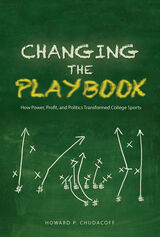 Changing the Playbook: How Power, Profit, and Politics Transformed College Sports
Howard Chudacoff
University of Illinois Press, 2015 "In Changing the Playbook, Howard P. Chudacoff delves into the background and what-ifs surrounding seven defining moments that redefined college sports. These changes involved fundamental issues--race and gender, profit and power--that reflected societal tensions and, in many cases, remain pertinent today: - the failed 1950 effort to pass a Sanity Code regulating payments to football players;
- the thorny racial integration of university sports programs;
- the boom in television money;
- the 1984 Supreme Court decision that settled who could control skyrocketing media revenues;
- Title IX's transformation of women's athletics;
- the cheating, eligibility, and recruitment scandals that tarnished college sports in the 1980s and 1990s;
- the ongoing controversy over paying student athletes a share of the enormous moneys harvested by schools and athletic departments.
A thought-provoking journey into the whos and whys of college sports history, Changing the Playbook reveals how the turning points of yesterday and today will impact tomorrow."
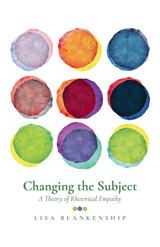 Changing the Subject: A Theory of Rhetorical Empathy
Lisa Blankenship
Utah State University Press, 2019 Changing the Subject explores ways of engaging across difference. In this first book-length study of the concept of empathy from a rhetorical perspective, Lisa Blankenship frames the classical concept of pathos in new ways and makes a case for rhetorical empathy as a means of ethical rhetorical engagement. The book considers how empathy can be a deliberate, conscious choice to try to understand others through deep listening and how language and other symbol systems play a role in this process that is both cognitive and affective.
Departing from agonistic win-or-lose rhetoric in the classical Greek tradition that has so strongly influenced Western thinking, Blankenship proposes that we ourselves are changed (“changing the subject” or the self) when we focus on trying to understand rather than simply changing an Other. This work is informed by her experiences growing up in the conservative South and now working as a professor in New York City, as well as the stories and examples of three people working across profound social, political, class, and gender differences: Jane Addams’s activist work on behalf of immigrants and domestic workers in Gilded Age Chicago; the social media advocacy of Brazilian rap star and former maid Joyce Fernandes for domestic worker labor reform; and the online activist work of Justin Lee, a queer Christian who advocates for greater understanding and inclusion of LGBTQ+ people in conservative Christian churches.
A much-needed book in the current political climate, Changing the Subject charts new theoretical ground and proposes ways of integrating principles of rhetorical empathy in our everyday lives to help fight the temptations of despair and disengagement. The book will appeal to students, scholars, and teachers of rhetoric and composition as well as people outside the academy in search of new ways of engaging across differences.
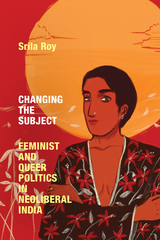 Changing the Subject: Feminist and Queer Politics in Neoliberal India
Srila Roy
Duke University Press, 2022 In Changing the Subject Srila Roy maps the rapidly transforming terrain of gender and sexual politics in India under the conditions of global neoliberalism. The consequences of India’s liberalization were paradoxical: the influx of global funds for social development and NGOs signaled the co-optation and depoliticization of struggles for women’s rights, even as they amplified the visibility and vitalization of queer activism. Roy reveals the specificity of activist and NGO work around issues of gender and sexuality through a decade-long ethnography of two West Bengal organizations, one working on lesbian, bisexual, and transgender issues and the other on rural women’s empowerment. Tracing changes in feminist governmentality that were entangled in transnational neoliberalism, Roy shows how historical and highly local feminist currents shaped contemporary queer and nonqueer neoliberal feminisms. The interplay between historic techniques of activist governance and queer feminist governmentality’s focus on changing the self offers a new way of knowing feminism—both as always already co-opted and as a transformative force in the world.
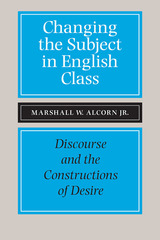 Changing the Subject in English Class: Discourse and the Constructions of Desires
Marshall W. Alcorn Jr.
Southern Illinois University Press, 2002 Drawing on the theoretical work of Jacques Lacan, Marshall W. Alcorn Jr. formulates a systematic explanation of the function and value of desire in writing instruction. Alcorn argues that in changing the subject matter of writing instruction in order to change student opinions, composition instructors have come to adopt an insufficiently complex understanding of subjectivity. This oversimplification hinders attempts to foster cultural change. Alcorn proposes an alternative mode of instruction that makes effective use of students’ knowledge and desire. The resulting freedom in expression—personal as well as political—engenders the recognition, circulation, and elaboration of desire necessary for both human communication and effective politics. Responding to James Berlin’s reconception of praxis in the classroom, Theresa Ebert’s espousal of disciplined instructions, and Lester Faigley’s introduction of a postmodern theory of subjectivity, Alcorn follows both Lacan and Slavoj Žižek in insisting desire be given free voice and serious recognition. In composition as in politics, desire is the ground of agency. Competing expressions of desire should generate a dialectic in social-epistemic discourse that encourages enlightenment over cynicism and social development over authoritarian demands. With clarity and personal voice, Alcorn explains how discourse is rooted in primitive psychological functions of desire and responds to complex cultural needs. In its theoretical scope this book describes a new pedagogy that links thought to emotion and the personal to the social.
 Changing the Subject: Philosophy from Socrates to Adorno
Raymond Geuss
Harvard University Press, 2017 “A history of philosophy in twelve thinkers…The whole performance combines polyglot philological rigor with supple intellectual sympathy, and it is all presented…in a spirit of fun…This bracing and approachable book [shows] that there is life in philosophy yet.”
—Times Literary Supplement
“Exceptionally engaging…Geuss has a remarkable knack for putting even familiar thinkers in a new light.”
—Notre Dame Philosophical Reviews
“Geuss is something like the consummate teacher, his analyses navigable and crystal, his guidance on point.”
—Doug Phillips, Key Reporter
Raymond Geuss explores the ideas of twelve philosophers who broke dramatically with prevailing wisdom, from Socrates and Plato in the ancient world to Nietzsche, Wittgenstein, and Adorno. The result is a striking account of some of the most innovative thinkers in Western history and an indirect manifesto for how to pursue philosophy today. Geuss cautions that philosophers’ attempts to break from convention do not necessarily make the world a better place. Montaigne’s ideas may have been benign, but the fate of those of Hobbes, Hegel, and Nietzsche has been more varied. Yet in the act of provoking people to think differently, philosophers remind us that we are not fated to live within the systems of thought we inherit.
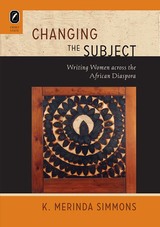 Changing the Subject: Writing Women across the African Diaspora
K. Merinda Simmons
Ohio State University Press, 2014 In Changing the Subject: Writing Women across the African Diaspora, K. Merinda Simmons argues that, in first-person narratives about women of color, contexts of migration illuminate constructions of gender and labor. These constructions and migrations suggest that the oft-employed notion of “authenticity” is not as useful a classification as many feminist and postcolonial scholars have assumed. Instead of relying on so-called authentic feminist journeys and heroines for her analysis, Simmons calls for a self-reflexive scholarship that takes seriously the scholar’s own role in constructing the subject.
The starting point for this study is the nineteenth-century Caribbean narrative The History of Mary Prince (1831). Simmons puts Prince’s narrative in conversation with three twentieth-century novels: Zora Neale Hurston’s Their Eyes Were Watching God, Gloria Naylor’s Mama Day, and Maryse Condé’s I, Tituba, Black Witch of Salem. She incorporates autobiography theory to shift the critical focus from the object of study—slave histories—to the ways people talk about those histories and to the guiding interests of such discourses. In its reframing of women’s migration narratives, Simmons’s study unsettles theoretical certainties and disturbs the very notion of a cohesive diaspora.
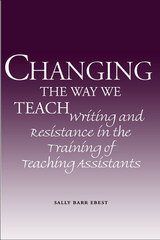 Changing the Way We Teach: Writing and Resistance in the Training of Teaching Assistants
Sally Barr Ebest
Southern Illinois University Press, 2005 Changing the Way We Teach: Writing and Resistance in the Training of Teaching Assistants draws on eighteen case studies to illustrate the critical role writing plays in overcoming graduate student resistance to instruction, facilitating change, and developing professional identity. Sally Barr Ebest argues that teaching assistants in English must be actively engaged in the theory and practice underlying composition pedagogy in order to better understand how to alter the way they teach and why such change is necessary. In illustrating the potential for change when the paradigm shift in composition is applied to graduate education, Ebest considers recent discussions of composition pedagogy; post-secondary teaching theories; cognitive, social cognitive, and educational psychology; and issues of gender, voice, and writing. Stemming from research conducted over a five-year period, this volume explores how a cross-section of teaching assistants responded to pedagogy as students and how their acceptance of pedagogy affected their performance as instructors. Investigating reasons behind manifestations of resistance and necessary elements for overcoming it, Ebest finds that engagement in composition strategies—reflective writing, journaling, drafting, and active learning—and restoration of feelings of self-efficacy are the primary factors that facilitate change. Concerned with gender as it relates to personal construct, Changing the Way We Teach traces the influence of familial expectations and the effects of literacy experiences on students and draws correlations between feminist and composition pedagogy. Ebest asserts that the phenomena contributing to the development of a strong, unified voice in women—self-knowledge, empathy, positive role models, and mentors—should be essential elements of a constructivist graduate curriculum. To understand composition pedagogy and to convince students of its values, Ebest holds that educators must embrace it themselves and trace the effects through active research. By providing graduate students with pedagogical sites for research and reflection, faculty enable them to express their anger or fear, study its sources, and quite often write their way to a new understanding.
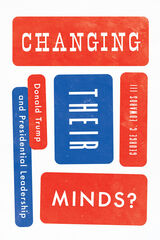 Changing Their Minds?: Donald Trump and Presidential Leadership
George C. Edwards III
University of Chicago Press, 2021 Despite popular perceptions, presidents rarely succeed in persuading either the public or members of Congress to change their minds and move from opposition to particular policies to support of them. As a result, the White House is not able to alter the political landscape and create opportunities for change. Instead, successful presidents recognize and skillfully exploit the opportunities already found in their political environments. If they fail to understand their strategic positions, they are likely to overreach and experience political disaster.
Donald Trump has been a distinctive president, and his arrival in the Oval Office brought new questions. Could someone with his decades of experience as a self-promoter connect with the public and win its support? Could a president who is an experienced negotiator obtain the support in Congress needed to pass his legislative programs? Would we need to adjust the theory of presidential leadership to accommodate a president with unique persuasive skills?
Building on decades of research and employing extensive new data, George C. Edwards III addresses these questions. He finds that President Trump has been no different than other presidents in being constrained by his environment. He moved neither the public nor Congress. Even for an experienced salesman and dealmaker, presidential power is still not the power to persuade. Equally important was the fact that, as Edwards shows, Trump was not able to exploit the opportunities he had. In fact, we learn here that the patterns of the president’s rhetoric and communications and his approach to dealing with Congress ultimately lessened his chances of success. President Trump, it turns out, was often his own agenda’s undoing.
 Changing Tropical Forests: Historical Perspectives on Today’s Challenges in Central and South America
Harold K. Steen and Richard P. Tucker, eds.
Duke University Press, 1991 Changing Tropical Forests begins with an overview of the history of deforestation in tropical America and the tasks facing Latin American environmental historians. Based on proceedings of a 1991 conference sponsored by the Forest History Society and IUFRO Forest History Group in Costa Rica, the contributors offer detailed accounts of the enivornmental history of specific forest conditions, grasslands, and changing ecosystems of Costa Rica, Mexico, Surinam, and Brazil. the role of human intervention in this process of change is also discussed. Contributors. William Balée, James R. Barborak, Peter Boomgaard, Larissa V. Brown, Gerardo Budowski, John Dargavel, Warren Dean, Silvia del Amo R., Elizabeth Graham, J. Régis Guillaumon, Rhena Hoffmann, Sally P. Horn, Sebastião Kengen, Herman W. Konrad, Mary Pamela Lehmann, Robert D. Leier, Murdo J. MacLeod, M. Patricia Marchak, Elinor G. K. Melville, David M. Pendergast, Susan M. Pierce, Leslie E. Sponsel, Richard P. Tucker, Terry West
 Changing Uganda: Dilemmas of Structural Adjustment
Hölger Bernt Hansen
Ohio University Press, 1992 Yoweri Museveni battled to power in 1986. His government has impressed many observers as Uganda’s most innovative since it gained independence from Britain in 1962. The Economist recommended it as a model for other African states struggling to develop their resources in the best interests of their peoples. But where was change to start? At the bottom in building resistance committees, or at the top in tough negotiations with the IMF? How was it to continue? Was it in the restructuring of the national army, in increasing respect for human rights, in the reform of education, in tackling AIDS, or in getting Ugandans to speak a common language? Was it in building more viable survival strategies for the poorest Ugandans or in restructuring the national constitution? The last five years have shown a radical approach to Uganda’s dilemmas. Holger Bernt Hansen and Michael Twaddle previously edited Uganda Now. It was brought together at a significant moment just as President Museveni was gaining power in 1985-6. It was so much in demand that it even entered the magendo market on the streets of Kampala. The book, which is still in print, was described by The Canadian Journal of African Studies as ‘virtually a mini-encyclopedia of Uganda’ and by The African Studies Review as ‘the best overview of Uganda’s trauma in the last two decades.’ The editors have assembled another team of Ugandan and international scholars to review the dilemmas of introducing revolutionary changes in an African country deeply affected by structural adjustment plans which have been imposed from outside.
Changing Unjust Laws Justly: Pro-Life Solidarity with "The Last and Least"
Colin Harte
Catholic University of America Press, 2005 Changing Unjust Laws Justly is the first book to address systematically the practical, legal, and ethical problems that are encountered in well-intentioned attempts to restrict abortion. It will be of considerable interest not only to political, legal, and moral philosophers, but also to lawmakers and the pro-life movement generally.
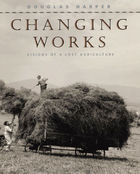 Changing Works: Visions of a Lost Agriculture
Douglas Harper
University of Chicago Press, 2001 The work of Douglas Harper has for two decades documented worlds in eclipse. A glimpse into the life of dairy farmers in upstate New York on the cusp of technological change, Changing Works is no exception. With photographs and interviews with farmers, Harper brings into view a social world altered by machines and stuns us with gorgeous visions of rural times past. As a member of this community, Harper relates compelling stories about families and their dairies that reveal how the advent of industrialized labor changed the way farmers structure their work and organize their lives. His new book charts the transformation of American farming from small dairies based on animal power and cooperative work to industrialized agriculture.
Changing Works combines Harper's pictures with classic images by photographers such as Gordon Parks, Sol Libsohn, and Charlotte Brooks-men and women whose work during the 1940s documented the mechanization and automation of agricultural practices. Part social history and part analysis of the drive to mass production, Changing Works examines how we farmed a half century ago versus how we do today through pictures new and old and through discussions with elderly farmers who witnessed the makeover. Ultimately, Harper challenges timely ecological and social questions about contemporary agriculture. He shows us how the dissolution of cooperative dairy farming has diminished the safety of the practice, degraded the way we relate to our natural environment, and splintered the once tight-knit communities of rural farmers. Mindful, then, of the advantages of preindustrial agriculture, and heeding the alarming spread of mad cow and foot-and-mouth disease, Changing Works harks back to the benefits of an older system.
 Changing Youth in a Changing Society: Patterns of Adolescent Development and Disorder
Michael Rutter
Harvard University Press, 1980 Changing Youth in a Changing Society begins with a complete survey of the problems of youth, showing which disorders peak during the teenage years. With this background of fact firmly established, Michael Rutter turns to the difficult historical questions about whether adolescent disorders are truly becoming more frequent. Here Rutter shows that the news is not uniformly bad. Some psychosocial problems, such as teenage alcoholism and crime, are still on the rise. But other problems, among them the much heralded generation gap, turn out to be largely mythical. Still others, like the decline in educational achievement, may only reflect historical changes in the population of teenagers being assessed.
Rutter’s historical analysis supports a comprehensive discussion of the causes of adolescent disorder. The effects of heredity, childhood, family, school, peer group, religion, the media, and the urban environment are all assessed in review of research which is a model of clarity and good sense. This review provides the factual framework for informed recommendations for more effective prevention and treatment of adolescent disorders.
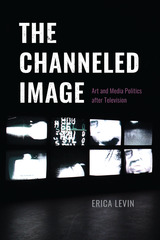 The Channeled Image: Art and Media Politics after Television
Erica Levin
University of Chicago Press, 2022 A fascinating look at artistic experiments with televisual forms.
Following the integration of television into the fabric of American life in the 1950s, experimental artists of the 1960s began to appropriate this novel medium toward new aesthetic and political ends. As Erica Levin details in The Channeled Image, groundbreaking artists like Carolee Schneemann, Bruce Conner, Stan VanDerBeek, and Aldo Tambellini developed a new formal language that foregrounded television’s mediation of a social order defined by the interests of the state, capital, and cultural elites. The resulting works introduced immersive projection environments, live screening events, videographic distortion, and televised happenings, among other forms. For Levin, “the channeled image” names a constellation of practices that mimic, simulate, or disrupt the appearance of televised images. This formal experimentation influenced new modes of installation, which took shape as multi-channel displays and mobile or split-screen projections, or in some cases, experimental work produced for broadcast. Above all, this book asks how artistic experimentation with televisual forms was shaped by events that challenged television broadcasters’ claims to authority, events that set the stage for struggles over how access to the airwaves would be negotiated in the future.
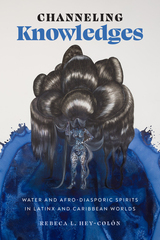 Channeling Knowledges: Water and Afro-Diasporic Spirits in Latinx and Caribbean Worlds
Rebeca L. Hey-Colón
University of Texas Press, 2023 2024 Honorable Mention, Isis Duarte Book Prize, Haiti/ Dominican Republic section, Latin American Studies Association How water enables Caribbean and Latinx writers to reconnect to their pasts, presents, and futures. Water is often tasked with upholding division through the imposition of geopolitical borders. We see this in the construction of the Rio Grande/Río Bravo on the US-Mexico border, as well as in how the Caribbean Sea and the Pacific Ocean are used to delineate the limits of US territory. In stark contrast to this divisive view, Afro-diasporic religions conceive of water as a place of connection; it is where spiritual entities and ancestors reside, and where knowledge awaits. Departing from the premise that water encourages confluence through the sustainment of contradiction, Channeling Knowledges fathoms water’s depth and breadth in the work of Latinx and Caribbean creators such as Mayra Santos-Febres, Rita Indiana, Gloria Evangelina Anzaldúa, and the Border of Lights collective. Combining methodologies from literary studies, anthropology, history, and religious studies, Rebeca L. Hey-Colón’s interdisciplinary study traces how Latinx and Caribbean cultural production draws on systems of Afro-diasporic worship—Haitian Vodou, La 21 División (Dominican Vodou), and Santería/Regla de Ocha—to channel the power of water, both salty and sweet, in sustaining connections between past, present, and not-yet-imagined futures.
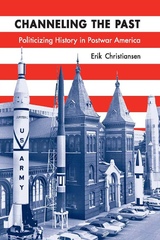 Channeling the Past: Politicizing History in Postwar America
Erik Christiansen
University of Wisconsin Press, 2013 After the turmoil of the Great Depression and World War II, Americans looked to the nation’s more distant past for lessons to inform its uncertain future. By applying recent and emerging techniques in mass communication—including radio and television programs and commercial book clubs—American elites working in media, commerce, and government used history to confer authority on their respective messages.
With insight and wit, Erik Christiansen uncovers in Channeling the Past the ways that powerful corporations rewrote history to strengthen the postwar corporate state, while progressives, communists, and other leftists vied to make their own versions of the past more popular. Christiansen looks closely at several notable initiatives—CBS’s flashback You Are There program; the Smithsonian Museum of American History, constructed in the late 1950s; the Cavalcade of America program sponsored by the Du Pont Company; the History Book Club; and the Freedom Train, a museum on rails that traveled the country from 1947 to 1949 exhibiting historic documents and flags, including original copies of the U.S. Constitution and the Magna Carta.
It is often said that history is written by the victors, but Christiansen offers a more nuanced perspective: history is constantly remade to suit the objectives of those with the resources to do it. He provides dramatic evidence of sophisticated calculations that influenced both public opinion and historical memory, and shows that Americans’ relationships with the past changed as a result.
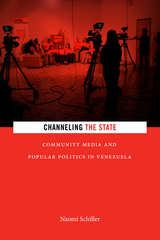 Channeling the State: Community Media and Popular Politics in Venezuela
Naomi Schiller
Duke University Press, 2018 Venezuela's most prominent community television station, Catia TVe, was launched in 2000 by activists from the barrios of Caracas. Run on the principle that state resources should serve as a weapon of the poor to advance revolutionary social change, the station covered everything from Hugo Chávez’s speeches to barrio residents' complaints about bureaucratic mismanagement. In Channeling the State, Naomi Schiller explores how and why Catia TVe's founders embraced alliances with Venezuelan state officials and institutions. Drawing on long-term ethnographic research among the station's participants, Schiller shows how community television production created unique openings for Caracas's urban poor to embrace the state as a collective process with transformative potential. Rather than an unchangeable entity built for the exercise of elite power, the state emerges in Schiller's analysis as an uneven, variable process and a contentious terrain where institutions are continuously made and remade. In Venezuela under Chávez, media activists from poor communities did not assert their autonomy from the state but rather forged ties with the middle class to question whose state they were constructing and who it represented.
 The Channeling Zone: American Spirituality in an Anxious Age
Michael F. Brown
Harvard University Press, 1997 Few expressions of New Age spirituality evoke greater skepticism and derision than does channeling, the practice of serving as a vessel for the voices of ancient or otherworldly beings. Channelers claim to be possessed by angels, aliens, and "ascended masters" who speak through them, offering advice and solace. Intellectuals dismiss them as cranks and charlatans; evangelical Christians accuse them of trafficking with Satanic forces. Meanwhile, the steady spread of channeling from the West Coast to the American heartland fuels the fear that the United States now confronts an epidemic of public irrationality.
The Channeling Zone reveals that this controversial practice has deep roots in earlier forms of American spiritualism while manifesting the most current concerns and anxieties of American life at the end of the twentieth century. Basing his analysis on dozens of interviews with practicing channels and extensive participant-observation research in New Age workshops, Michael Brown takes readers into the world of those who find meaning and inspiration--and occasionally a lucrative career--in regular conversations with spectral beings. Drawing on his previous research among Amazonian Indians, he brings a historical and comparative perspective to the study of this flamboyant expression of contemporary spirituality.
Neither a debunker nor an advocate, Brown weaves together the opinions and life stories of practicing channels and their clients to bring their world and its assumptions into higher relief. He describes the experiences that lead often highly educated, middle-class Americans to conclude that useful information is filtered through the spirit world. He pursues the nature of the quest--the fears, hopes, and expectations of the seekers--and finds its roots in traditional American notions of individualism and self-perfection. The Channeling Zone is a lively journey into the complex social world of the thousands of Americans who have abandoned mainstream religions in search of direct and improvisational contact with spiritual beings.
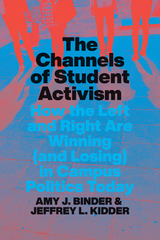 The Channels of Student Activism: How the Left and Right Are Winning (and Losing) in Campus Politics Today
Amy J. Binder and Jeffrey L. Kidder
University of Chicago Press, 2022 An eye-opening analysis of collegiate activism and its effects on the divisions in contemporary American politics.
The past six years have been marked by a contentious political atmosphere that has touched every arena of public life, including higher education. Though most college campuses are considered ideologically progressive, how can it be that the right has been so successful in mobilizing young people even in these environments?
As Amy J. Binder and Jeffrey L. Kidder show in this surprising analysis of the relationship between political activism on college campuses and the broader US political landscape, while liberal students often outnumber conservatives on college campuses, liberal campus organizing remains removed from national institutions that effectively engage students after graduation. And though they are usually in the minority, conservative student groups have strong ties to national right-leaning organizations, which provide funds and expertise, as well as job opportunities and avenues for involvement after graduation. Though the left is more prominent on campus, the right has built a much more effective system for mobilizing ongoing engagement. What’s more, the conservative college ecosystem has worked to increase the number of political provocations on campus and lower the public’s trust in higher education.
In analyzing collegiate activism from the left, right, and center, The Channels of Student Activism shows exactly how politically engaged college students are channeled into two distinct forms of mobilization and why that has profound consequences for the future of American politics.
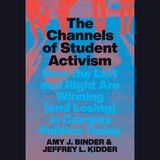 The Channels of Student Activism: How the Left and Right Are Winning (and Losing) in Campus Politics Today
Amy J. Binder and Jeffrey L. Kidder
University of Chicago Press, 2022 This is an auto-narrated audiobook edition of this book. An eye-opening analysis of collegiate activism and its effects on the divisions in contemporary American politics.
The past six years have been marked by a contentious political atmosphere that has touched every arena of public life, including higher education. Though most college campuses are considered ideologically progressive, how can it be that the right has been so successful in mobilizing young people even in these environments?
As Amy J. Binder and Jeffrey L. Kidder show in this surprising analysis of the relationship between political activism on college campuses and the broader US political landscape, while liberal students often outnumber conservatives on college campuses, liberal campus organizing remains removed from national institutions that effectively engage students after graduation. And though they are usually in the minority, conservative student groups have strong ties to national right-leaning organizations, which provide funds and expertise, as well as job opportunities and avenues for involvement after graduation. Though the left is more prominent on campus, the right has built a much more effective system for mobilizing ongoing engagement. What’s more, the conservative college ecosystem has worked to increase the number of political provocations on campus and lower the public’s trust in higher education.
In analyzing collegiate activism from the left, right, and center, The Channels of Student Activism shows exactly how politically engaged college students are channeled into two distinct forms of mobilization and why that has profound consequences for the future of American politics.
Channels, Propagation and Antennas for Mobile Communications
Rodney Vaughan
The Institution of Engineering and Technology, 2003 Written by two leading experts in the field, this exceptional book introduces the reader to the principles, theory and applications of physical layer wireless/mobile communications. In the area of wireless, the antennas, propagation and the radio channel used are inter-related; this book offers an explanation of that relationship, which is fundamental to the development of systems with high spectral efficiency.
 Chanting Down Babylon
Nathaniel Samuel Murrell
Temple University Press, 1998 This anthology explores Rastafari religion, culture, and politics in Jamaica and other parts of the African diaspora. An Afro-Caribbean religious and cultural movement that sprang from the streets of Kingston, Jamaica and the 1930s, today Rastafari has close to one million adherents. The basic message of Rastafari -- the dismantling of all oppressive institutions and the liberation of humankind -- even has strong appeal to non-believers who are captivated by reggae music, the lyrics, and the "immortal spirit" of its enormously popular practitioner, Bob Marley.
Probing into Rastafari's still evolving belief system, political goals, and cultural expression, the contributors to this volume emphasize the importance of Africana history and the Caribbean context. "Long before the term 'Afrocentricity' came into popular use in the United States, Jamaican Rastafarians had embraced the concept as the most important recipe for naming their reality and reclaiming their black heritage in the African diaspora."
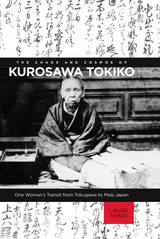 The Chaos and Cosmos of Kurosawa Tokiko: One Woman’s Transit from Tokugawa to Meiji Japan
Laura Nenzi
University of Hawaii Press, 2015 The Chaos and Cosmos of Kurosawa Tokiko is the story of a self-described “base-born nobody” who tried to change the course of Japanese history. Kurosawa Tokiko (1806–1890), a commoner from rural Mito domain, was a poet, teacher, oracle, and political activist. In 1859 she embraced the xenophobic loyalist faction (known for the motto “revere the emperor, expel the barbarians”) and traveled to Kyoto to denounce the shogun’s policies before the emperor. She was arrested for slander, taken to Edo’s infamous Tenmachō prison, and sentenced to banishment. In her later years, having crossed the Tokugawa-Meiji divide, Tokiko became an elementary school teacher and experienced firsthand the modernizing policies of the new government. After her death she was honored with court rank for her devotion to the loyalist cause. Tokiko’s story reflects not only some of the key moments in Japan’s transition to the modern era, but also some of its lesser- known aspects, thereby providing us with a broader narrative of the late-Tokugawa crisis, the collapse of the shogunate, and the rise of the Meiji state. The peculiar combination of no-nonsense single-mindedness and visionary flights of imagination evinced in her numerous diaries and poetry collections nuances our understanding of activism and political consciousness among rural non-elites by blurring the lines between the rational and the irrational, focus and folly. Tokiko’s use of prognostication and her appeals to cosmic forces point to the creative paths women have constructed to take part in political debates as well as the resourcefulness required to preserve one’s identity in the face of changing times. In the early twentieth century, Tokiko was reimagined in the popular press and her story rewritten to offset fears about female autonomy and boost local and national agendas. These distorted and romanticized renditions offer compelling examples of the politicization of the past and of the extent to which present anxieties shape historical memory. That Tokiko was unimportant and her loyalist mission a failure is irrelevant. What is significant is that through her life story we are able to discern the ordinary individual in the midst of history. By putting an extra in the spotlight, The Chaos and Cosmos of Kurosawa Tokiko offers a new script for the drama that unfolded on the stage of late-Tokugawa and early Meiji history.
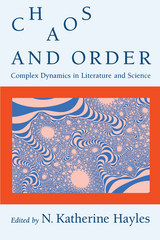 Chaos and Order: Complex Dynamics in Literature and Science
Edited by N. Katherine Hayles
University of Chicago Press, 1991 The scientific discovery that chaotic systems embody deep structures of order is one of such wide-ranging implications that it has attracted attention across a spectrum of disciplines, including the humanities. In this volume, fourteen theorists explore the significance for literary and cultural studies of the new paradigm of chaotics, forging connections between contemporary literature and the science of chaos. They examine how changing ideas of order and disorder enable new readings of scientific and literary texts, from Newton's Principia to Ruskin's autobiography, from Victorian serial fiction to Borges's short stories.
N. Katherine Hayles traces shifts in meaning that chaos has undergone within the Western tradition, suggesting that the science of chaos articulates categories that cannot be assimilated into the traditional dichotomy of order and disorder. She and her contributors take the relation between order and disorder as a theme and develop its implications for understanding texts, metaphors, metafiction, audience response, and the process of interpretation itself. Their innovative and diverse work opens the interdisciplinary field of chaotics to literary inquiry.
 Chaos and the Automaton
Franco 'Bifo' Berardi
University of Minnesota Press, 2024 Facing real threats of extinction and futurelessness, a search for new ground on which to build projects toward emancipation
Chaos and the Automaton is the first volume to collect Franco “Bifo” Berardi’s extensive collaboration with e-flux, which has become one of his primary English-language publishers since 2010. The selection of key essays collected here presents Berardi’s prescient interventions into more than a decade of social turmoil, offering a tour through the cataclysms that have rocked the foundations of the global order since the 2008 financial crisis, from European austerity, Occupy, the Arab Spring, and Anonymous through the ascendance of Pope Francis, Brexit, Covid-19, the Trump–Biden sequence, the U.S. Capitol riots, and the Russian invasion of Ukraine—as well as bizarre new cultural occurrences that were consequences. Berardi draws not only from current events but also movements and figures at the firmament of his thought, such as Guattari, Pasolini, and Italian street art of the 1970s. His essays represent a sustained and singular effort to reveal the psychic and material underpinnings of a society in which history came roaring back at the same moment as any vision of a sustainable future receded from sight. “I know that it is dangerous to write in simultaneity with events that nobody can precisely foresee, that can only be vaguely intuited,” he wrote on the eve of the 2020 American elections, “but the only way to imagine something about the becoming of the psycho-sphere is to run ahead of the dynamics of the disaster.”
 Chaos, Creativity, Completion: New Approaches to Writing and ADHD
Edited by Chloe Martinez and Lisa Van Orman Hadley
University of Chicago Press Fifteen essays that offer inspiration, encouragement, and advice from accomplished writers with ADHD.
A rising number of ADHD diagnoses, particularly among adults, is not only confirmed by medical studies and mainstream reporting but also borne out across social media and elsewhere among people who’d been privately coping with persistent, often inexpressible challenges. Many of the contributors to this collection can attest to how a later-in-life diagnosis radically demystified the patterns, impulses, and impasses that had affected their lives and their writing. The essays in Chaos, Creativity, Completion reflect the ways poets, novelists, memoirists, filmmakers, and others have come to understand and engage the relationship between their ADHD and their creative practices.
These essays consider how writers can embrace rather than mask their neurodifference, offering multiple ways of finding writing practices that work for ADHD brains—including techniques that often look quite different from traditional writing instruction. Some essays are analytical, some are reflective, and some are delightfully weird, employing humor, research, personal narrative, deep description, close reading, and experimental approaches to genre and form. Each essay also concludes with a writing prompt, providing readers with opportunities to expand their own creative toolkits. Finally, the book includes an interview with David Kessler, a licensed therapist and nationally recognized ADHD advocate, and an appendix with a glossary of helpful terms and a list of recommended resources, from books and organizations to apps and gadgets.
Just as the experience of ADHD varies from person to person, so too do the ways those experiences can be expressed. Chaos, Creativity, Completion is a kaleidoscopic, adventurous series of takes on what writing looks like today.
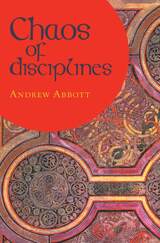 Chaos of Disciplines
Andrew Abbott
University of Chicago Press, 2000 In this vital new study, Andrew Abbott presents a fresh and daring analysis of the evolution and development of the social sciences. Chaos of Disciplines reconsiders how knowledge actually changes and advances. Challenging the accepted belief that social sciences are in a perpetual state of progress, Abbott contends that disciplines instead cycle around an inevitable pattern of core principles. New schools of thought, then, are less a reaction to an established order than they are a reinvention of fundamental concepts.
Chaos of Disciplines uses fractals to explain the patterns of disciplines, and then applies them to key debates that surround the social sciences. Abbott argues that knowledge in different disciplines is organized by common oppositions that function at any level of theoretical or methodological scale. Opposing perspectives of thought and method, then, in fields ranging from history, sociology, and literature, are to the contrary, radically similar; much like fractals, they are each mutual reflections of their own distinctions.
Chaos On The Shop Floor
Tom Juravich
Temple University Press, 1988 "Juravich argues that problems in declining American productivity and competitiveness-often and conveniently blamed on workers-can be placed principally in the laps of management."
--Socialist Review
"[Juravich] provides valuable insights into the operations of a small manufacturing firm, emphasizing the role of worker ‘tradecraft' practiced on the job.... Of greatest interest to institutions with strong sociology/industrial psychology holdings serving upper-division and graduate students, but also relevant for libraries serving vocational and technical students."
--Choice
From his well-placed vantage point, Juravich has produced an interesting and valuable ethnography of factory life in the industrial periphery.... I recommend this book to those interested in the sociology of work. It is written clearly and straightforwardly, and it is well suited for undergraduate or graduate courses.
--Contemporary Sociology
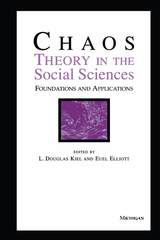 Chaos Theory in the Social Sciences: Foundations and Applications
L. Douglas Kiel and Euel Elliott, Editors
University of Michigan Press, 1997 Chaos Theory in the Social Sciences: Foundations and Applications offers the most recent thinking in applying the chaos paradigm to the social sciences. The book explores the methodological techniques--and their difficulties--for determining whether chaotic processes may in fact exist in a particular instance and examines implications of chaos theory when applied specifically to political science, economics, and sociology. The contributors to the book show that no single technique can be used to diagnose and describe all chaotic processes and identify the strengths and limitations of a variety of approaches.
The essays in this volume consider the application of chaos theory to such diverse phenomena as public opinion, the behavior of states in the international arena, the development of rational economic expectations, and long waves.
Contributors include Brian J. L. Berry, Thad Brown, Kenyon B. DeGreene, Dimitrios Dendrinos, Euel Elliott, David Harvey, L. Ted Jaditz, Douglas Kiel, Heja Kim, Michael McBurnett, Michael Reed, Diana Richards, J. Barkley Rosser, Jr., and Alvin M. Saperstein.
L. Douglas Kiel and Euel W. Elliott are both Associate Professors of Government, Politics, and Political Economy, University of Texas at Dallas.
Chaos to Cosmos: Studies in Biblical Patterns of Creation
Susan Niditch
SBL Press, 2000 Originally Published by Scholars Press Now Available from Duke University Press A fresh look at Genesis 1:11 from the perspectives of comparative literature and cultural anthropology. Susan Niditch reveals how Hebrew narratives of chaos, creation, and cosmos structure a mythic-literary world and create an order for human existence. Both the scholar and the student will find Niditch’s imaginative interpretation illuminating.
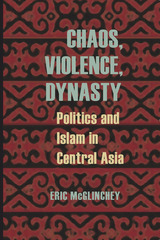 Chaos, Violence, Dynasty: Politics and Islam in Central Asia
Eric McGlinchey
University of Pittsburgh Press, 2011
In the post-Soviet era, democracy has made little progress in Central Asia. In Chaos, Violence, Dynasty, Eric McGlinchey presents a compelling comparative study of the divergent political courses taken by Kyrgyzstan, Uzbekistan, and Kazakhstan in the wake of Soviet rule. McGlinchey examines economics, religion, political legacies, foreign investment, and the ethnicity of these countries to evaluate the relative success of political structures in each nation.
McGlinchey explains the impact of Soviet policy on the region, from Lenin to Gorbachev. Ruling from a distance, a minimally invasive system of patronage proved the most successful over time, but planted the seeds for current “neo-patrimonial” governments. The level of direct Soviet involvement during perestroika was the major determinant in the stability of ensuing governments. Soviet manipulations of the politics of Uzbekistan and Kazakhstan in the late 1980s solidified the role of elites, while in Kyrgyzstan the Soviets looked away as leadership crumbled during the ethnic riots of 1990. Today, Kyrgyzstan is the poorest and most politically unstable country in the region, thanks to a small, corrupt, and fractured political elite. In Uzbekistan, Islam Karimov maintains power through the brutal suppression of disaffected Muslims, who are nevertheless rising in numbers and influence. In Kazakhstan, a political machine fueled by oil wealth and patronage underlies the greatest economic equity in the region, and far less political violence.
McGlinchey’s timely study calls for a more realistic and flexible view of the successful aspects of authoritarian systems in the region that will be needed if there is to be any potential benefit from foreign engagement with the nations of Central Asia, and similar political systems globally.
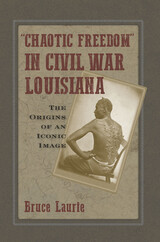 "Chaotic Freedom" in Civil War Louisiana: The Origins of an Iconic Image
Bruce Laurie
University of Massachusetts Press, 2021 The image is terrible and familiar. A man sits, his face in profile, his torso exposed. His back is a breathtaking mass of scars, crisscrossing his body and baring the brutality of American slavery. Reproduced as a carte de visite, the image circulated widely throughout abolitionist networks and was featured in Harper's Weekly. Its undeniable power testified to the evils of slavery. But who was this man and how did this image come to be?
Bruce Laurie uncovers the people and events that created this seminal image, telling the tale of three men, two Yankee soldiers from western Massachusetts who were serving the Union Army in Louisiana and a man named Peter whose scarred back horrified all who saw it. The two soldiers were so shocked by what had been done to Peter, they sought to capture the image and document slavery's cruelty, the likes of which was all too common among those fleeing bondage in Louisiana. Meticulously researched and briskly told, this short volume unearths the story behind an iconic image.
 Chapal Rani, the Last Queen of Bengal: The Life and Times of a Female Impersonator
Sandip Roy
Seagull Books, 2025 Blending biography with evocative vignettes, Chapal Rani traces the career of Bengali stage actor Chapal Bhaduri and his struggle for artistic identity in a changing world.
As the last great female impersonator of Bengali theater, Chapal Bhaduri—known as Chapal Rani—once held audiences spellbound in the jatra tradition, where men became goddesses and heroines. But when women finally took their place on stage, Chapal found himself exiled from the world he had ruled. In this groundbreaking biography, Sandip Roy captures the rise and fall of a performer whose art was inseparable from his identity.
Told in Chapal’s own voice and interwoven with evocative fictional vignettes, Chapal Rani, the Last Queen of Bengal brings to life Kolkata’s golden age of theater and the resilience of a man who refused to disappear. Through decades of research and deeply personal interviews, Roy crafts a moving portrait of gender and belonging.
Chapel of Inadvertent Joy
Jeffrey McDaniel
University of Pittsburgh Press, 2013
“Reading Jeffrey McDaniel’s gorgeously dark and utterly compelling Chapel of Inadvertent Joy reminds me that he is probably the most important poet in America. The book in your hands was written by a master of metaphor and a poet of huge imagination and fierce ingenuity, a fine antidote to realism. Get this voice in your head.”
—Major Jackson
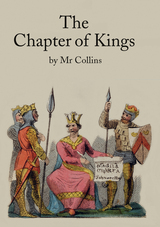 The Chapter of Kings
Mr. Collins
Bodleian Library Publishing, 2005
Poor Edward the Fifth was young killed in his bed
By his uncle, Richard, who was knocked on the head
By Henry the Seventh, who in fame grew big
And Henry the Eighth, who was fat as a pig!
By the time "Mr. Collins" had written this verse, George III, the King of England, had been noticeably missing for seven years—having spent much of the time in his final period of illness at Windsor Castle—and the country had forever lost its American colonies. For many English citizens this dismal period was considered to be the beginning of the end for the British monarchy. The Chapter of Kings, offered here in a facsimile edition, provides a good deal of illustration to that effect.
For the first time since 1818, these charming verses, which were written for children but remain a biting satire ofthe British monarchy, are available for our edification and amusement, each accompanied by hand-drawn "portraits" of England's kings, from Caesar through George, the prince and future king.
Written and illustrated with a keen sense of irony, The Chapter of Kings is a fascinating peek, both for children and parents, into nineteenth-century attitudes toward the royals.
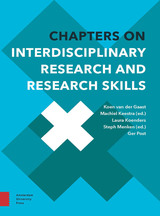 Chapters on Interdisciplinary Research and Research Skills
Koen van der Gaast
Amsterdam University Press, 2020 This book is a special edition, compiled for to the MSc Course Research Methodologies as taught at the Faculty of Aerospace Engineering at Delft University of Technology. It is a compilation of useful chapters from several sources on how to structure, set up, carry out and write up your (thesis) research to aid you in writing your research plan. Next to that it acts as a companion during your thesis research. After introducing you to the philosophy of scientific research, subsequent chapters each contribute to the different phases of your research. The book uniquely allows for the often multi- or interdisciplinary research many of you carry out, based on the established Dutch university tradition of (semi-)independent student research, creating a thread through the process for you to follow.
This edition is a collection of chapters from An Introduction to Interdisciplinary Research (2016), edited by Steph Menken and Machiel Keestra, and Academic Skills for Interdisciplinary Studies. Revised edition (2019), by Koen van der Gaast, Laura Koenders and Ger Post, published by Amsterdam University Press.
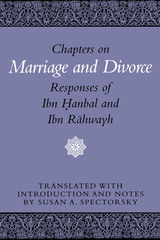 Chapters on Marriage and Divorce: Responses of Ibn Hanbal and Ibn Rahwayh
Translated with introduction and notes by Susan A. Spectorsky
University of Texas Press, 1993 While western-derived legal codes have superseded Islamic law in many parts of the Muslim world, Islamic, Koran-based law still retains its force in the area of marriage and family relations, the area that is key to the status of women. This work makes available for the first time in English three compilations of responses to questions about family law given by two prominent Muslim jurists of the ninth century (third century of Islam)—Ahmad b. Hanbal, the eponymous founder of the Hanbali rite of Sunni Islam (the one dominant in Saudi Arabia), and Ishaq b. Rahwayh. These compilations are basic sources for the study of the development of legal thinking in Islam. The introduction to the translation locates the compilations in a historical context and elucidates how the various issues of family law are treated. An appendix contains a collation of the significant variants among the manuscripts and printed versions of the Arabic texts. The volume concludes with a topical index and an index of names.
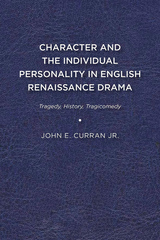 Character and the Individual Personality in English Renaissance Drama: Tragedy, History, Tragicomedy
John E. Curran
University of Delaware Press, 2014 Character and the Individual Personality in English Renaissance Drama: Tragedy, History, Tragicomedy studies instantiations of the individualistic character in drama, Shakespearean and non-Shakespearean, and some of the Renaissance ideas allowing for and informing them. Setting aside such fraught questions as the history of Renaissance subjectivity and individualism on the one hand and Shakespearean exceptionalism on the other, we can find that in some plays, by a range of different authors and collaborators, a conception has been evidenced of who a particular person is, and has been used to drive the action. This evidence can take into account a number of internal and external factors that might differentiate a person, and can do so drawing on the intellectual context in a number of ways. Ideas with potential to emphasize the special over the general in envisioning the person might come from training in dialectic (thesis vs hypothesis) or in rhetoric (ethopoeia), from psychological frameworks (casuistry, humor theory, and their interpenetration), or from historiography (exemplarity). But though they depicted what we would call personality only intermittently, and with assumptions different from our own about personhood, dramatists sometimes made a priority of representing the workings of a specific mind: the patterns of thought and feeling that set a person off as that person and define that person singularly rather than categorically. Some individualistic characters can be shown to emerge where we do not expect, such as with Fletcherian personae like Amintor, Arbaces, and Montaigne of The Honest Man’s Fortune; some are drawn by playwrights often uninterested in character, such as Chapman’s Bussy D’Ambois, Jonson’s Cicero, and Ford’s Perkin Warbeck; and some appear in being constructed differently from others by the same author, as when Webster’s Bosola is set in contrast to Flamineo, and Marlowe’s Faustus is set against Barabas. But Shakespearean characters are also examined for the particular manner in which each troubles the categorical and exhibits a personality: Othello, Good Duke Humphrey, and Marc Antony.
Published by University of Delaware Press. Distributed worldwide by Rutgers University Press.
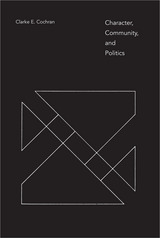 Character, Community, and Politics
Clarke E. Cochran
University of Alabama Press, 1982 A classic political philosophy text, available again
The revival of political philosophy has frequently assumed that a theory of human well-being and fulfillment is necessary, preoccupied with questions of epistemology and technical conceptual analysis. In instances where the nature of the human good is considered, the paradigm of autonomous individualism customarily dominates. In Character, Community, and Politics, Cochran moves away from these prevailing ideas to develop a communal theory of political order, helping to redefine a number of fundamental, but often neglected, ideas. Chief among them are commitment, community, responsibility, and character—concepts Cochran develops through discussions of authority, freedom, pluralism, and the common good.
Drawing on a wide variety of fields, such as philosophy, ethics, literature, moral theology, and sociology, the author renews these concepts to outline a theory of human life and political order distinct from sclerotic categories such as conservatism, socialism, radicalism, or Marxism.
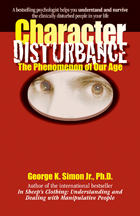 Character Disturbance: the phenomenon of our age
George K. Simon
Parkhurst Brothers, Inc., 2011 Modern permissiveness and the new culture of entitlement allows disturbed people to reach adulthood without proper socialization. In a book meant both for the general public and for professionals, bestselling author and psychologist George Simon explains in plain English: •How most disturbed characters think. •The habitual behaviors the disturbed use to avoid responsibility and to manipulate, deceive, and exploit others. •Why victims in relationships with disturbed characters do not get help they need from traditional therapies. •A straightforward guide to recognizing and understanding all relevant personality types, especially those most likely to undermine relationships. •A new framework for making sense of the crazy world many find themselves in when there's a disturbed character in their lives. •Concrete principles that promote responsibility and positive change when engaging disturbed characters. •Tactics (for both lay persons and therapists) to lessen the chances for victimization and empower those who would otherwise be victims in their relationships with many types of disturbed characters.
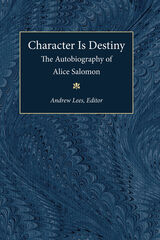 Character Is Destiny: The Autobiography of Alice Salomon
Andrew Lees, Editor
University of Michigan Press, 2004
In her autobiography, the remarkable feminist and social worker Alice Salomon recounts her transition in the 1890s from privileged idleness to energetic engagement in solving social problems. Salomon took the lead in establishing the profession of social work, and built a career as a social reformer, activist, and educator. A prolific author, Salomon also played a key role in the transatlantic dialogue between German and American feminists in the early twentieth century. Her narrative concludes with the account of her expulsion from Germany by the Nazis in 1937.
Salomon's formative influence on the field of social work makes her story crucial for the history of the discipline. This work will also appeal to anyone with an interest in the history of the feminist and socialist movements or the political and social history of twentieth-century Germany. The volume also includes several of Salomon's essays on social work and women's issues, along with photographs of Salomon, her students, and her colleagues.
Andrew Lees is Professor and Chair of the History Department at Rutgers University, Camden.
The Character of Truth: Historical Figures in Contemporary Fiction
Naomi Jacobs
Southern Illinois University Press, 1990
Can the novel survive in an age when tales of historical figures and contemporary personalities dominate the reading lists of the book-buying public?
Naomi Jacobs addresses this question in a study of writers such as William Styron, E. L. Doctorow, and Robert Coover, who challenge the dominance of nonfiction by populating their fictions with real people, living and dead. Jacobs explores the genesis, varieties, and implications of this trend in a prose as lively as that of the writers she critiques.
Using as a case study Robert Coover’s portrait of Richard Nixon in The Public Burning, Jacobs addresses the important legal and ethical questions raised by this trend and applies contemporary libel law to the fictionalization of living people, such as Richard Nixon. She closes her study by speculating on the future of this device and of the novel.
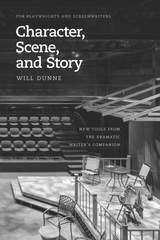 Character, Scene, and Story: New Tools from the Dramatic Writer's Companion
Will Dunne
University of Chicago Press, 2017 Will Dunne first brought the workshop experience down to the desk level with The Dramatic Writer’s Companion, offering practical exercises to help playwrights and screenwriters work through the problems that arise in developing their scripts. Now writers looking to further enhance their storytelling process can turn to Character, Scene, and Story.
Featuring forty-two new workshop-tested exercises, this sequel to The Dramatic Writer’s Companion allows writers to dig deeper into their scripts by fleshing out images, exploring characters from an emotional perspective, tapping the power of color and sense memory to trigger ideas, and trying other visceral techniques. The guide also includes a troubleshooting section to help tackle problem scenes. Writers with scripts already in progress will find they can think deeper about their characters and stories. And those who are just beginning to write will find the guidance they need to discover their best starting point. The guide is filled with hundreds of examples, many of which have been developed as both plays and films.
Character, Scene, and Story is fully aligned with the new edition of The Dramatic Writer’s Companion, with cross-references between related exercises so that writers have the option to explore a given topic in more depth. While both guides can stand alone, together they give writers more than one hundred tools to develop more vivid characters and craft stronger scripts.
 The Character Sketch as Philosophy: Manners, Mores, Types
Katie Ebner-Landy
Harvard University Press An insightful exploration of the moral and political power of the character sketch in early modern Europe—and the implications for our own relationship to this genre today.
In the fourth century BCE, the philosopher Theophrastus, a student of Aristotle, composed thirty character sketches depicting ordinary Athenian vices: idle chatter, bad timing, cowardice, shamelessness, and superstition, among others. Centuries later, this enigmatic text—known as the Characters—was feverishly translated and imitated by early modern Europeans convinced of its moral and political importance. Tracing this resurgence of the Theophrastan tradition, Katie Ebner-Landy sheds new light on the role of the character sketch as a philosophical tool.
Ebner-Landy shows that the original Characters is best understood as a work of political philosophy, designed to urge Athenians toward civic virtue. It is this quality that made the text so resonant in early modern Europe, where the character sketch again served as a means of encouraging ethical behavior and cultivating political knowledge. During the English Civil War, for example, the character sketch was used to diagnose new political types such as the Roundhead and the Cavalier. By the era of the Enlightenment, however, moral philosophy’s long association with the character sketch began to break down. A different approach to philosophy took hold, one that spurned literary descriptions of manners, mores, and types and instead emphasized the principles underlying knowledge itself. This shift, in turn, helped to drive a broader separation between literature and philosophy.
A revealing intellectual history, The Character Sketch as Philosophy also encourages us to consider what literary description might contribute to ethics and political thought today—and to think critically about the kinds of character sketches on which we still rely, from the snob to the mansplainer.
 Character: Three Inquiries in Literary Studies
Amanda Anderson, Rita Felski, and Toril Moi
University of Chicago Press, 2019 Over the last few decades, character-based criticism has been seen as either naive or obsolete. But now questions of character are attracting renewed interest. Making the case for a broad-based revision of our understanding of character, Character rethinks these questions from the ground up. Is it really necessary to remind literary critics that characters are made up of words? Must we forbid identification with characters? Does character-discussion force critics to embrace humanism and outmoded theories of the subject?
Across three chapters, leading scholars Amanda Anderson, Rita Felski, and Toril Moi reimagine and renew literary studies by engaging in a conversation about character. Moi returns to the fundamental theoretical assumptions that convinced literary scholars to stop doing character-criticism, and shows that they cannot hold. Felski turns to the question of identification and draws out its diverse strands, as well as its persistence in academic criticism. Anderson shows that character-criticism illuminates both the moral life of characters, and our understanding of literary form. In offering new perspectives on the question of fictional character, this thought-provoking book makes an important intervention in literary studies.
Characterisation and Control of Defects in Semiconductors
Filip Tuomisto
The Institution of Engineering and Technology, 2020 Understanding the formation and introduction mechanisms of defects in semiconductors is essential to understanding their properties. Although many defect-related problems have been identified and solved over the past 60 years of semiconductor research, the quest for faster, cheaper, lower power, and new kinds of electronics generates an ongoing need for new materials and properties, and so creates new defect-related challenges.
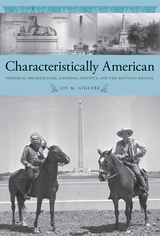 Characteristically American: Memorial Architecture, National Identity, and the Egyptian Revival
Joy M. Giguere
University of Tennessee Press, 2014 Prior to the nineteenth century, few Americans knew anything more of Egyptian culture than what could be gained from studying the biblical Exodus. Napoleon’s invasion of Egypt at the end of the eighteenth century, however, initiated a cultural breakthrough for Americans as representations of Egyptian culture flooded western museums and publications, sparking a growing interest in all things Egyptian that was coined Egyptomania. As Egyptomania swept over the West, a relatively young America began assimilating Egyptian culture into its own national identity, creating a hybrid national heritage that would vastly affect the memorial landscape of the nineteenth and twentieth centuries.
Far more than a study of Egyptian revivalism, this book examines the Egyptian style of commemoration from the rural cemetery to national obelisks to the Sphinx at Mount Auburn Cemetery. Giguere argues that Americans adopted Egyptian forms of commemoration as readily as other neoclassical styles such as Greek revivalism, noting that the American landscape is littered with monuments that define the Egyptian style’s importance to American national identity. Of particular interest is perhaps America’s greatest commemorative obelisk: the Washington Monument. Standing at 555 feet high and constructed entirely of stone—making it the tallest obelisk in the world—the Washington Monument represents the pinnacle of Egyptian architecture’s influence on America’s desire to memorialize its national heroes by employing monumental forms associated with solidity and timelessness. Construction on the monument began in 1848, but controversy over its design, which at one point included a Greek colonnade surrounding the obelisk,
and the American Civil War halted construction until 1877. Interestingly, Americans saw the completion of the Washington Monument after the Civil War as a mending of the nation itself, melding Egyptian commemoration with the reconstruction of America.
As the twentieth century saw the rise of additional commemorative obelisks, the Egyptian Revival became ensconced in American national identity. Egyptian-style architecture has been used as a form of commemoration in memorials for World War I and II, the civil
rights movement, and even as recently as the 9/11 remembrances. Giguere places the Egyptian style in a historical context that demonstrates how Americans actively sought to forge a national identity reminiscent of Egyptian culture that has endured to the present day.
Characterization in Midrash and Medieval Jewish Bible Commentaries
Sivan Nir
SBL Press, 2024 Sivan Nir meticulously examines the reimaginings of the biblical figures Balaam, Jeremiah, and Esther in a wide range of Jewish texts from second-century rabbinic sources to medieval Jewish biblical commentaries. Nir’s unique approach analyzes the continuity, or lack thereof, that emerges when characterization is viewed in relation to and in contrast with its cross cultural context, including the contemporary conventions found in Hellenistic rhetoric and novels, Byzantine Christian literature, Islamic adab and Mu‘tazila literature, and more. Such an approach reveals a transition from typological depictions to richer, more lifelike portrayals—a transformation shaped by rival notions of literature and history. Nir translates the sources into accessible English for students and scholars of not only Jewish exegesis but also those in Christian theology, Islamic studies, and world literature.
Characterization of Wide Bandgap Power Semiconductor Devices
Fei Wang
The Institution of Engineering and Technology, 2018 At the heart of modern power electronics converters are power semiconductor switching devices. The emergence of wide bandgap (WBG) semiconductor devices, including silicon carbide and gallium nitride, promises power electronics converters with higher efficiency, smaller size, lighter weight, and lower cost than converters using the established silicon-based devices. However, WBG devices pose new challenges for converter design and require more careful characterization, in particular due to their fast switching speed and more stringent need for protection.
 Characters. Herodas: Mimes. Sophron and Other Mime Fragments
Theophrastus. Herodas. Sophron
Harvard University Press, 2002 Dramatis personae.
This volume collects important examples of Greek literary portraiture. The Characters of Theophrastus consists of thirty fictional sketches of men who are each dominated by a single fault, such as arrogance, boorishness, or superstition. Unassuming in style, his character sketches nonetheless bear resemblance to the vivid figures of the period’s New Comedy. The Hellenistic poet Herodas wrote mimes, a popular Greek entertainment in which one actor or a small group portrayed a situation from everyday urban life, concentrating on depiction of character rather than on plot. Here too in a new text and translation are substantial portions of the mimes of Sophron, a Syracusan of the fifth century BC whose work Plato is said to have enjoyed, as well as a selection of anonymous mime fragments.
The extant work of Sophron and the anonymous mime fragments are newly added to the Loeb Classical Library in this edition. And Jeffrey Rusten and Ian Cunningham have updated their editions of Theophrastus and Herodas (both first published in 1993) in light of the latest scholarship.
 Characters. Mimes. Cercidas and the Choliambic Poets
Theophrastus, Herodas, and Cercidas
Harvard University Press, 1993 THIS EDITION HAS BEEN REPLACED BY A NEWER EDITION.
This volume collects some of the liveliest examples of Greek literary portraiture. The Characters of Theophrastus sketches thirty hypothetical men, each dominated by a single fault, such as rudeness, superstitution, or greed. Unassuming in style, the sketches nonetheless bear resemblance on the one hand to Aristotle's account of faults and virtues and on the other to the vivid figures of Menandrian New Comedy. This new text and translation by Jeffrey Rusten is based on the most recent scholarship.
Herodas flourished in the 270s and 260s--the high point of Hellenistic poetry. His poems are choliambic mimes, dramatic dialogues that depict characters in everyday urban settings and situations. I. C. Cunningham presents a new translation of Herodas, based on his Teubner text.
Also included here, in a reprint of the earlier Loeb edition by A. D. Knox, are the fragments of Greek poetry in the choliambic meter--especially those which offer a tantalizing glimpse into the raucous and sordid world of Hipponax--and the lyric iambics on themes of Cynic philosophy by Cercidas.
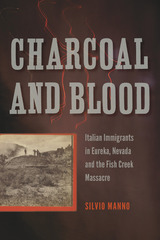 Charcoal and Blood: Italian Immigrants in Eureka, Nevada, and the Fish Creek Massacre
Silvio Manno
University of Nevada Press, 2016 Charcoal and Blood is a detailed account of a heinous crime perpetrated on Italian immigrants engaged in the production of charcoal on Nevada’s mining frontier at the close of the nineteenth century. On August 18, 1879, in a canyon near Fish Creek, outside Eureka, Nevada, five Italian charcoal burners were slain and six more were wounded, while fourteen were taken prisoner by a sheriff’s posse.
Through meticulous research on the event, relying on such primary sources as newspaper articles, author Silvio Manno provides the only comprehensive account of Eureka’s charcoal crisis and what came to be known as the Fish Creek Massacre. This is a well-documented narrative history of an important instance of class and ethnic conflict in the West. Readers interested in Nevada history, Italian American history, frontier trade unionism, and mining in the West will find this book a unique examination of an incident that occurred almost a century and a half ago and that has, until now, been largely overlooked.
Charge Acceleration and the Spatial Distribution of Radiation Emitted by Antennas and Scatterers
Edmund K. Miller
The Institution of Engineering and Technology, 2022 Given that charge acceleration is the cause of all electromagnetic radiation, the question arises about where such acceleration occurs on objects typically modelled and analysed by electromagnetic engineers. Charge acceleration, as the cause of radiation from these typical kinds of objects (antennas, radars etc) is examined in this book on a quantitative basis.
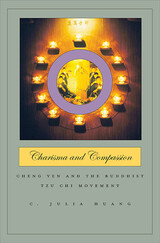 Charisma and Compassion: Cheng Yen and the Buddhist Tzu Chi Movement
C. Julia Huang
Harvard University Press, 2009 The Venerable Cheng-yen is an unassuming Taiwanese Buddhist nun who leads a worldwide social welfare movement with five million devotees in over thirty countries—with its largest branch in the United States. Tzu-Chi (Compassion Relief) began as a tiny, grassroots women's charitable group; today in Taiwan it runs three state-of-the-art hospitals, a television channel, and a university. Cheng-yen, who has been nominated for the Nobel Peace Prize, is a leader in Buddhist peace activism and has garnered recognition by Business Week as an entrepreneurial star.
Based on extensive fieldwork in Taiwan, Malaysia, Japan, and the United States, this book explores the transformation of Tzu-Chi. C. Julia Huang offers a vivid ethnography that examines the movement’s organization, its relationship with NGOs and humanitarian organizations, and the nature of its Buddhist transnationalism, which is global in scope and local in practice. Tzu-Chi's identity is intimately tied to its leader, and Huang illuminates Cheng-yen's successful blending of charisma and compassion and the personal relationship between leader and devotee that defines the movement.
This important book sheds new light on religion and cultural identity and contributes to our understanding of the nature of charisma and the role of faith-based organizations.
 Charisma and Factionalism in the Nazi Party
Joseph Nyomarkay
University of Minnesota Press, 1967 Charisma and Factionalism in the Nazi Party was first published in 1967. Minnesota Archive Editions uses digital technology to make long-unavailable books once again accessible, and are published unaltered from the original University of Minnesota Press editions. Few aspects of the history of the German Nazi party have had as little scholarly attention as has the nature or pattern of the intraparty factionalism. References to conflicts within the party may be found in most accounts dealing with the Nazi movement, but this book presents the first systematic study of those conflicts and their significance to an understanding of Nazism. Professor Nyomarkay bases his study on extensive research in which he had access to original source materials, including diaries and memoirs of party leaders and documents from Nazi trials and party archives. His study is concerned with the issues, attitudes, motivations, and actions of the various factions. His conclusions suggest new interpretations of such turning points in the history of Nazism as the Hanover and Bamberg conferences of 1925 and 1926, respectively, the Strasser crisis of 1930, and the stormtrooper purge of 1934. The author examines the role of Hitler's charisma in the party and shows that this trait elevated Hitler above factional strife, making him the object rather than the subject of rivalries. The discussion of charisma points up the difference between the Nazi factionalism and that which has occurred in other totalitarian movements, such as communism, where authority rests on ideology rather than on charisma. Through his study Professor Nyomarkay offers a new theory of the relationship between factional conflict and legitimacy of power, presenting a hypothesis of possible typologies of factional behavior based on the nature and degree of group cohesion. The book is important for students of political science and history and particularly for those interested in totalitarian movements and comparative political parties.
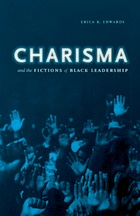 Charisma and the Fictions of Black Leadership
Erica R. Edwards
University of Minnesota Press, 2012 Social and political change is impossible in the absence of gifted male charismatic leadership—this is the fiction that shaped African American culture throughout the twentieth century. If we understand this, Erica R. Edwards tells us, we will better appreciate the dramatic variations within both the modern black freedom struggle and the black literary tradition. By considering leaders such as Marcus Garvey, Martin Luther King Jr., Malcolm X, and Barack Obama as both historical personages and narrative inventions of contemporary American culture, Edwards brings to the study of black politics the tools of intertextual narrative analysis as well as deconstruction and close reading. Examining a number of literary restagings of black leadership in African American fiction by W. E. B. Du Bois, George Schuyler, Zora Neale Hurston, William Melvin Kelley, Paul Beatty, and Toni Morrison, Edwards demonstrates how African American literature has contested charisma as a structuring fiction of modern black politics. Though recent scholarship has challenged top-down accounts of historical change, the presumption that history is made by gifted men continues to hold sway in American letters and life. This may be, Edwards shows us, because while charisma is a transformative historical phenomenon, it carries an even stronger seductive narrative power that obscures the people and methods that have created social and political shifts.
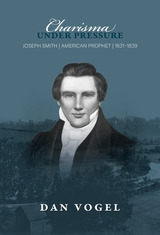 Charisma under Pressure: Joseph Smith, American Prophet, 1831–1839
Dan Vogel
Signature Books, 2023 When Joseph Smith entered Kirtland, Ohio, for the first time, he had only the year before established a church and brought forth a new book of scripture, the Book of Mormon. After moving the church and most of its members from western New York and establishing its headquarters at Kirtland—while simultaneously establishing his Zion in communities in Missouri—he oversaw a decade of both peace and prosperity and chaos and conflict.
But just who was Joseph Smith? What motivated him? In examining Smith’s life during his Ohio and Missouri sojourns, Vogel seeks to answer those questions. But, Vogel is quick to note, “There are, in fact, many possible constructions of Joseph Smith, and depending on how one assesses the evidence for his truth-claims, a completely different Joseph Smith emerges. But this is probably as Smith wanted it.”
During this period, Smith established a temple, printing presses, additional scripture, expanded church offices, and built a bank—all indicating a sense of permanence and strength for his young church at one level while causing its near collapse at another.
The Charismatic Bond: Political Behavior in Time of Crisis
Douglas Madsen and Peter Snow
Harvard University Press, 1991 Here is a book that takes up where Max Weber left off in his study of charisma and extends the theory with insights from other disciplines and new empirical data. Douglas Madsen and Peter Snow demonstrate that magnetic personalities must have willing followers, finding support for their argument in the rise of Juan Perón and the Peronistas in Argentina.
Charismatic Capitalism: Direct Selling Organizations in America
Nicole Woolsey Biggart
University of Chicago Press, 1990 Tupperware Home Parties, Shaklee Corporation, Amway, Mary Kay Cosmetics—theirs is an approach to business that violates many of the basic tenets of modern American commerce. Yet these direct selling organizations, fashioned by charismatic leaders and built upon devoted armies of door-to-door representatives, have grown to constitute an $8.5 billion a year industry and provide a livelihood for more than 5 million workers, the vast majority of them women.
The first full-scale study of this industry, Charismatic Capitalism, revises the standard contention that the rationalization of social institutions is an inevitable consequence of advanced capitalism. Nicole Woolsey Biggart argues instead that less rational organizations built on social networks may actually be more economically viable.
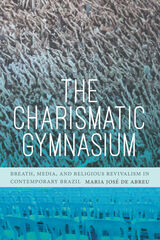 The Charismatic Gymnasium: Breath, Media, and Religious Revivalism in Contemporary Brazil
Maria José de Abreu
Duke University Press, 2020 In The Charismatic Gymnasium Maria José de Abreu examines how Charismatic Catholicism in contemporary Brazil produces a new form of total power through a concatenation of the breathing body, theology, and electronic mass media. De Abreu documents a vast religious respiratory program of revival popularly branded as “the aerobics of Jesus.” Pneuma—the Greek term for air, breath, and spirit—is central to this aerobic program, whose goal is to labor on the athletic elasticity of spirit. Tracing the rhetoric, gestures, and spaces that together constitute this new theological community, de Abreu exposes the articulating forces among evangelical Christianity, neoliberal logics, and the rise of right-wing politics. By calling attention to how an ethics of pauperism vitally intersects with the neoliberal ethos of flexibility, de Abreu shows how paradoxes do not hinder but expand the Charismatic gymnasium. The result, de Abreu demonstrates, is the production of a fluid form of totalitarianism and Christianity in Brazil and beyond.
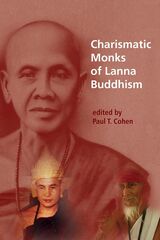 Charismatic Monks of Lanna Buddhism
Edited by Paul T. Cohen
National University of Singapore Press, 2017 Lanna Buddhism is a variant of Theravada Buddhism that evolved between the 13th and 16th centuries in northern Thailand and spread to neighbouring areas of the Upper Mekong region. A salient feature is the belief in charismatic monks, some of whom are renowned for their asceticism, supernatural powers and strivings to recreate a utopian ‘Buddha-land’. Issues highlighted in the book are the relationship of these charismatic monks to the state and state-controlled monkhood (sangha), the tendency for religious construction to spill over into economic development activities, and the diversity of lowland and highland devotional communities from Thailand and Myanmar. The book also explores contemporary influences on this religious tradition: the continuing marginalization of highland minorities and consequent devotion to messianic leaders, the incorporation for Lanna holy men into a national constellation of popular charismatic monks, the commercialization of Buddhism, and the patronage of wealthy urban elites. Charismatic Monks of Lanna Buddhism will appeal to scholars within the fields of Buddhist studies, Thai studies and the anthropology of religion as well as to those with an interest in the study of contemporary religious change in Thailand.
 Charitable Choice at Work: Evaluating Faith-Based Job Programs in the States
Sheila Suess Kennedy and Wolfgang Bielefeld
Georgetown University Press, 2006 Too often, say its critics, U.S. domestic policy is founded on ideology rather than evidence. Take "Charitable Choice": legislation enacted with the assumption that faith-based organizations can offer the best assistance to the needy at the lowest cost. The Charitable Choice provision of the 1996 Welfare Reform Act—buttressed by President Bush's Faith-Based Initiative of 2000—encouraged religious organizations, including congregations, to bid on government contracts to provide social services. But in neither year was data available to prove or disprove the effectiveness of such an approach. Charitable Choice at Work fills this gap with a comprehensive look at the evidence for and against faith-based initiatives. Sheila Suess Kennedy and Wolfgang Bielefeld review the movement's historical context along with legal analysis of constitutional concerns including privatization, federalism, and separation of church and state. Using both qualitative and, where possible, statistical data, the authors analyze the performance of job placement programs in three states with a representative range of religious, political, and demographic traits—Massachusetts, Indiana, and North Carolina. Throughout, they focus on measurable outcomes as they compare non-faith-based with faith-based organizations, nonprofits with for-profits, and the logistics of contracting before and after Charitable Choice. Among their findings: in states where such information is available, the composition of social service contractor pools has changed very little. Reflecting their varied political cultures, states have funded programs differently. Faith-based organizations have not been eager to seek government contracts, perhaps wary of additional legal restraints and reporting burdens. The authors conclude that faith-based organizations appear no more effective than secular organizations at government-funded social service provision, that there has been no dramatic change in the social welfare landscape since Charitable Choice, and that the constitutional concerns of its detractors may be valid. This empirical study penetrates the fog of the culture wars, moving past controversy over the role of religion in public life to offer pragmatic suggestions for policymakers and organizations who must decide how best to assist the needy.
Chariton's Chaereas and Callirhoe
Translated from the Greek by Warren E. Blake
University of Michigan Press, 1939 Chaereas and Callirhoe . . . is the earliest Greek romantic novel the text of which has been completely preserved; hence it is among the first ancestors of modern European fiction. In this lively tale of adventure, a nobly born heroine is kidnapped across the seas from Syracuse to Asia Minor, where her beauty causes many complications and she is finally rescued by her dashing lover. This book in antiquity took the place of such stories as Dumas and Sabatini have written for later generations.
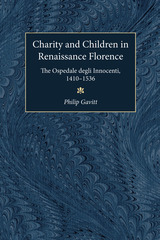 Charity and Children in Renaissance Florence: The Ospedale degli Innocenti, 1410-1536
Philip Gavitt
University of Michigan Press, 1991 Alongside the architectural splendor and intellectual brilliance of early Renaissance Florence there existed a second world of poverty, misery, social despair, and child abandonment. The Ospedale degli Innocenti (Hospital of the Innocents), designed and built between 1419 and 1445 by the renowned architect Filippo Brunelleschi, united these disparate worlds. Christian charity and compassion, as well as the humanist commitment to social perfection, family values, and love for children, were intertwined with a civic pride in which charity curried God's favor and invoked God's blessings on the city's fortunes. Based on a close and attentive reading of archival material from the hospital and from the Florentine State Archives, Charity and Children in Renaissance Florence both chronicles the concerns and ambivalence of parents who abandoned children and follows the lives of the hospital's inhabitants from childhood to death. The book also demonstrates how hospital officials deliberately duplicated the structure and values of the Florentine family within the hospital walls. Gavitt's research shows that early modern foundling hospitals were not charnel houses where parents knowingly and impersonally abandoned their unwanted children to certain death. Charity and Children in Renaissance Florence provokes reflection on the contrast between our own views on the care of homeless children and those of the Italian Renaissance. Winner of the Society for Italian Historical Studies 1988 Award for Best Unpublished Manuscript.
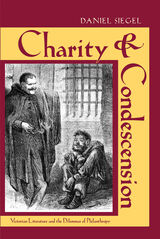 Charity and Condescension: Victorian Literature and the Dilemmas of Philanthropy
Daniel Siegel
Ohio University Press, 2012 Charity and Condescension explores how condescension, a traditional English virtue, went sour in the nineteenth century, and considers how the failure of condescension influenced Victorian efforts to reform philanthropy and to construct new narrative models of social conciliation. In the literary work of authors like Dickens, Eliot, and Tennyson, and in the writing of reformers like Octavia Hill and Samuel Barnett, condescension—once a sign of the power and value of charity—became an emblem of charity’s limitations. This book argues that, despite Victorian charity’s reputation for idealistic self-assurance, it frequently doubted its own operations and was driven by creative self-critique. Through sophisticated and original close readings of important Victorian texts, Daniel Siegel shows how these important ideas developed even as England struggled to deal with its growing underclass and an expanding notion of the state’s responsibility to its poor.
Charity and Religion in Medieval Europe
James William Brodman
Catholic University of America Press, 2009 Challenges conventional views of medieval piety by demonstrating how the ideology of charity and its vision of the active life provided an important alternative to the ascetical, contemplative tradition emphasized by most historians
CHARITY: THE PRACTICE OF NEIGHBORLINESS
Emanuel Swedenborg
Swedenborg Foundation Publishers, 1995
Charity is not only about giving to those in need, but in a broader sense about loving your neighbor and doing good things for other people without thought of reward. So wrote Swedish visionary Emanuel Swedenborg (1688-1772), who believed that charity, along with faith, was part of the foundation of spiritual practice.
This work combines two of Swedenborg's unpublished manuscripts to form a practical, inspirational handbook for applying the principle of doing good to daily life.
 Charlemagne
Johannes Fried
Harvard University Press, 2016 When Charlemagne died in 814 CE, he left behind a dominion and a legacy unlike anything seen in Western Europe since the fall of Rome. Distinguished historian and author of The Middle Ages Johannes Fried presents a new biographical study of the legendary Frankish king and emperor, illuminating the life and reign of a ruler who shaped Europe’s destiny in ways few figures, before or since, have equaled.
Living in an age of faith, Charlemagne was above all a Christian king, Fried says. He made his court in Aix-la-Chapelle the center of a religious and intellectual renaissance, enlisting the Anglo-Saxon scholar Alcuin of York to be his personal tutor, and insisting that monks be literate and versed in rhetoric and logic. He erected a magnificent cathedral in his capital, decorating it lavishly while also dutifully attending Mass every morning and evening. And to an extent greater than any ruler before him, Charlemagne enhanced the papacy’s influence, becoming the first king to enact the legal principle that the pope was beyond the reach of temporal justice—a decision with fateful consequences for European politics for centuries afterward.
Though devout, Charlemagne was not saintly. He was a warrior-king, intimately familiar with violence and bloodshed. And he enjoyed worldly pleasures, including physical love. Though there are aspects of his personality we can never know with certainty, Fried paints a compelling portrait of a ruler, a time, and a kingdom that deepens our understanding of the man often called “the father of Europe.”
Charlemagne’s Defeat in the Pyrenees: The Battle of Rencesvals
Xabier Irujo
Amsterdam University Press, 2021 The Battle of Errozabal (Rencesvals) is the one of the most significant historical events of eighth century Vasconia and in all Western Europe. The present monograph examines Charlemagne’s campaign from the perspective of military history but also as part of a complex socio-political process that began after the Muslim conquest of the Iberian Peninsula in 711 and culminated with the creation of the Kingdom of Pamplona in 824. The battle had major (and largely underappreciated) consequences for the Carolingian Empire. It also enjoyed a remarkable legacy as the topic of one of the oldest European epic poems, La Chanson de Roland. The events that took place in the Pyrenean pass of Errozabal on 15 August 778 defined the development of the Carolingian world, and lie at the heart of the early medieval contribution to the later medieval period.
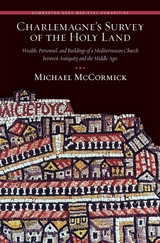 Charlemagne’s Survey of the Holy Land: Wealth, Personnel, and Buildings of a Mediterranean Church between Antiquity and the Middle Ages
Michael McCormick
Harvard University Press, 2011 In Charlemagne’s Survey of the Holy Land, Michael McCormick rehabilitates and reinterprets one of the most neglected and extraordinary sources from Charlemagne’s revival of the Roman empire: the report of a fact-finding mission to the Christian church of the Holy Land. The roll of documents translated and edited in this volume preserves the most detailed statistical portrait before the Domesday Book of the finances, monuments (including exact dimensions), and female and male personnel of any major Christian church.
Setting these documents in the context of economic trends, archaeological evidence, and a comparison of Holy Land churches and monasteries with their contemporaries west and east, this study shows that the Palestinian church was living in decline as its old financial links with Byzantium slackened. In recounting Charlemagne’s move to outflank the Byzantine emperor, McCormick constructs a microhistory of the Frankish king’s ambitions and formidable organizational talents for running an empire.
Supplementing McCormick’s major synthesis, The Origins of the European Economy, this volume will be indispensable reading for anyone interested in medieval rulership and economics, and in the history of the Holy Land, its Christian communities, and its late antique monuments.
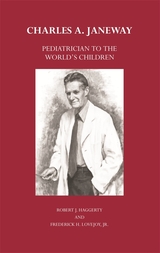 Charles A. Janeway: Pediatrician to the World’s Children
Robert J. Haggerty and Frederick H. Lovejoy, Jr.
Harvard University Press, 2007 This biography of one of the most prominent pediatricians of the twentieth century describes his illustrious medical family and his remarkable tenure of nearly three decades as Thomas Morgan Rotch Professor of Pediatrics at Harvard Medical School and head of the department of medicine at Children's Hospital, Boston. During this period Janeway built the first department of pediatrics in the nation with subspecialties based upon the new developments in basic sciences. Janeway and his colleagues defined the gamma globulin disorders that resulted in children's increased susceptibility to infections and associated arthritic disorders.
Janeway was the most visible U.S. pediatrician on the world scene in the last half of the 20th century. He traveled widely, taught modern pediatrics to thousands of physicians throughout the developing world, and brought many of them to the U.S. for further training. He was instrumental in starting teaching hospitals in Shiraz, Iran, and Cameroon.
Janeway believed that through teaching by example he might further the cause of peace in the world. His life is an inspiration to everyone in medicine, and serves as a model that all can seek to improve the health of the world's millions and promote a more peaceful future.
Charles A. Lindbergh and the American Dilemma: The Conflict of Technology and Human Values
Susan M. Gray
University of Wisconsin Press, 1988 Throughout his life, Lindbergh’s value structure, interests, and activities shifted and moved, yielding a conflict between instinct and intellect. Both its presence in his life and his readjustment of values in accordance with it are representative of his time and culture. He moved, with the twentieth century itself, from a faith in technology to a disenchantment with it and finally to a balanced resolution that synthesized the seeming oppositions of technology and the human spirit. This emphasis on a balance between technology and humanity, and Lindbergh’s belief that maintained the complementarity rather than the opposition of the two forces, finally culminated in a post-technological mysticism, a teleological worldview of science and nature as aspects of the same physical and spiritual environment.
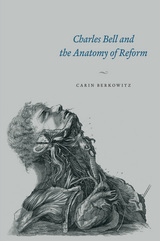 Charles Bell and the Anatomy of Reform
Carin Berkowitz
University of Chicago Press, 2015 Sir Charles Bell (1774–1842) was a medical reformer in a great age of reform—an occasional and reluctant vivisectionist, a theistic popularizer of natural science, a Fellow of the Royal Society, a surgeon, an artist, and a teacher. He was among the last of a generation of medical men who strove to fashion a particularly British science of medicine; who formed their careers, their research, and their publications through the private classrooms of nineteenth-century London; and whose politics were shaped by the exigencies of developing a living through patronage in a time when careers in medical science simply did not exist. A decade after Bell’s death, that world was gone, replaced by professionalism, standardized education, and regular career paths.
In Charles Bell and the Anatomy of Reform, Carin Berkowitz takes readers into Bell’s world, helping us understand the life of medicine before the modern separation of classroom, laboratory, and clinic. Through Bell’s story, we witness the age when modern medical science, with its practical universities, set curricula, and medical professionals, was born.
 Charles Benson: Mariner of Color in the Age of Sail
Michael Sokolow
University of Massachusetts Press, 2009 What a miserable life a sea fareing life is, wrote steward Charles Augustus Benson (1830–1881) in his journal in 1862. As a career mariner for nearly two decades, he was well acquainted with the common privations and tribulations of life at sea. But as a black man, Benson faced even greater challenges, especially when it came to his duties, his shipboard status, and his interactions with the other men on board. In nineteenth-century America, thousands of black men served as sailors. What makes Benson distinctive is the detailed diary he kept, a fascinating narrative that documents his experiences and feelings.
In this volume, Michael Sokolow uncovers the inner world of this remarkable individual. Raised in a small town in Massachusetts, Benson was the great-great-grandson of slaves, the great-grandson of a rare eighteenth-century intermarriage between a black man and a white woman, and the grandson of a veteran of the American Revolution. His own life had been marked by economic struggle, marital conflict, and the social ambiguities of mixed race heritage.
In his personal writings, Benson reflected on both the man he was and the man he wanted to be. Living in a culture that prized "self-made" individuals, he sought to forge his own identity even as he labored under strictures that severely limited opportunities for blacks. From his youth in rural Middlesex County, Massachusetts, to his subsequent adult life in the bustling port city of Salem, Benson measured himself against the mores of white, middle-class America. Undeterred by early failures in both marriage and finance, he held fast to his personal vision and became a respectable husband, provider, worker, and member of the black community.
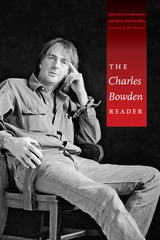 The Charles Bowden Reader
By Charles Bowden
University of Texas Press, 2010 “I will make bold to say that Bowden is America’s most alarming writer. Just when you think you’ve heard it all you learn you haven’t in the most pungent manner possible. . . . With The Charles Bowden Reader in hand you get a taste of it all, and any literate resident or visitor should want this book. It will lead them back to a close, alarming reading of the entire oeuvre. It is to ride in a Ferrari without brakes. There’s lots of oxygen but no safe way to stop. . . . Read him at your risk. You have nothing to lose but your worthless convictions about how things are.” —Jim Harrison, from the foreword From his first book, Killing the Hidden Waters, to his most recent, Murder City: Cuidad Juárez and the Global Economy's New Killing Fields, Charles Bowden has been sounding an alarm about the rapacious appetites of human beings and the devastation we inflict on the natural world we arrogantly claim to possess. His own corner of the world, the desert borderlands between the United States and Mexico, is Bowden's prime focus, and through books, magazine articles, and newspaper journalism he has written eloquently about key issues roiling the border—drug-related violence that is shredding civil society, illegal immigration and its toll on human lives and the environment, destruction of fragile ecosystems as cities sprawl across the desert and suck up the limited supplies of water. This anthology gathers the best and most representative writing from Charles Bowden's entire career. It includes excerpts from his major books—Killing the Hidden Waters, Blue Desert, Desierto: Memories of the Future, Blood Orchid,Blues for Cannibals, A Shadow in the City, Inferno, Exodus, and Some of the Dead Are Still Breathing—as well as articles that appeared in Esquire, Harper's, Mother Jones, and other publications. Imbued with Bowden's distinctive rhythm and lyrical prose, these pieces also document his journey of exploration—a journey guided, in large part, by the question posed in Some of the Dead Are Still Breathing: "How do we live a moral life in a culture of death?" This is no metaphor; Bowden is referring to the people, history, animals, and ecosystems that are being extinguished in the onslaught of twenty-first-century culture. The perfect introduction to his work, The Charles Bowden Reader is also essential for those who know him well and want to see the whole panorama of his passionate, intense writing.
 Charles Brockden Brown: An American Tale
By Alan Axelrod
University of Texas Press, 1983 Charles Brockden Brown: An American Tale is the first comprehensive literary, biographical, and cultural study of the novelist whom critic Leslie Fiedler has dubbed "the inventor of the American writer." The author of Wieland, Arthur Mervyn, Ormond, and Edgar Huntly, Charles Brockden Brown (1771-1810) is considered the first American professional author. He introduced Indian characters into American fiction. His keen interest in character delineation and abnormal psychology anticipates the stories of Poe, Hawthorne, and later masters of the psychological novel. Brown was eager to establish for himself an American identity as a writer, to become what Crèvecoeur called "the new man in the New World." It is especially this intimate identification of writer with country that makes Brown a telling precursor of our most characteristic authors from Poe, Hawthorne, and Cooper to Fitzgerald, Hemingway, and Faulkner. To understand its significance, Brown's work must be examined as both art and artifact. Accordingly, Charles Brockden Brown: An American Tale is literary history as well as criticism, embued with insights into a writer's sources and influences and the psychology of literary composition. It is also a fascinating examination of a nation's emotional and intellectual impact on a young man in search of his identity as creative artist.
 Charles Deering and Ramón Casas / Charles Deering y Ramón Casas: A Friendship in Art / Una amistad en el arte
Isabel Coll Mirabent
Northwestern University Press, 2012 This lavishly illustrated, bilingual art book presents drawings by Ramón Casas in the Charles Deering McCormick Library of Special Collections at the Northwestern University Library and oil paintings by Casas from private collections and the Art Institute of Chicago. Charles Deering and Ramón Casas follows the development and dramatic dissolution of a three-way friendship that connected the Spanish painter Ramón Casas (1866–1932); the Chicago industrialist Charles Deering (1852–1927), who was a collector and admirer of Casas’s work as well as a patron of Northwestern University; and the Spanish artist Miguel Utrillo (1862–1934), Casas’s lifelong friend and the father of the French painter Maurice Utrillo. Casas introduced Deering to Sitges, a beach town near Barcelona, Spain, where the latter created a palatial estate with a museum to house his art collection. Miguel Utrillo served as director of the museum. The text explores the treasures housed at Maricel and what happened among the three men that led Casas to abandon Utrillo and Deering to depart Spain, taking his art collection with him.
 Charles Dickens: The World of His Novels
J. Hillis Miller
Harvard University Press George Orwell once said of Dickens’ work: “It is not so much a series of books, it is more like a world.” In this book, J. Hillis Miller attempts to identify this “world,” to show how a single view of life pervades every novel that Dickens wrote, and to trace the development of this view throughout the chronological span of Dickens’ career. There are full critical analyses of six of the novels—Pickwick Papers, Oliver Twist, Martin Chuzzlewit, Bleak House, Great Expectations, and Our Mutual Friend—and shorter discussions of many of the others. Each novel has been viewed as the transformation of the real world of Dickens’ experience into an imaginary world with certain special qualities of its own.
Certain elements persist through all the novels, the most important of which are the general situation of the hero at the beginning of the story and the general nature of the world in which he lives. Each of Dickens’ heroes begins his life cut off from other people, in a world which seems menacing and unfriendly and, on the social side, composed of inexplicable rituals and mysterious conventions; each lives, like Paul Dombey, “with an aching void in his young heart, and all outside so cold, and bare, and strange.” The heroes then move through successive adventures in an attempt to understand the world, to integrate themselves into it, and thus to find their true identity. Initially creatures of poverty and indigence, those characters reach out for something which transcends the material world and the self, something other than human, which will support and maintain the self without engulfing it. Within the totality of Dickens' novels this problem—the search for selfhood—is stated and restated, until, in the later novels, the answer is found to line in a rejections of the past, the given, and the exterior, and a reorientation toward the future and the free human spirit itself as the only true sources of value.
With a real understating and sympathy for his subject, Miller manages to transport us into the midst of Dickens’ “world” and to bring alive for us the whole strange and wonderful tribe that people his novels. This is an enlightening, well-written, enjoyable book for anyone who has ever had an interest in Dickens and his work.
Charles Dickens’s Letters to Charles Lever
Charles Dickens
Harvard University Press These letters from the Harry Elkins Widener Collection in the Harvard College Library are now, with the permission of Sir Henry F. Dickens, published for the first time. They prove that, despite the assertions of Lever’s biographers, there was a very cordial and affectionate friendship between Lever and Dickens; and they furthermore correct the impression that might be gained from the omission of Lever's name in the Letters published by Georgina Hogarth and Mamie Dickens and from the fact that in Forster’s Life Lever’s name is mentioned only in discussing the failure of his story in All the Year Round.
 Charles E. Hires and the Drink that Wowed a Nation: The Life and Times of a Philadelphia Entrepreneur
Bill Double
Temple University Press, 2018 Introduced at the 1876 Centennial Exposition and powered by an historic advertising campaign, Hires Root Beer—launched 10 years before Coca-Cola—blazed the trail for development of the American soft drink industry. Its inventor, Charles Elmer Hires, has been described as “a tycoon with the soul of a chemist.” In addition to creating root beer, Hires, a devoted family man and a pillar of the Quaker community, became a leading importer of botanical commodities, an authority on the vanilla bean. Starting from scratch, he also built one of the world’s largest condensed milk companies. Charles E. Hires and the Drink that Wowed a Nation chronicles the humble origin and meteoric business success of this extraordinary entrepreneur. Author Bill Double uses published interviews, correspondence, newspaper reports, magazine articles, financial data, and a small family archive to tell this story of native ingenuity. Here, the rough-hewn capitalism of the gilded age, the evolution of the neighborhood drugstore, the rise of advertising in creating mass markets, and the emerging temperance movement all come together in a biography that, well, fizzes with entrepreneurial spirit.
|
|


